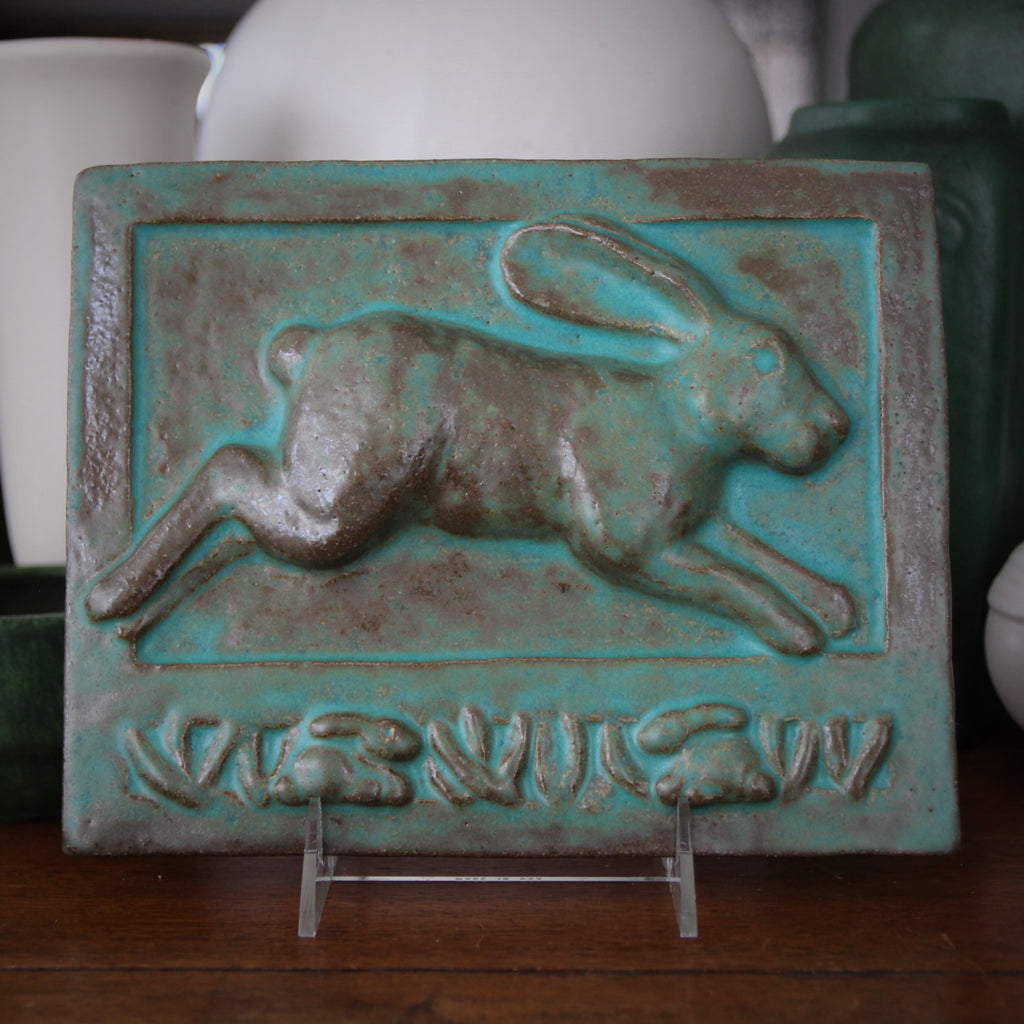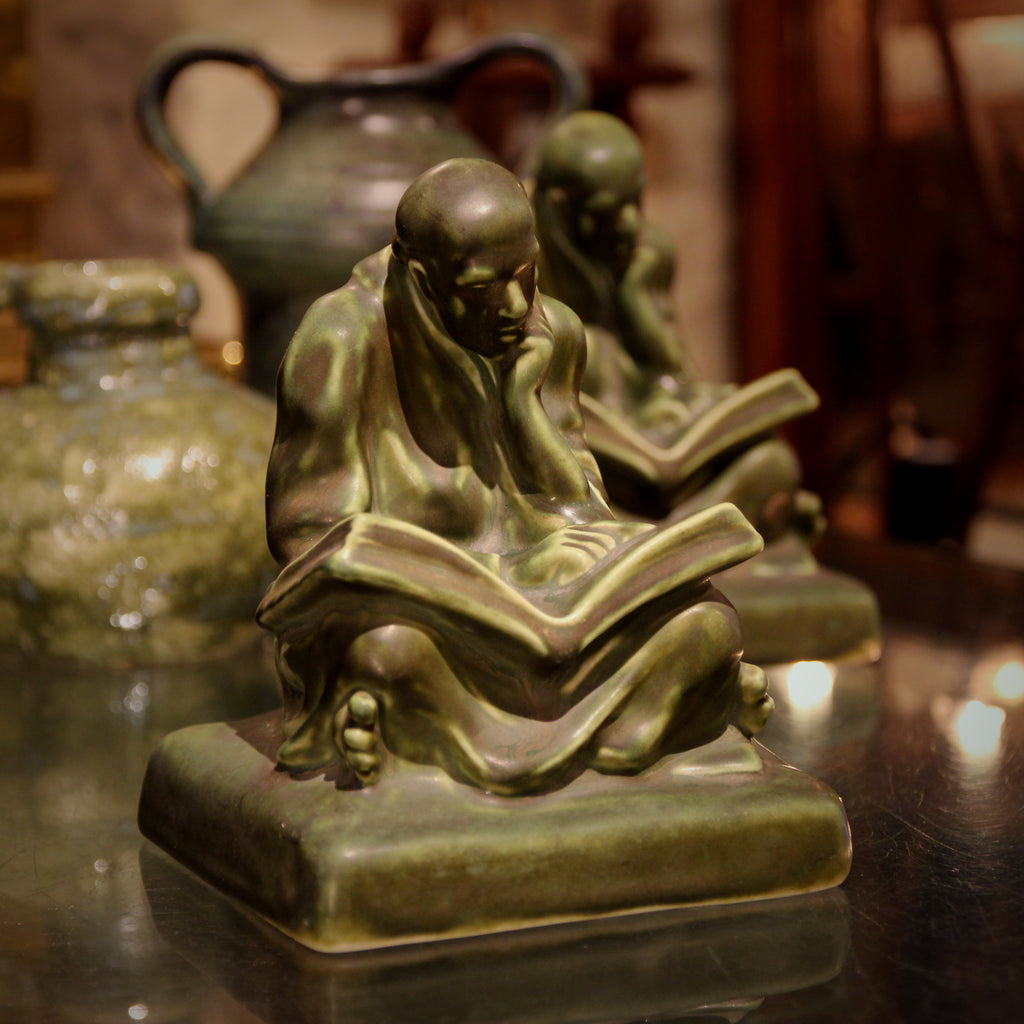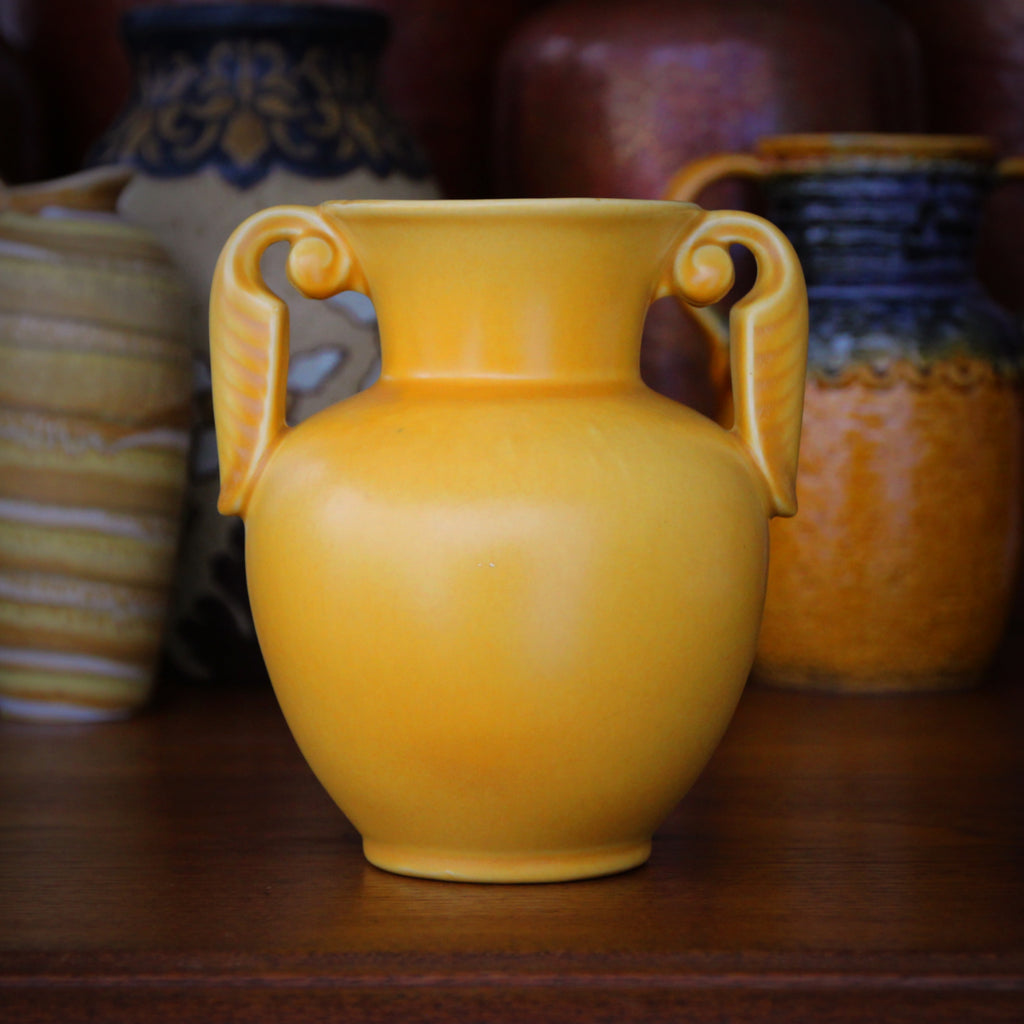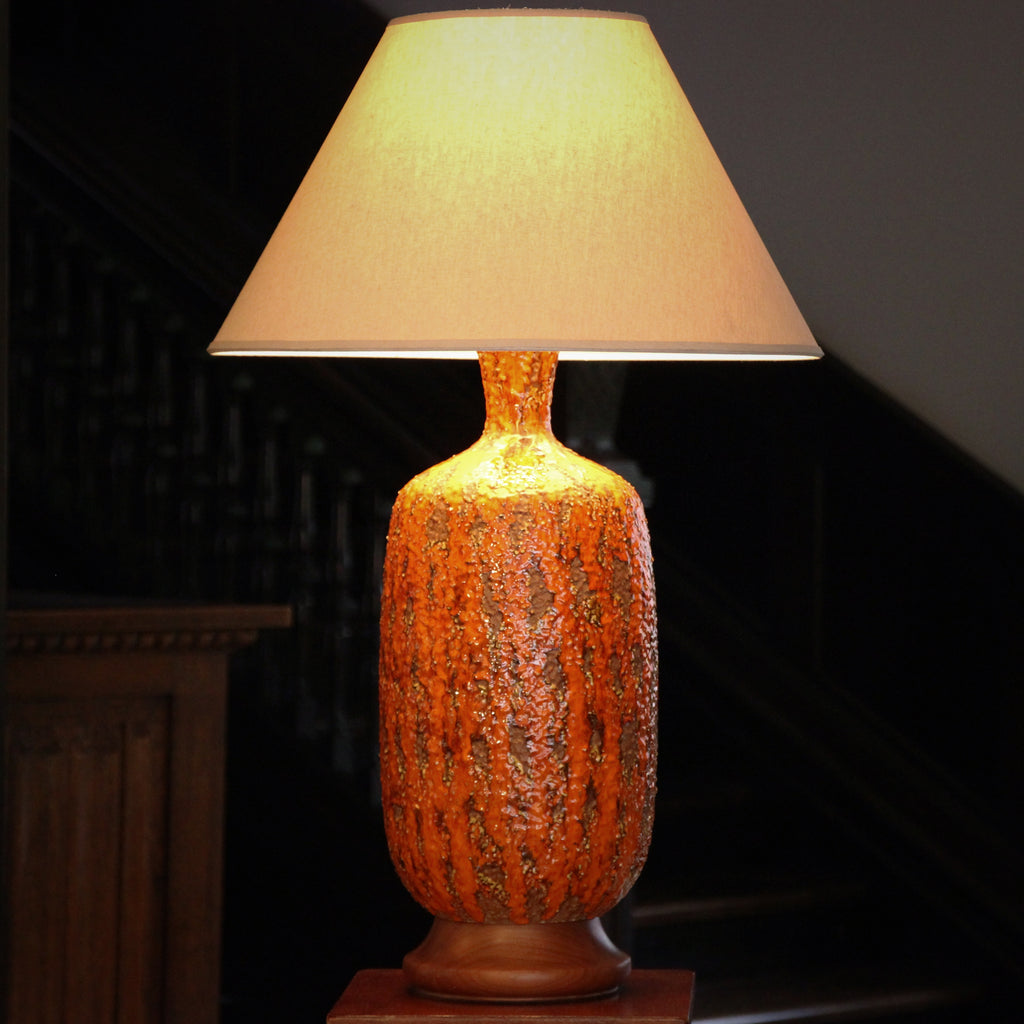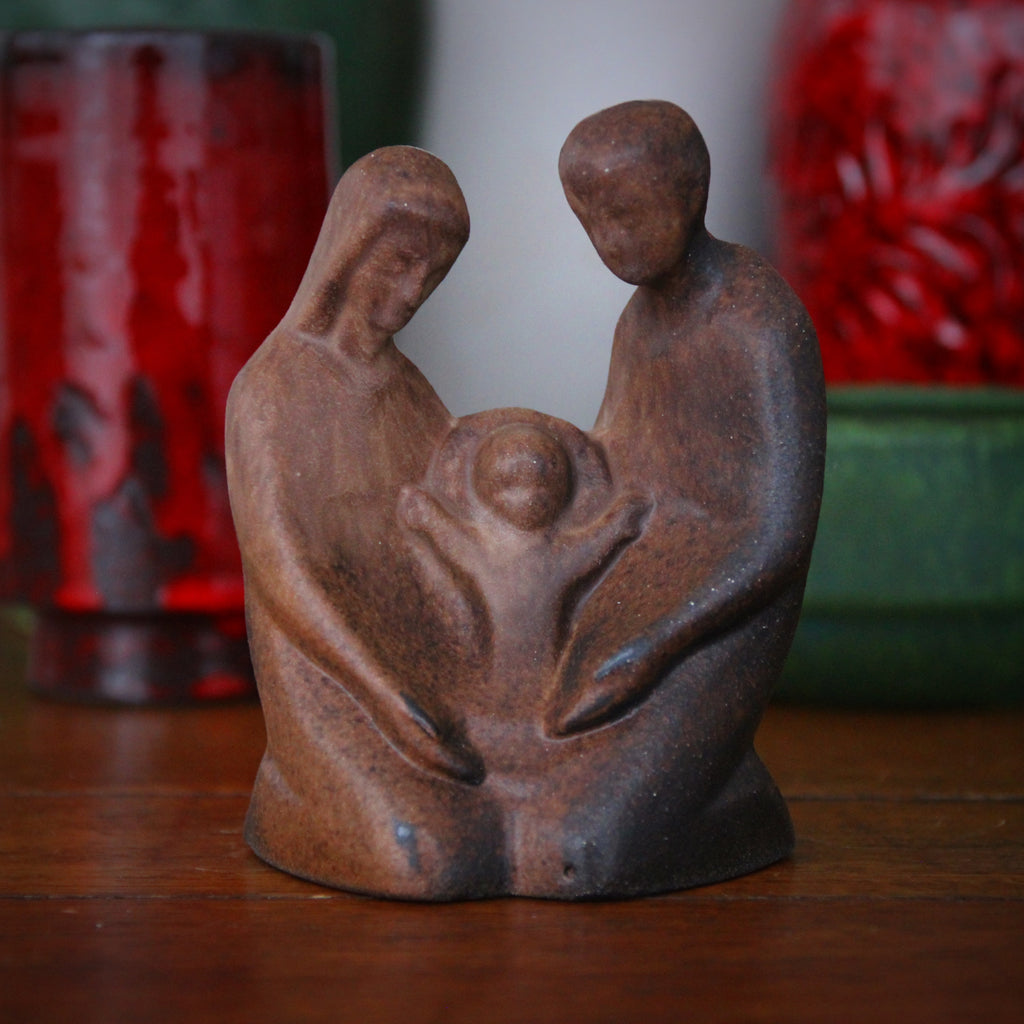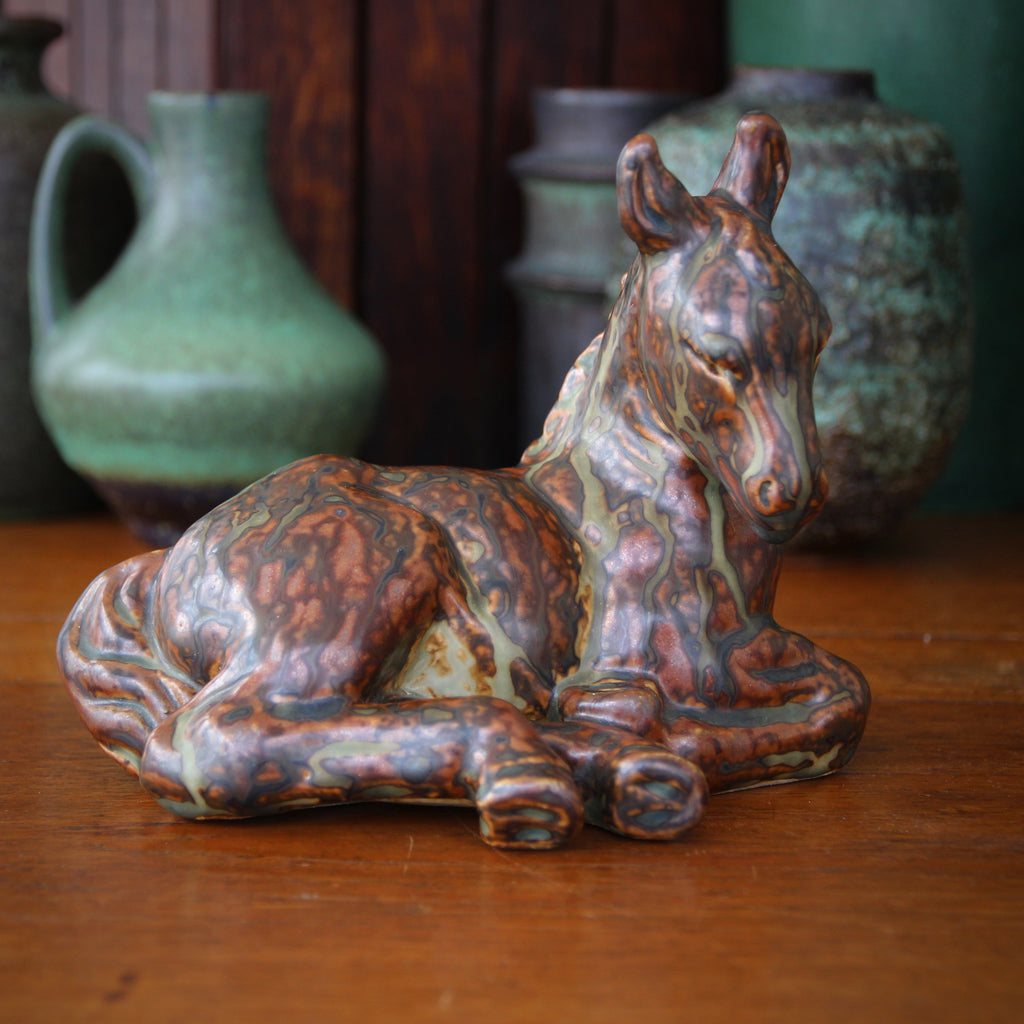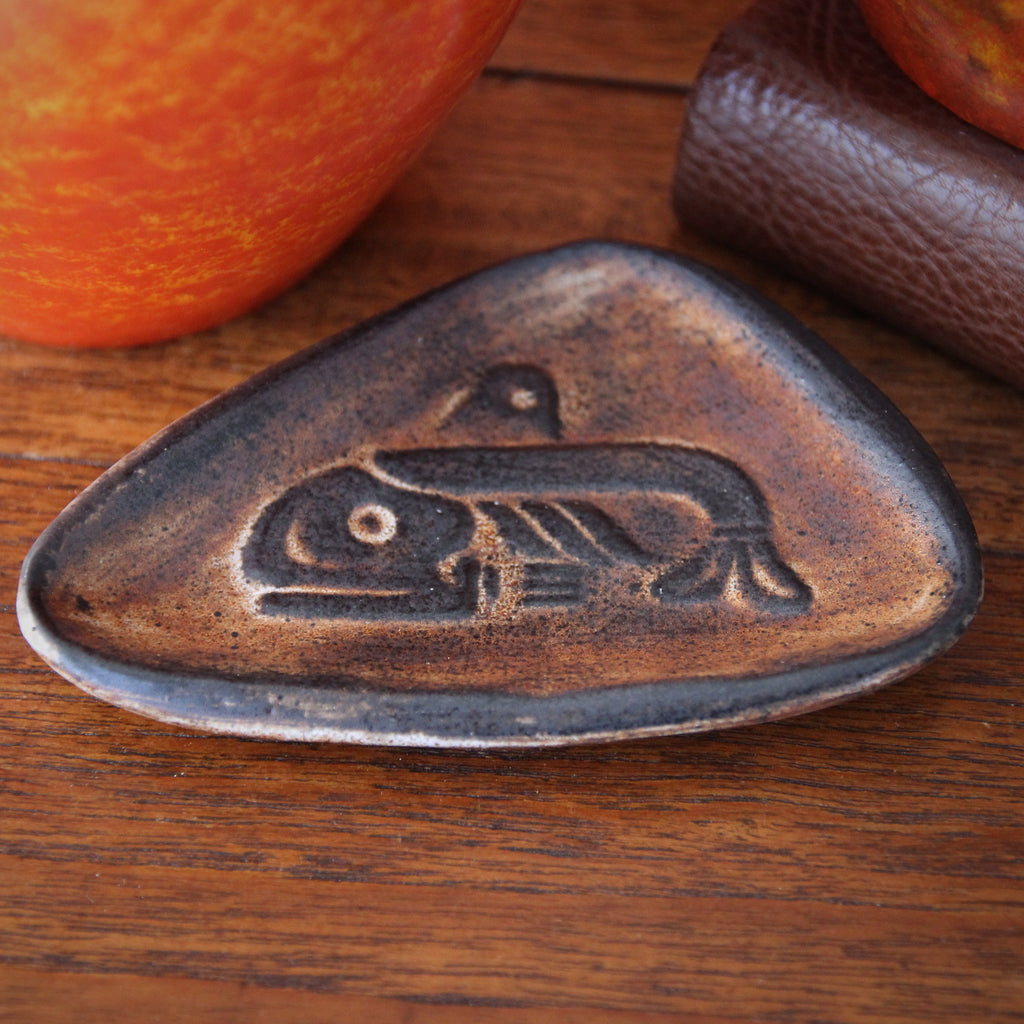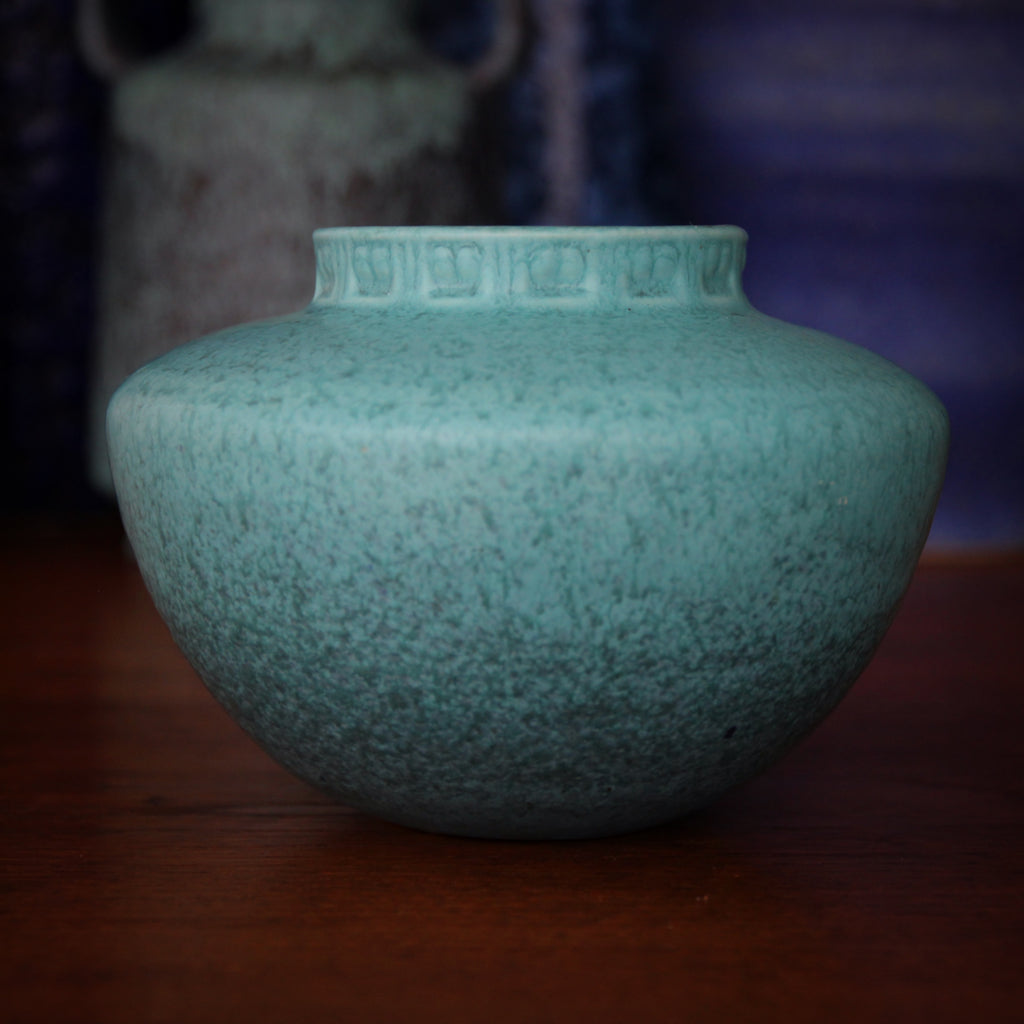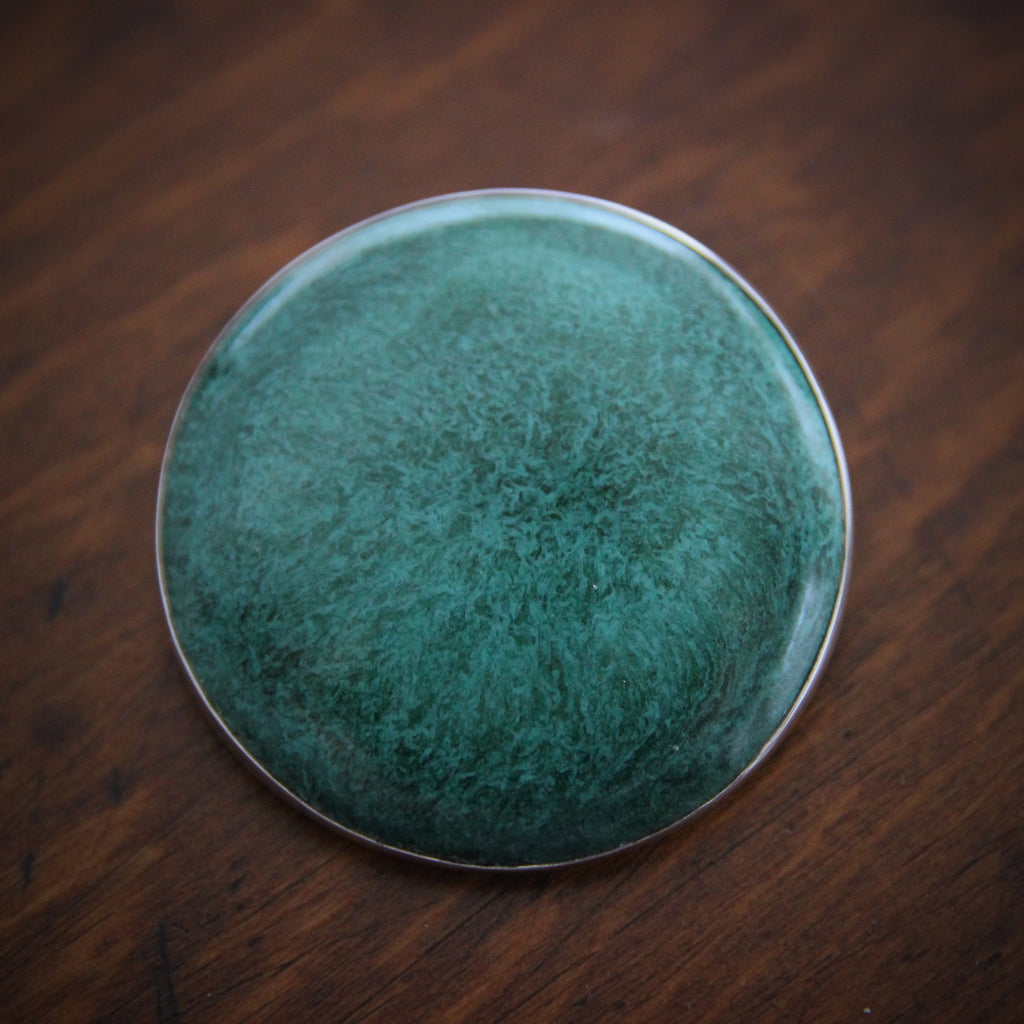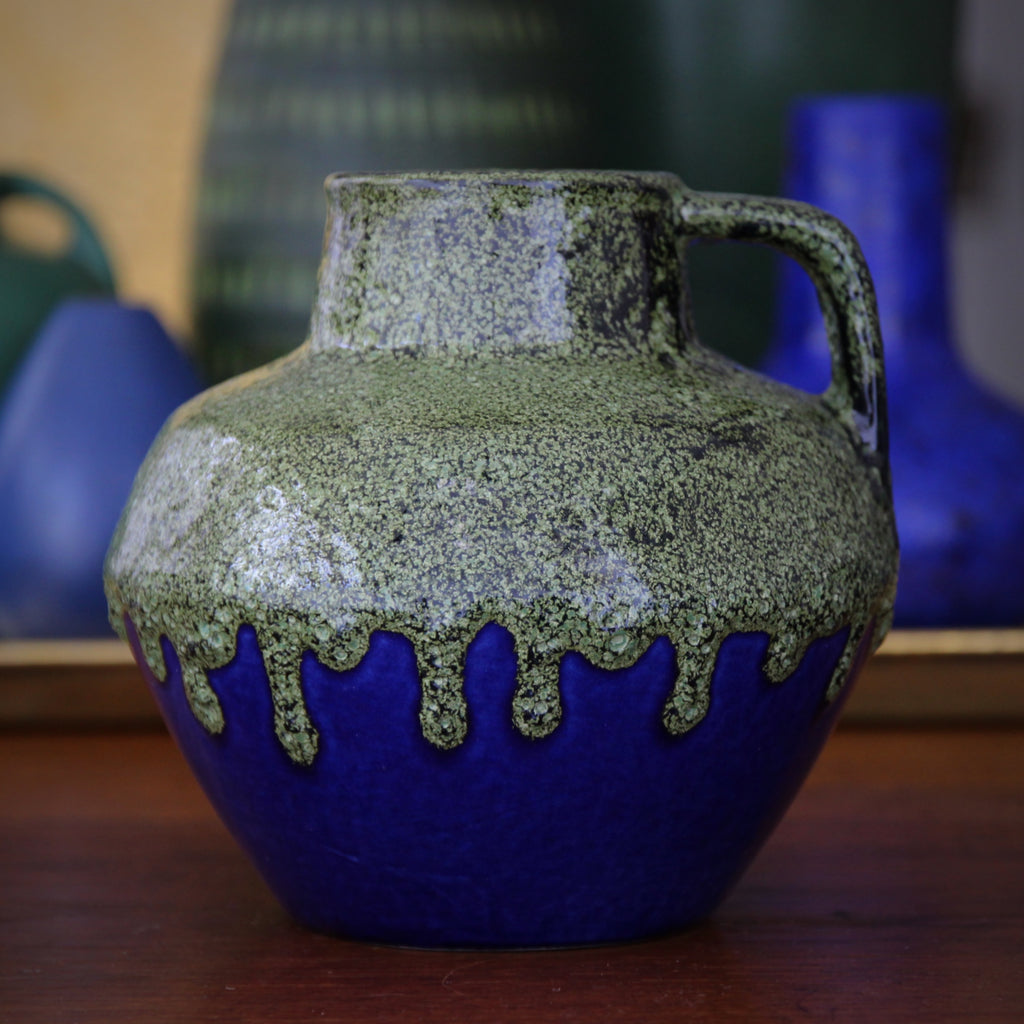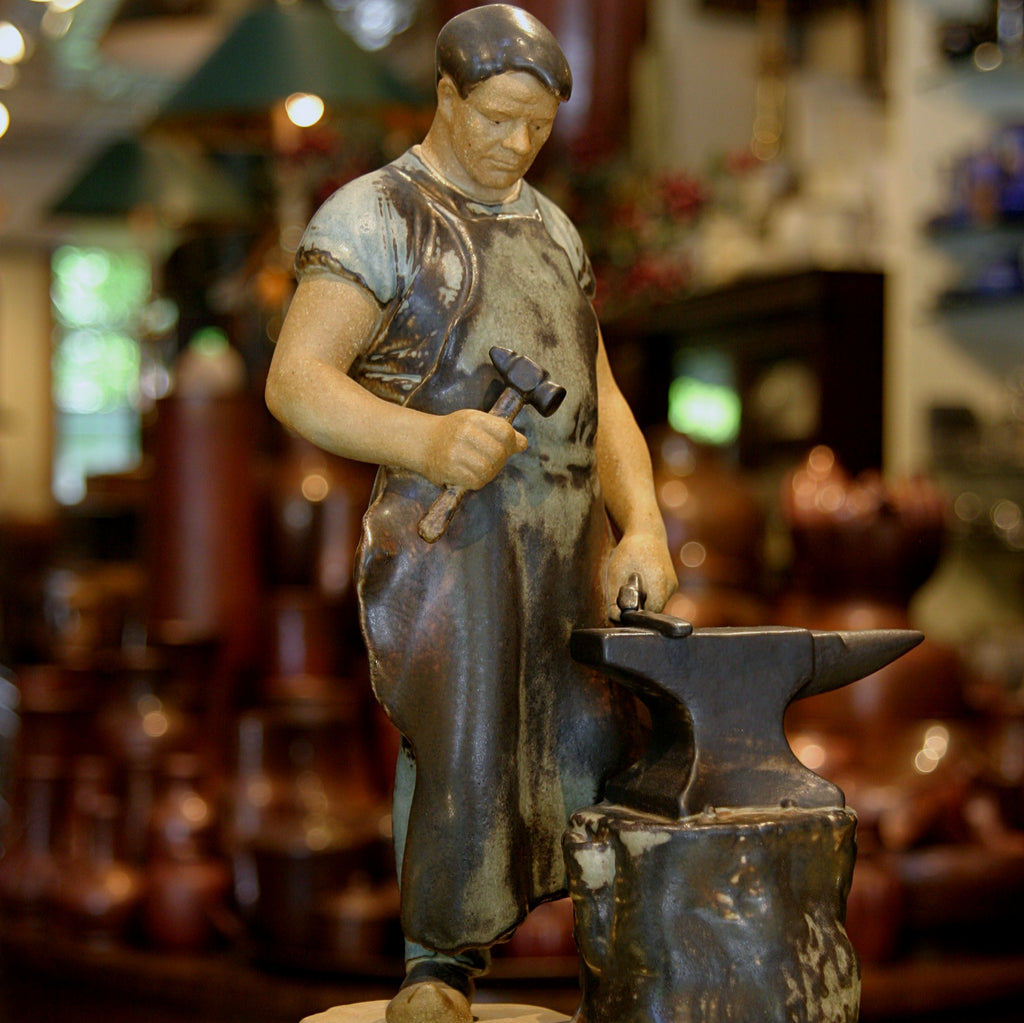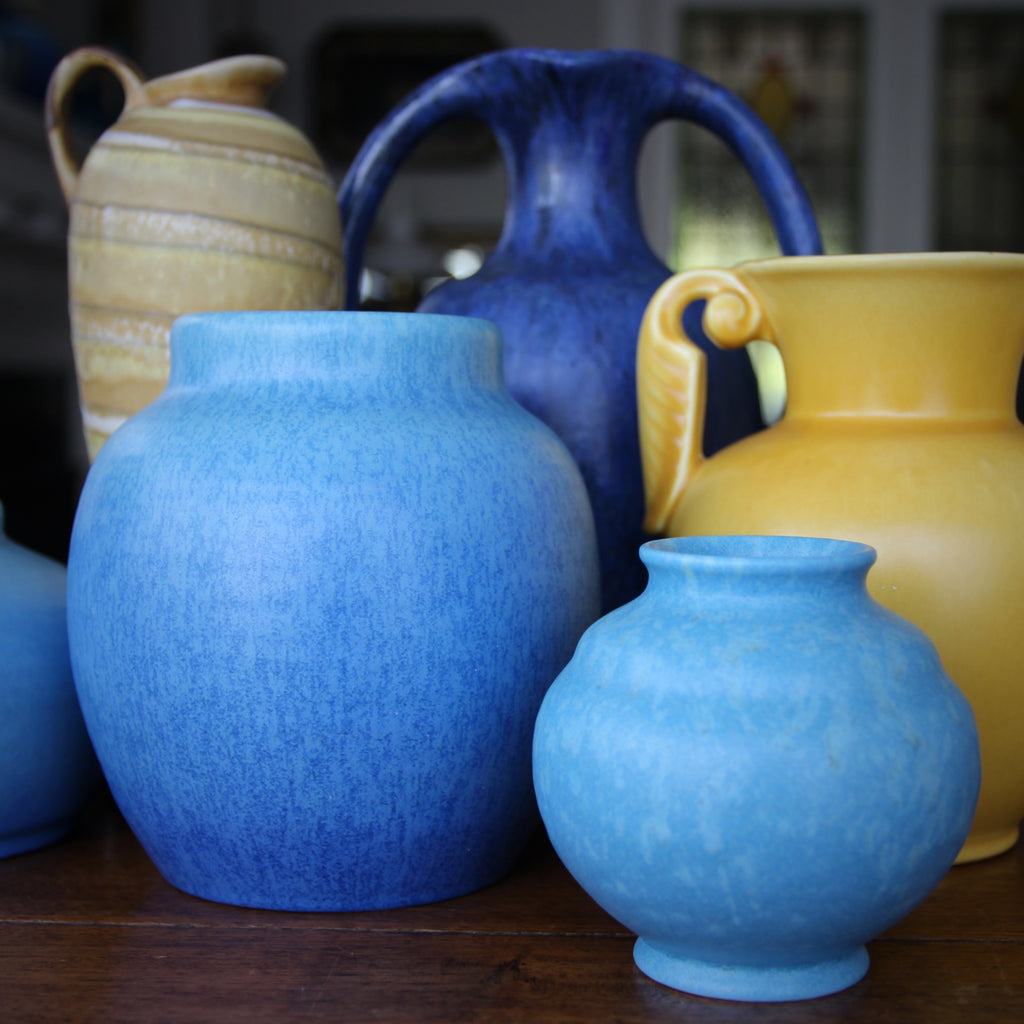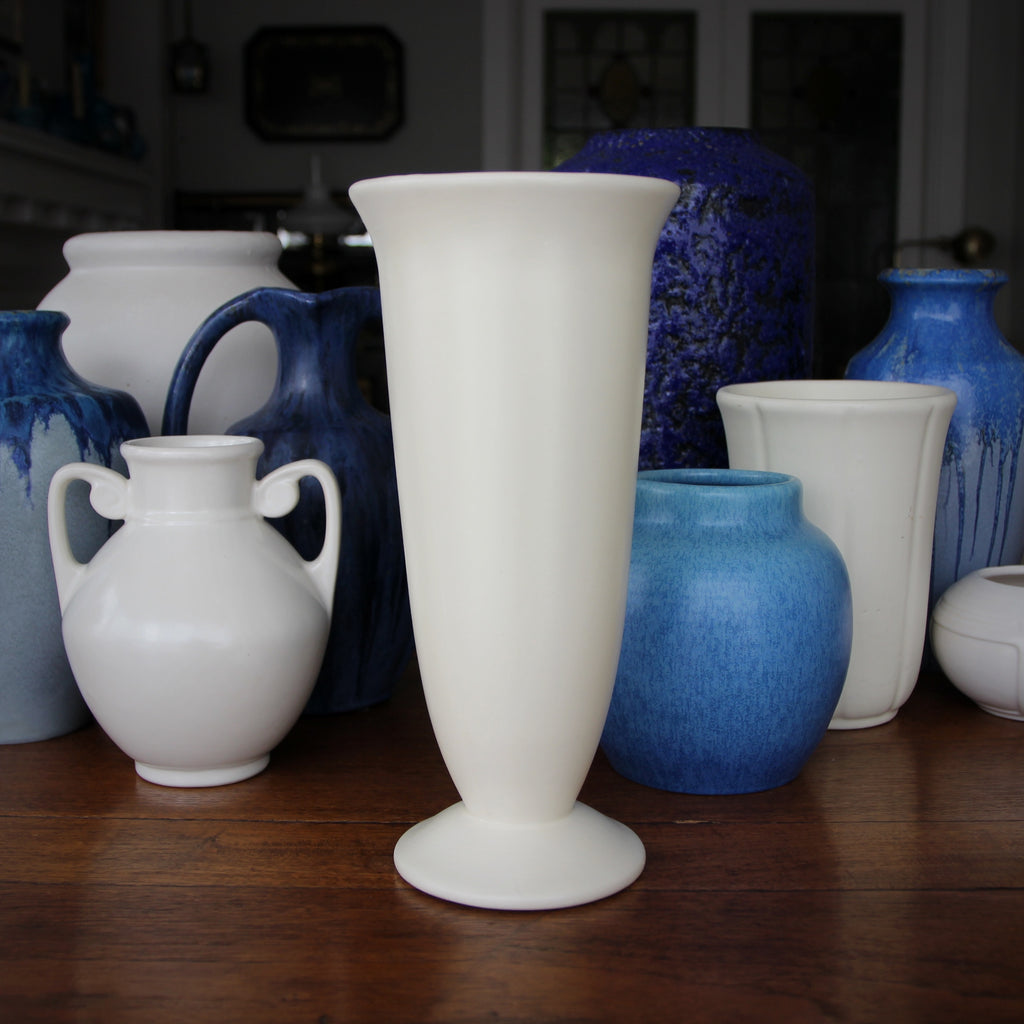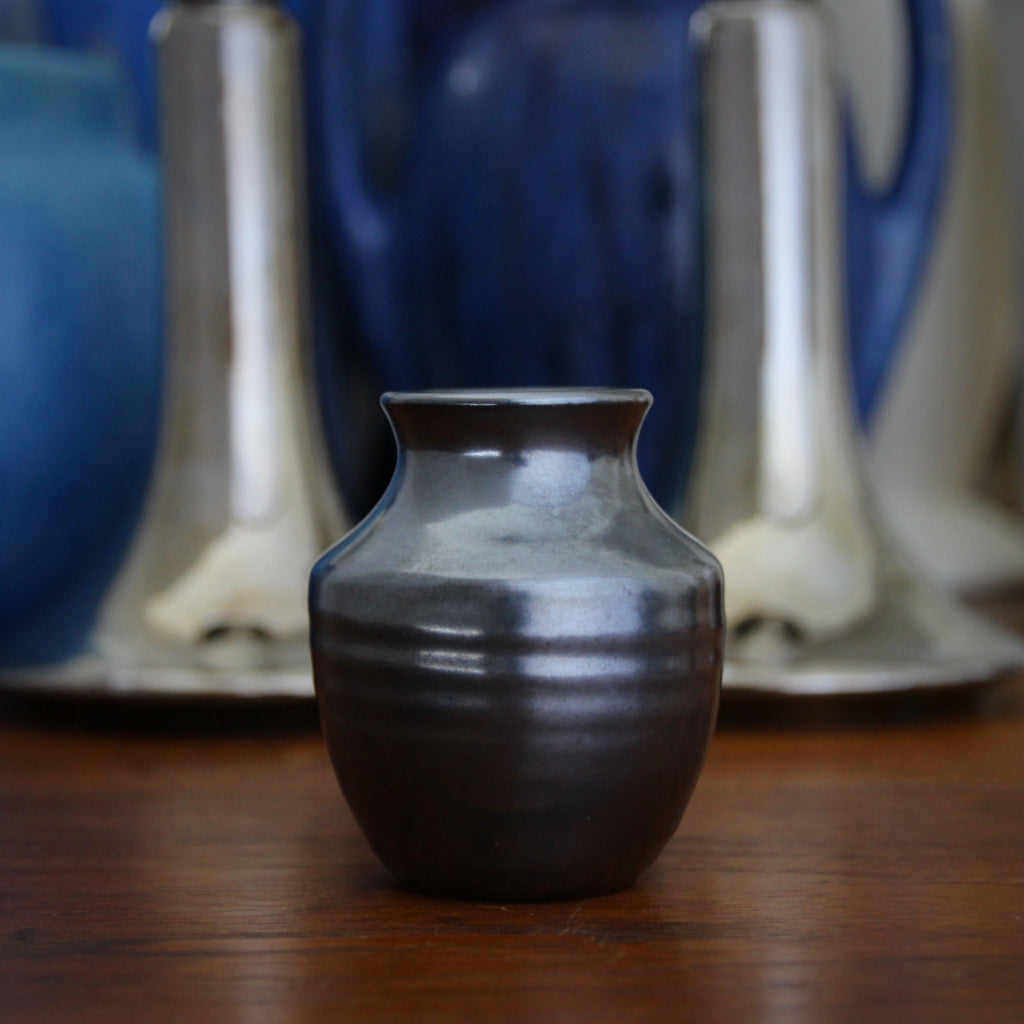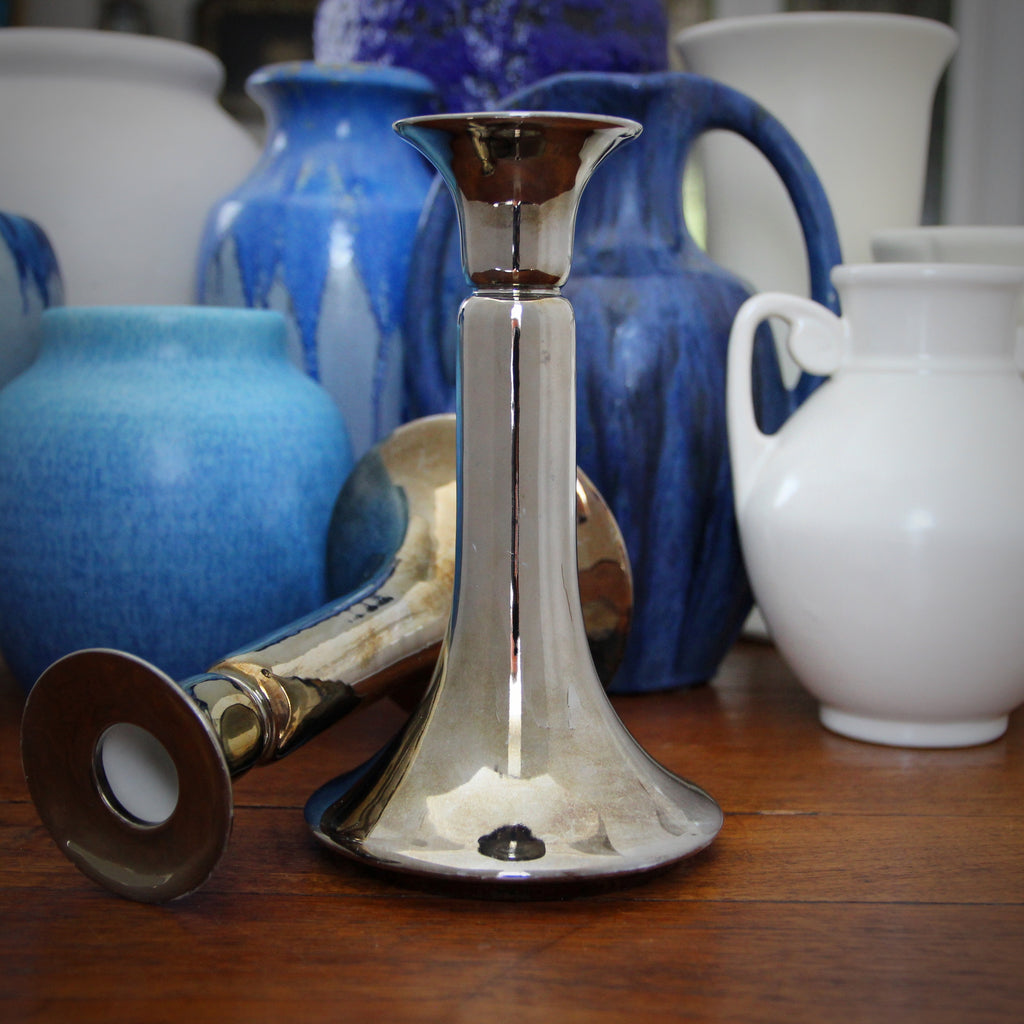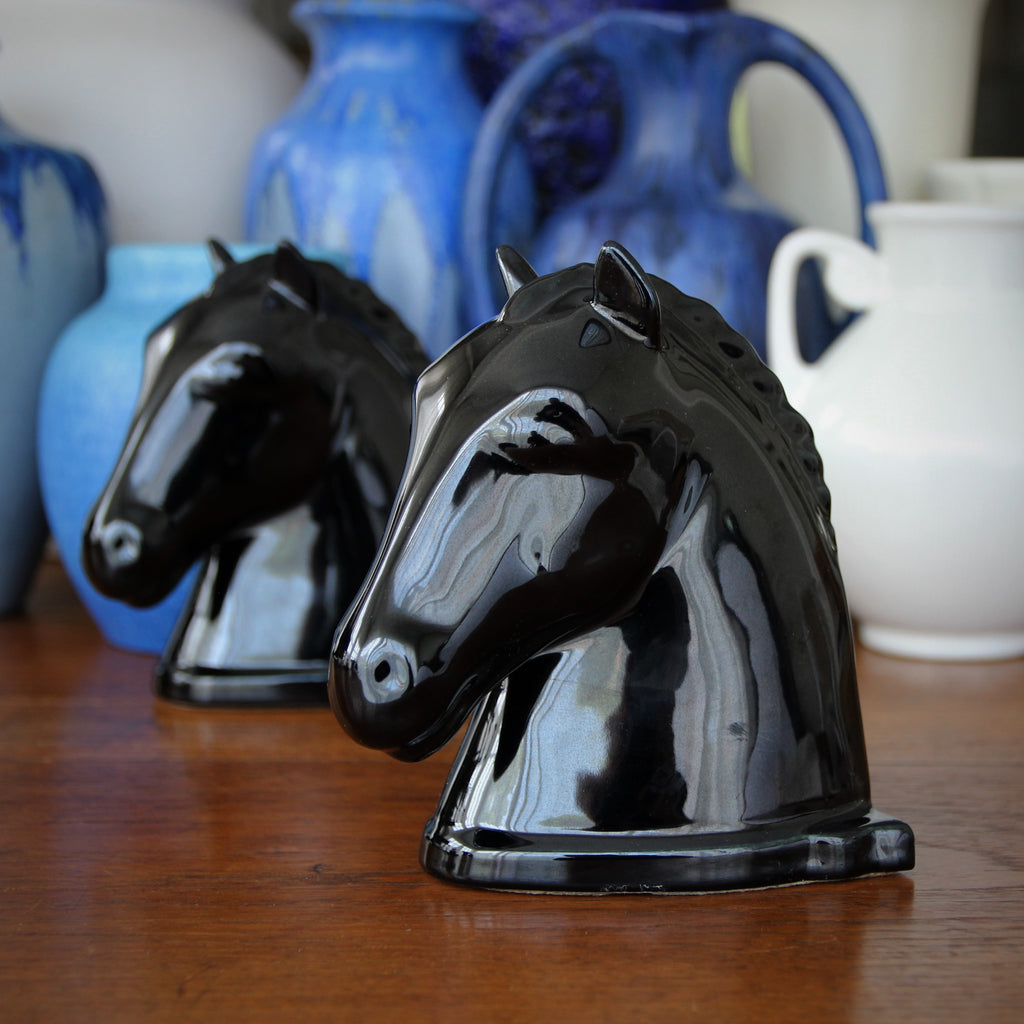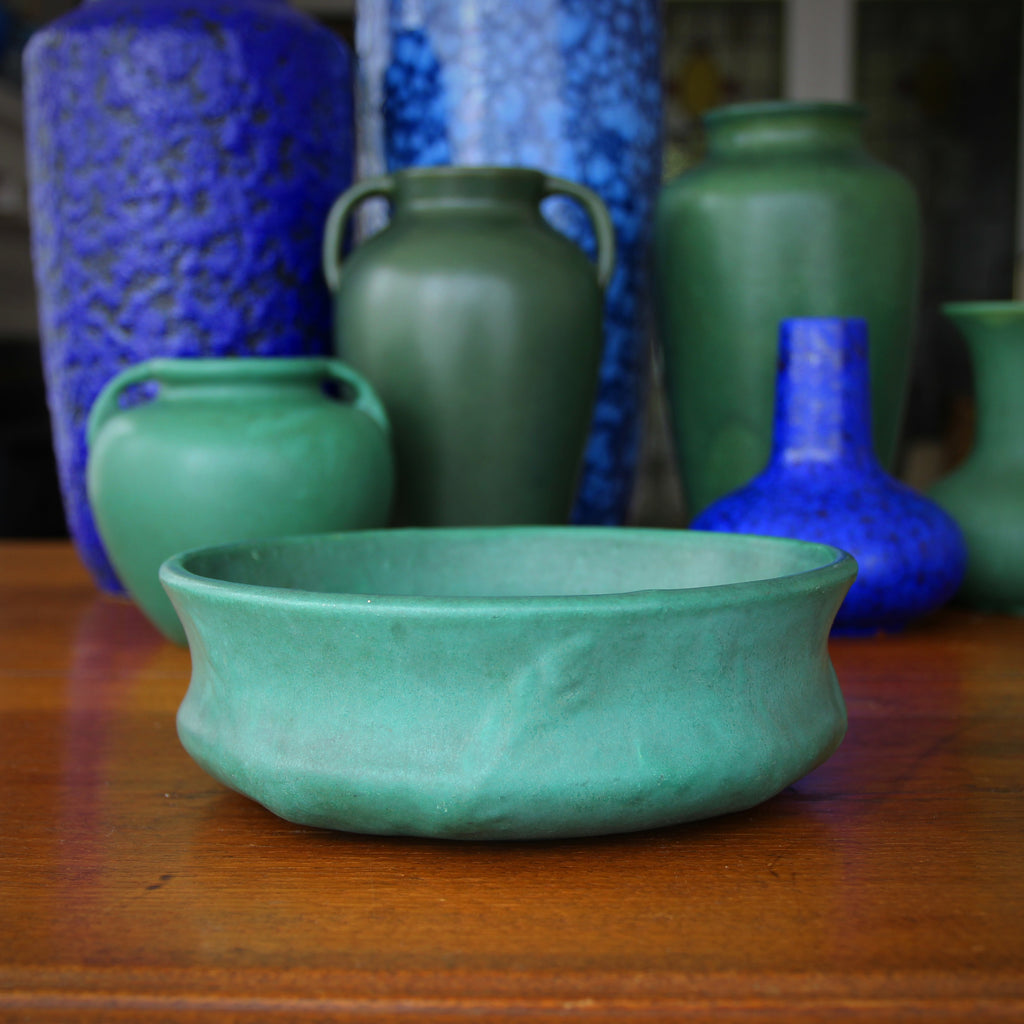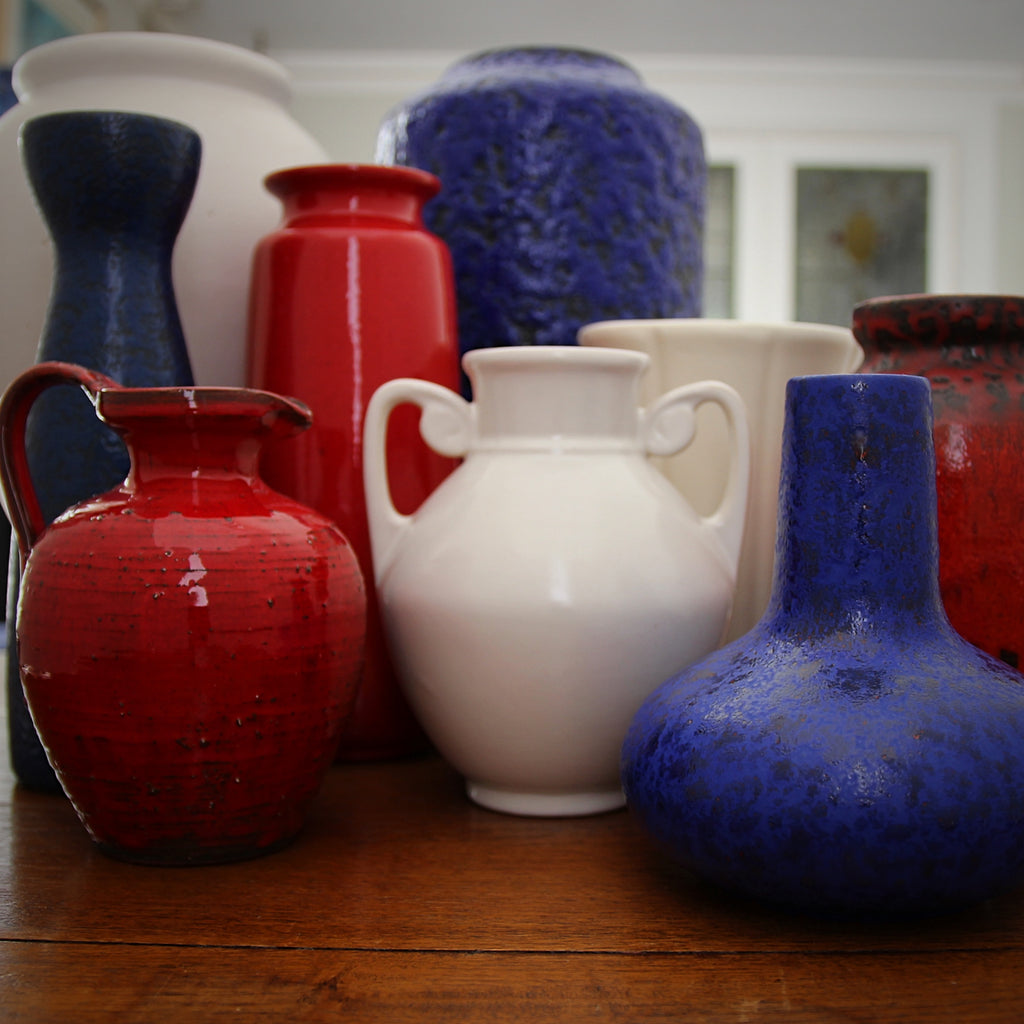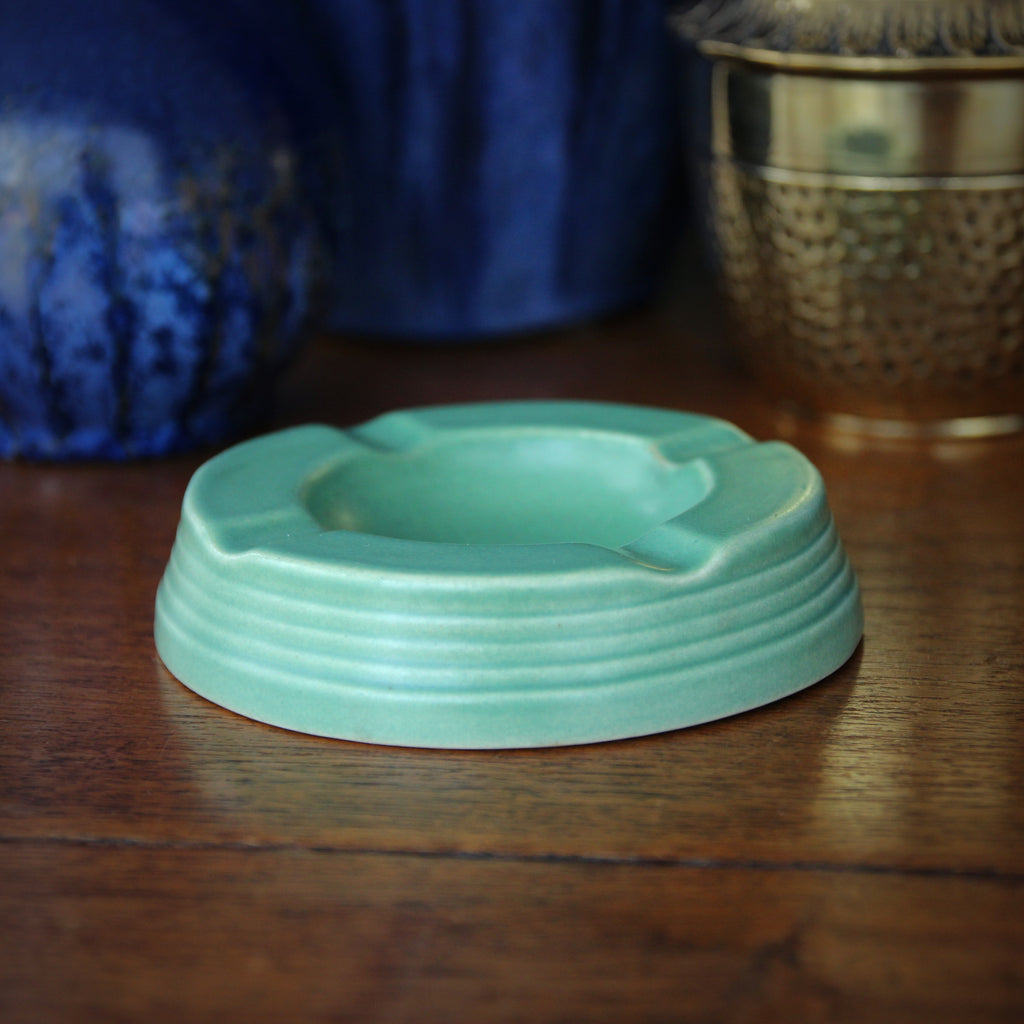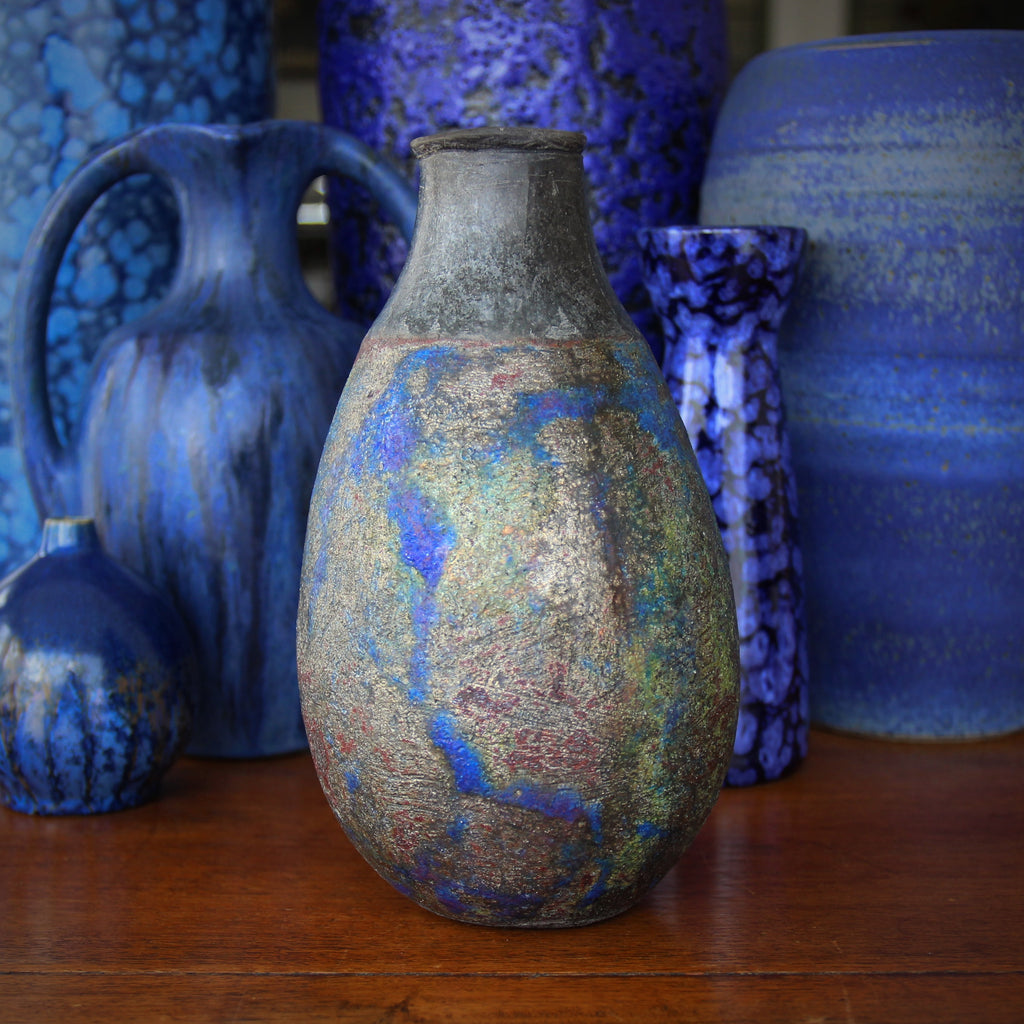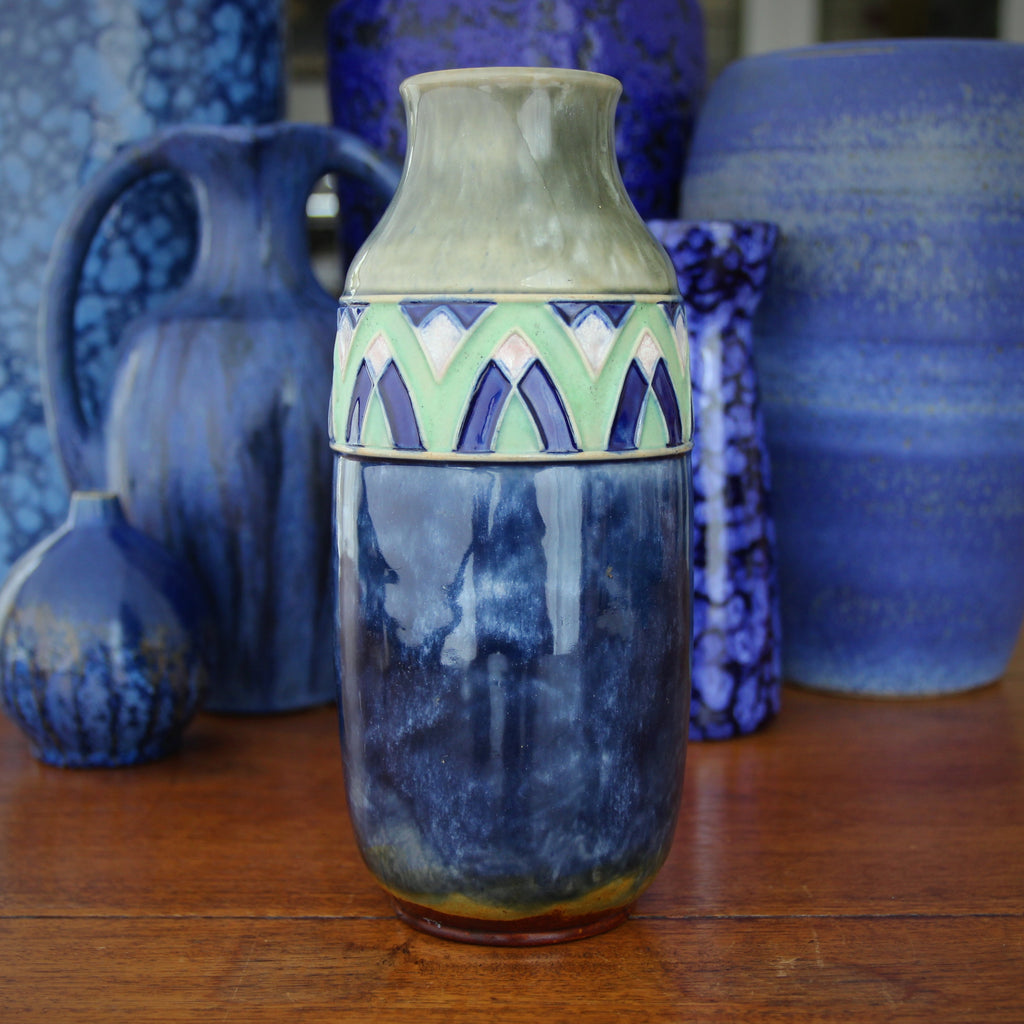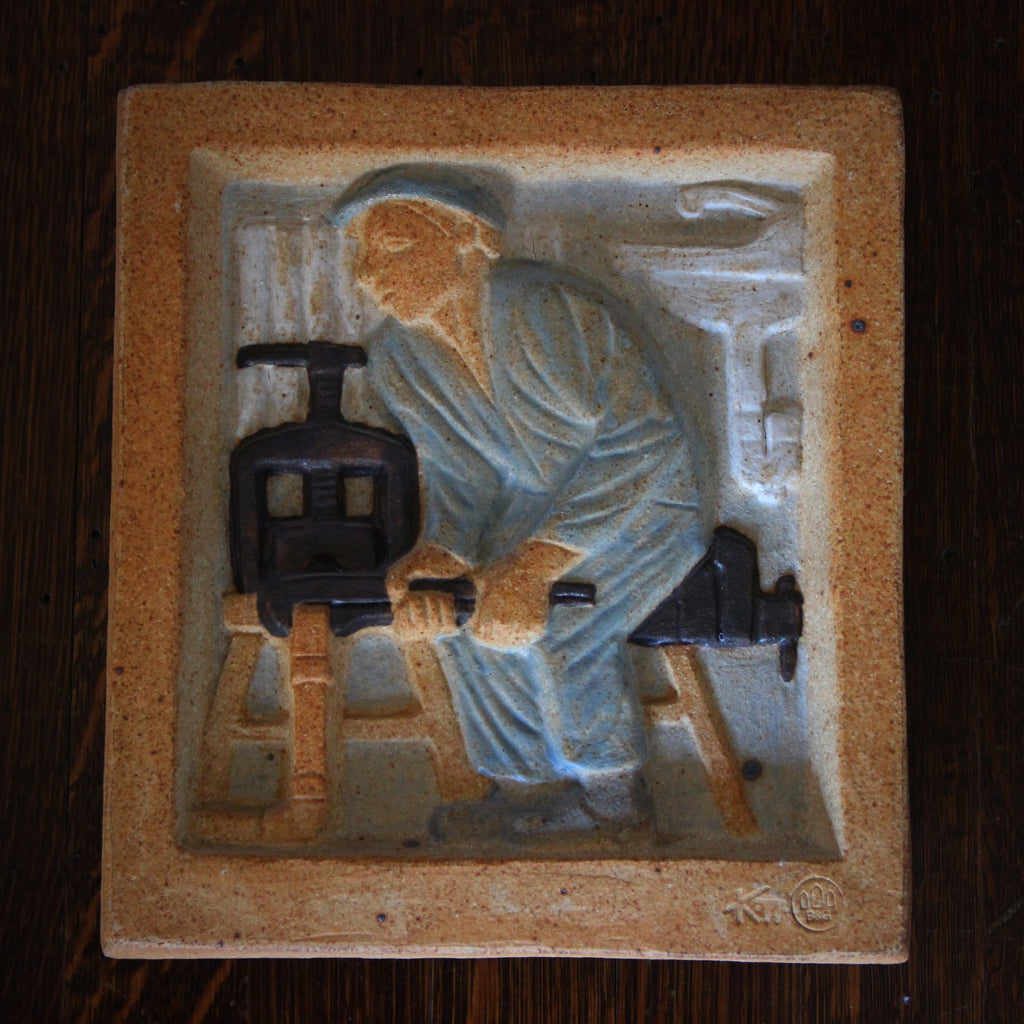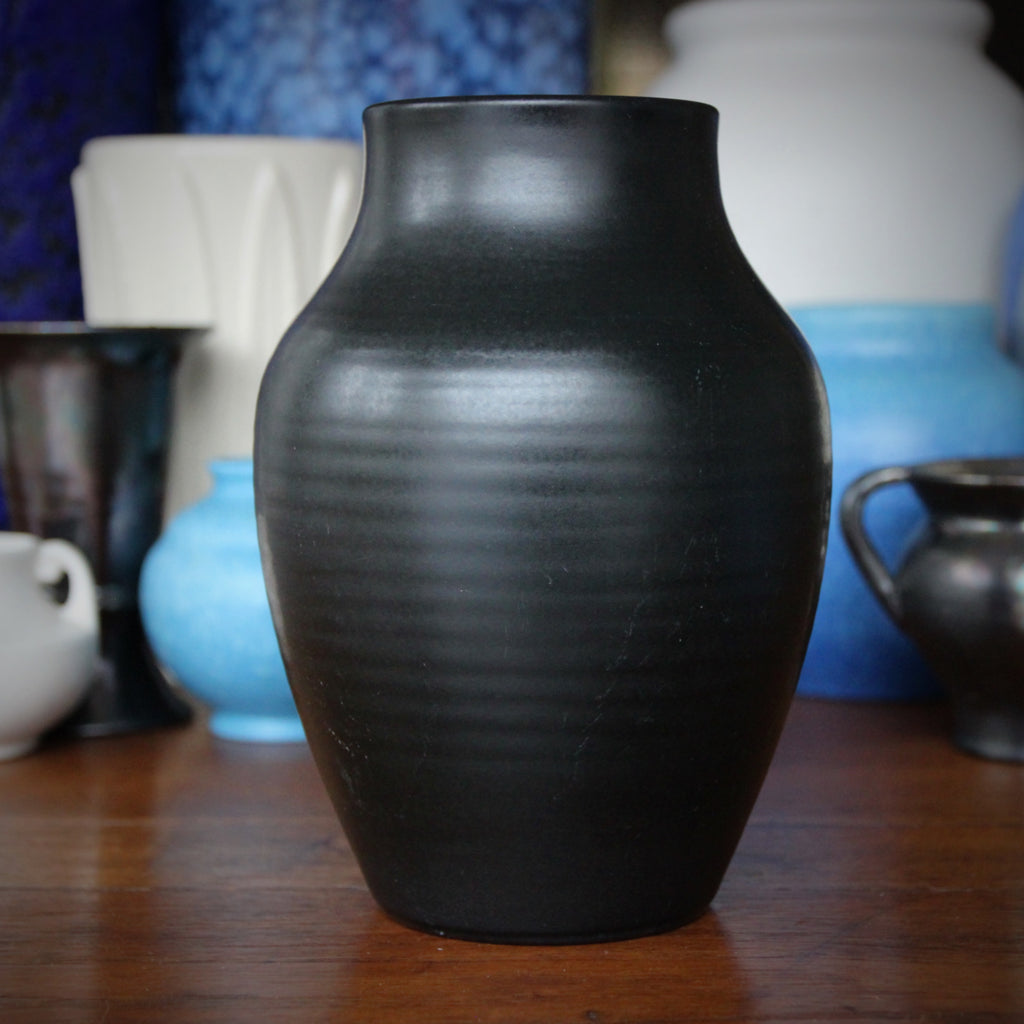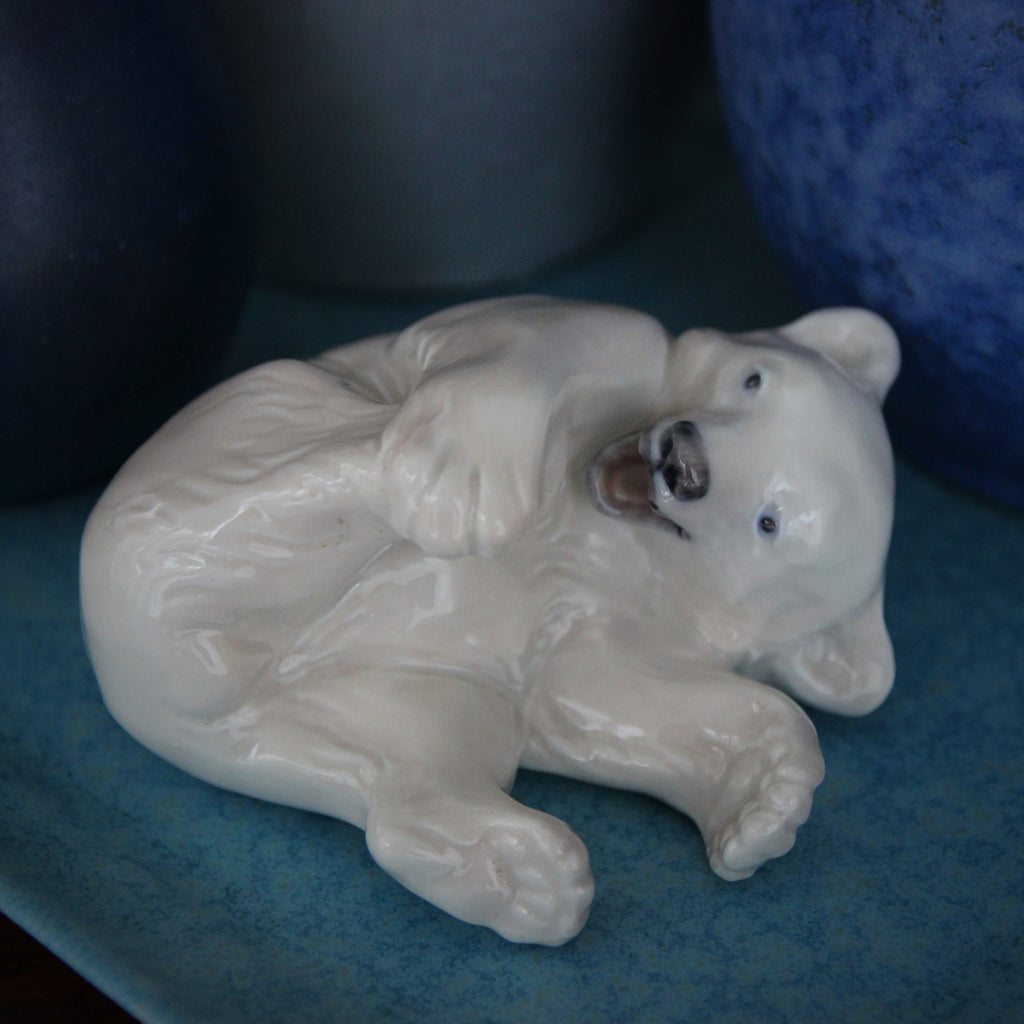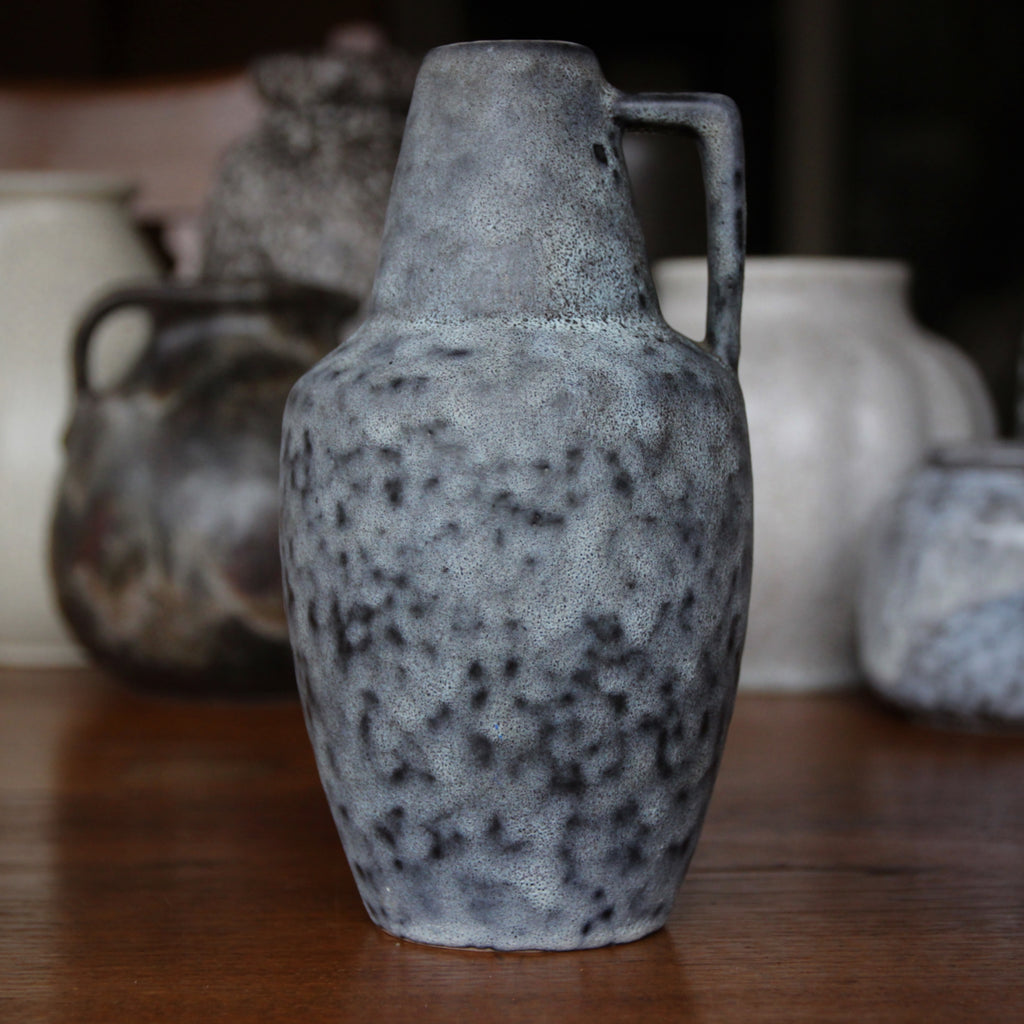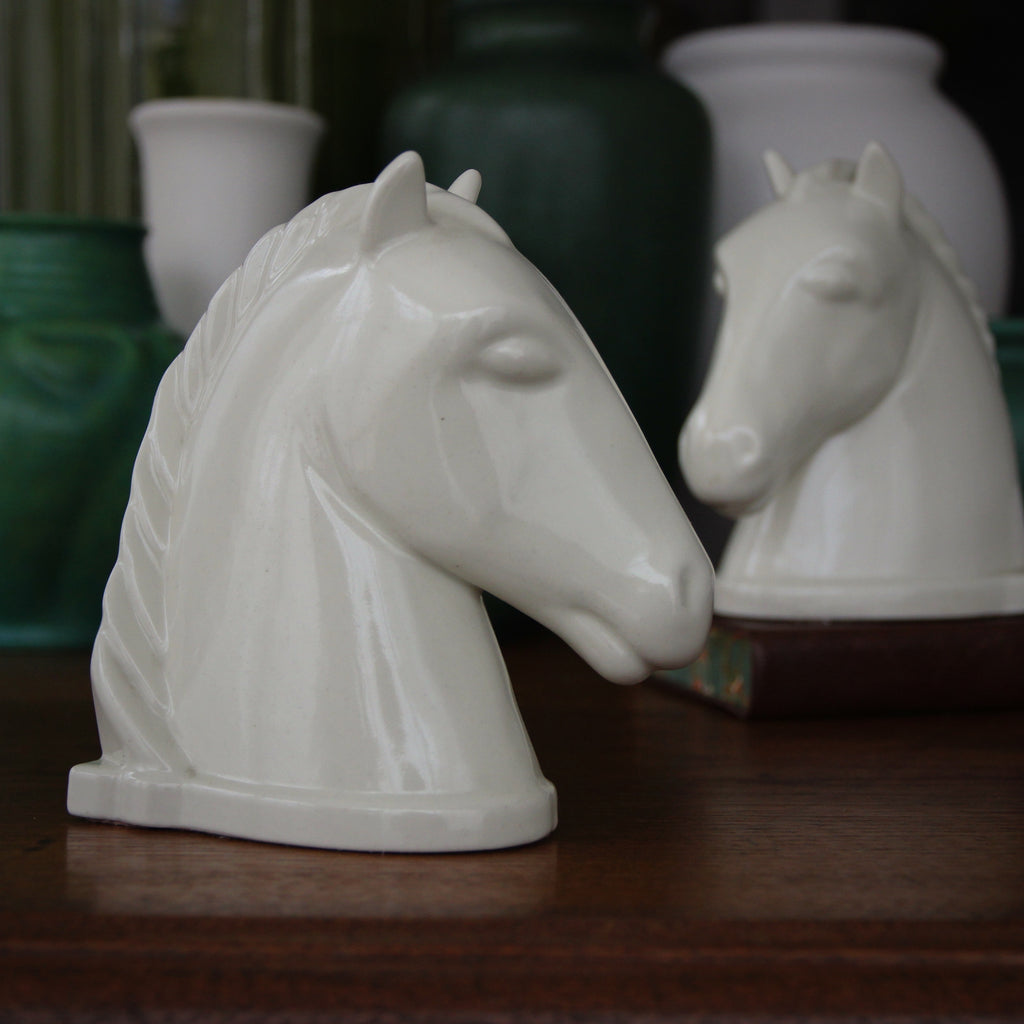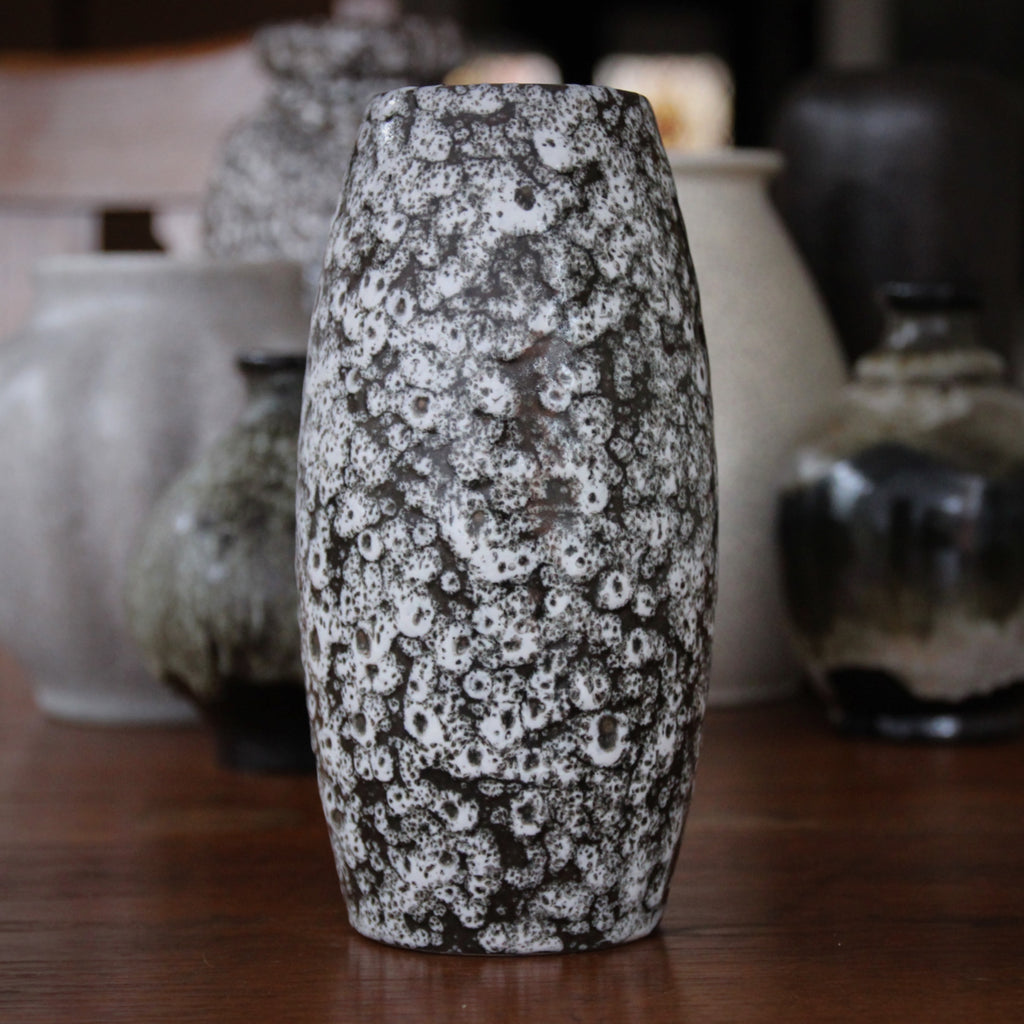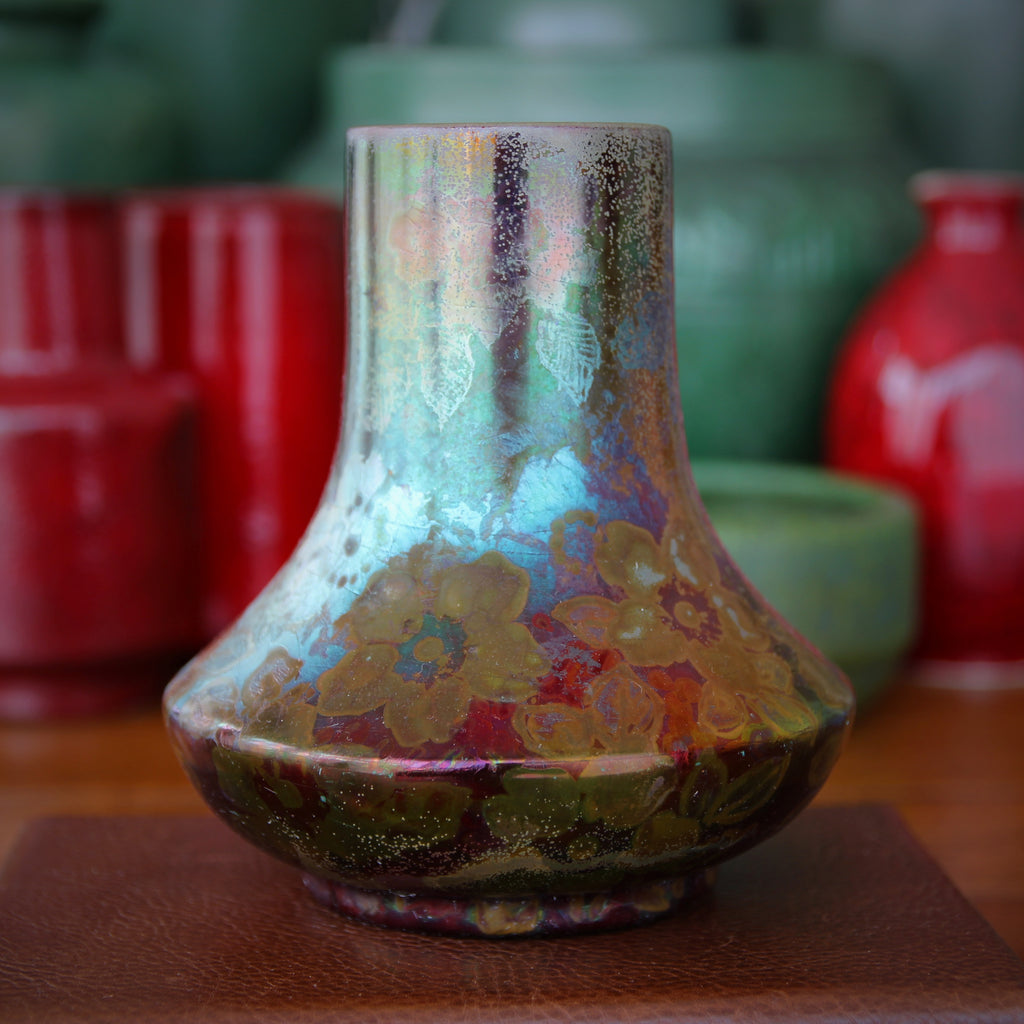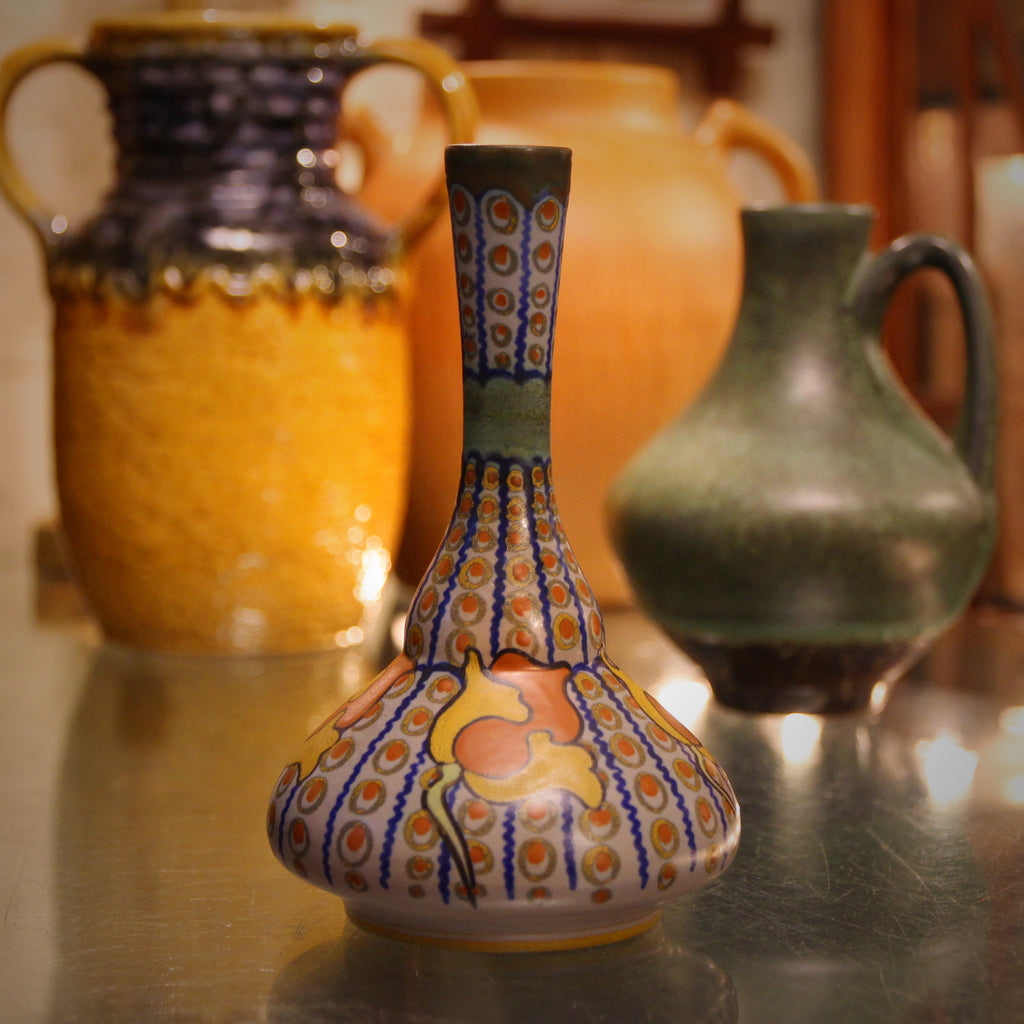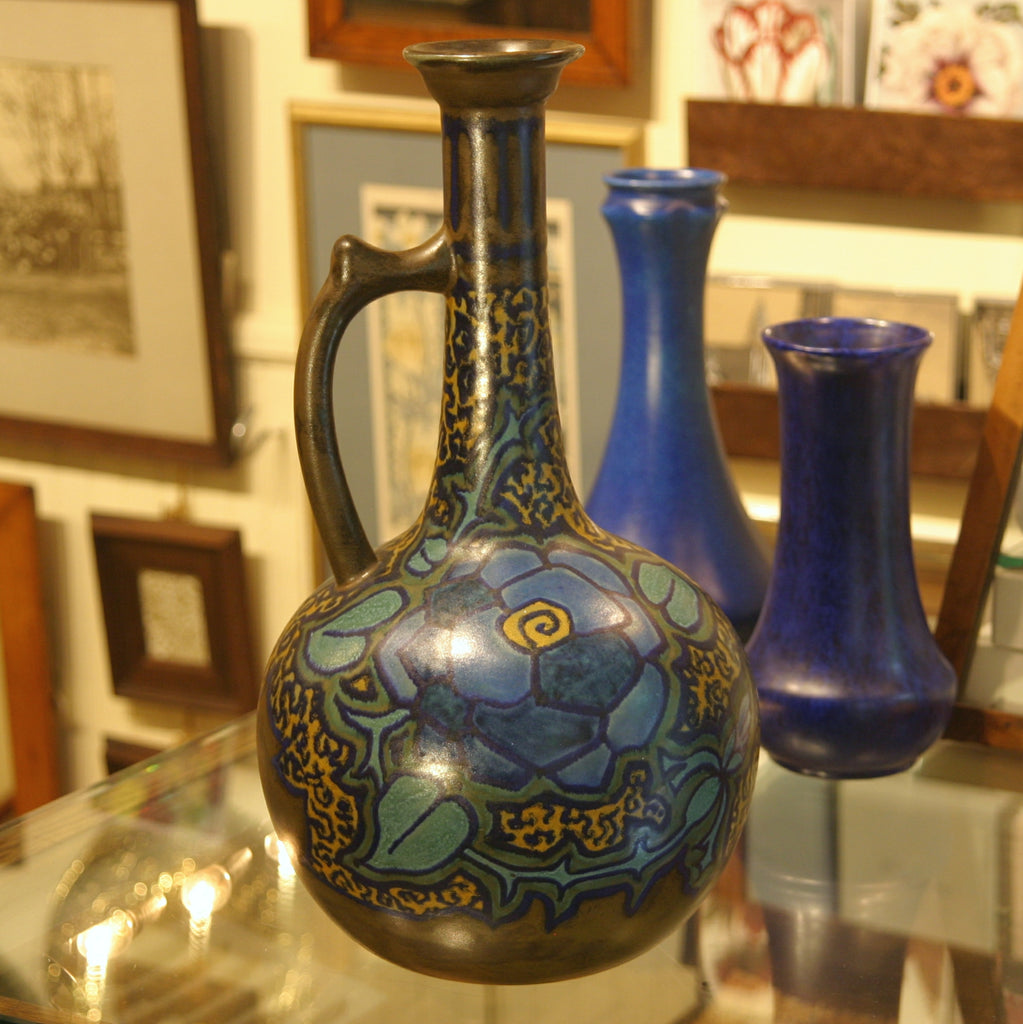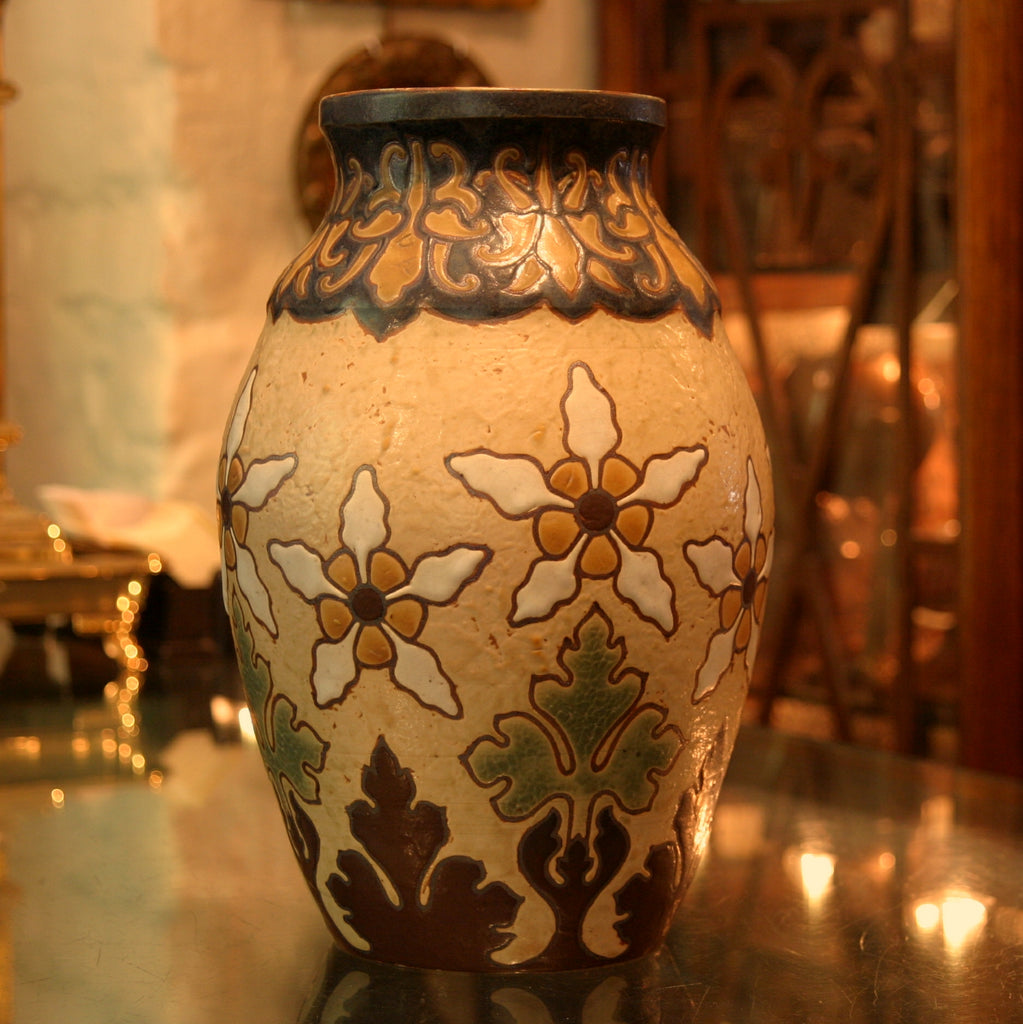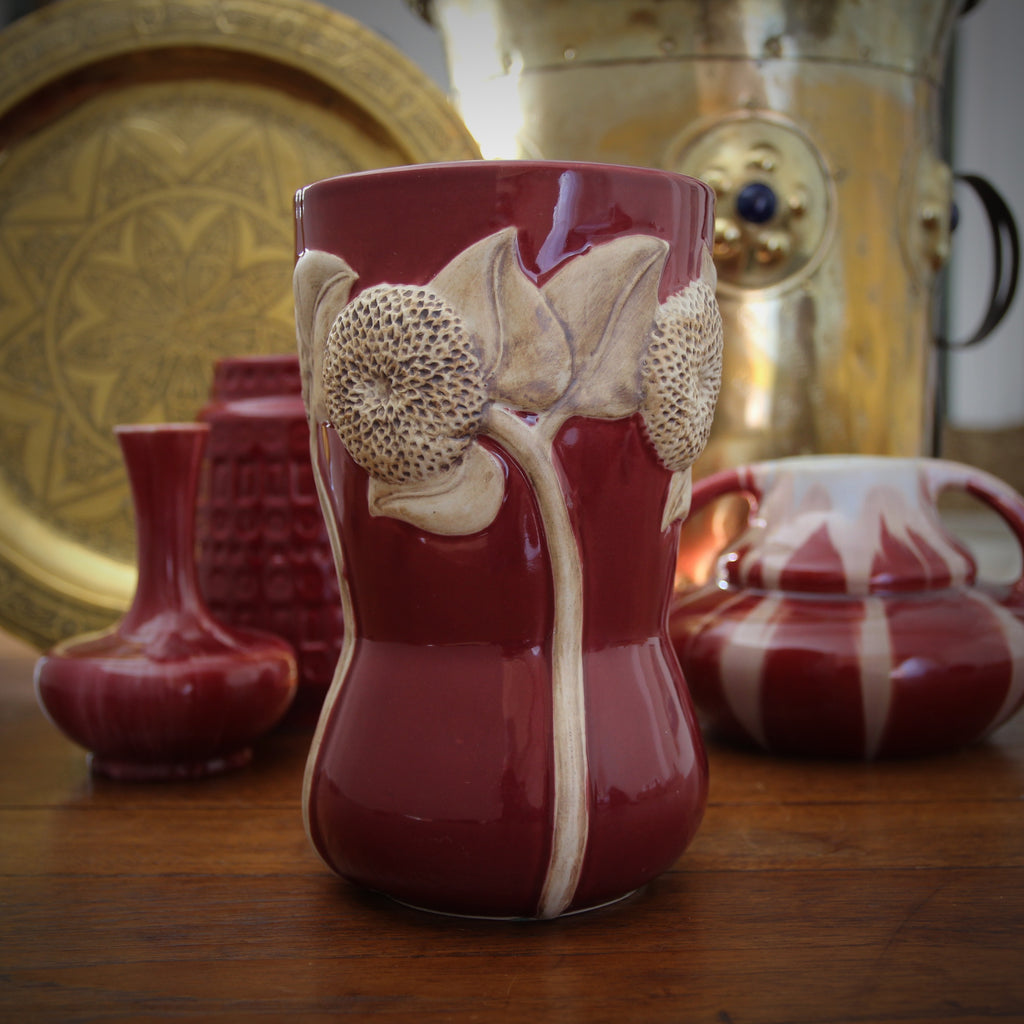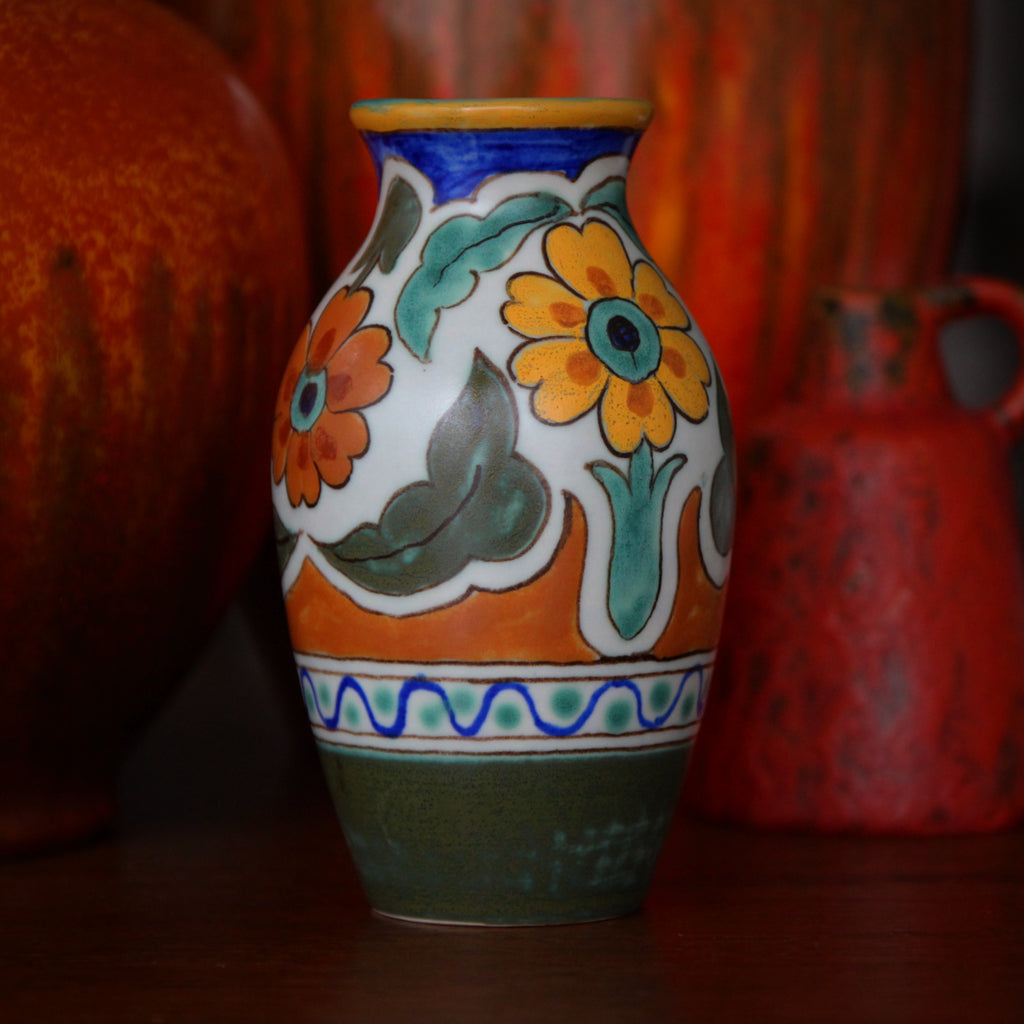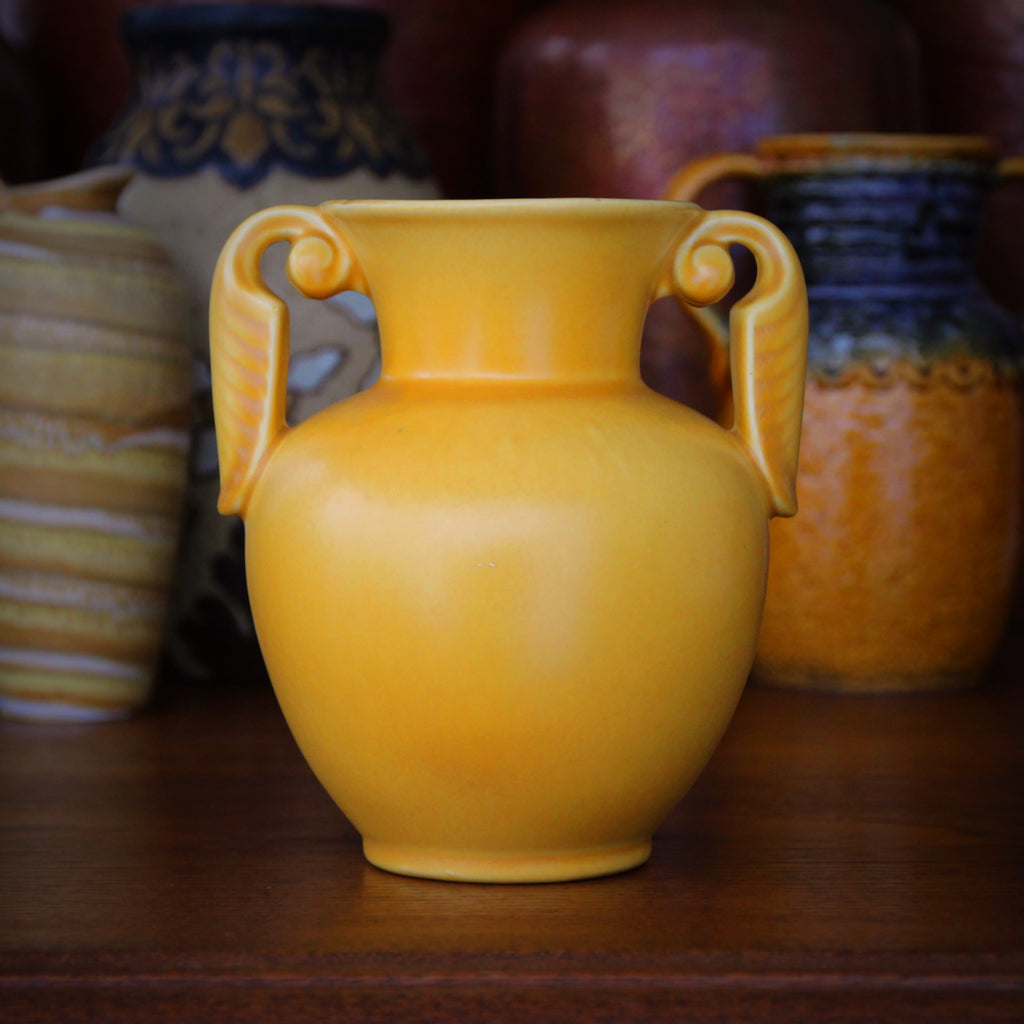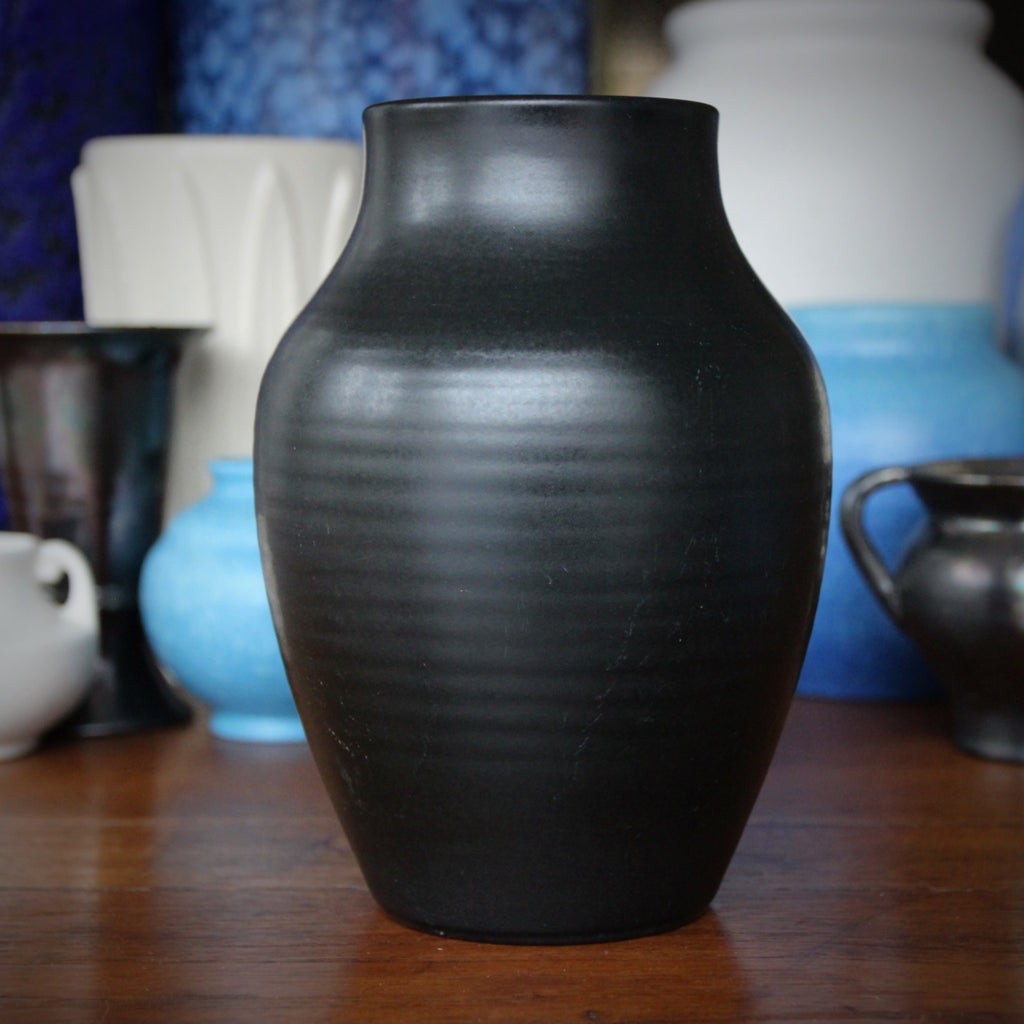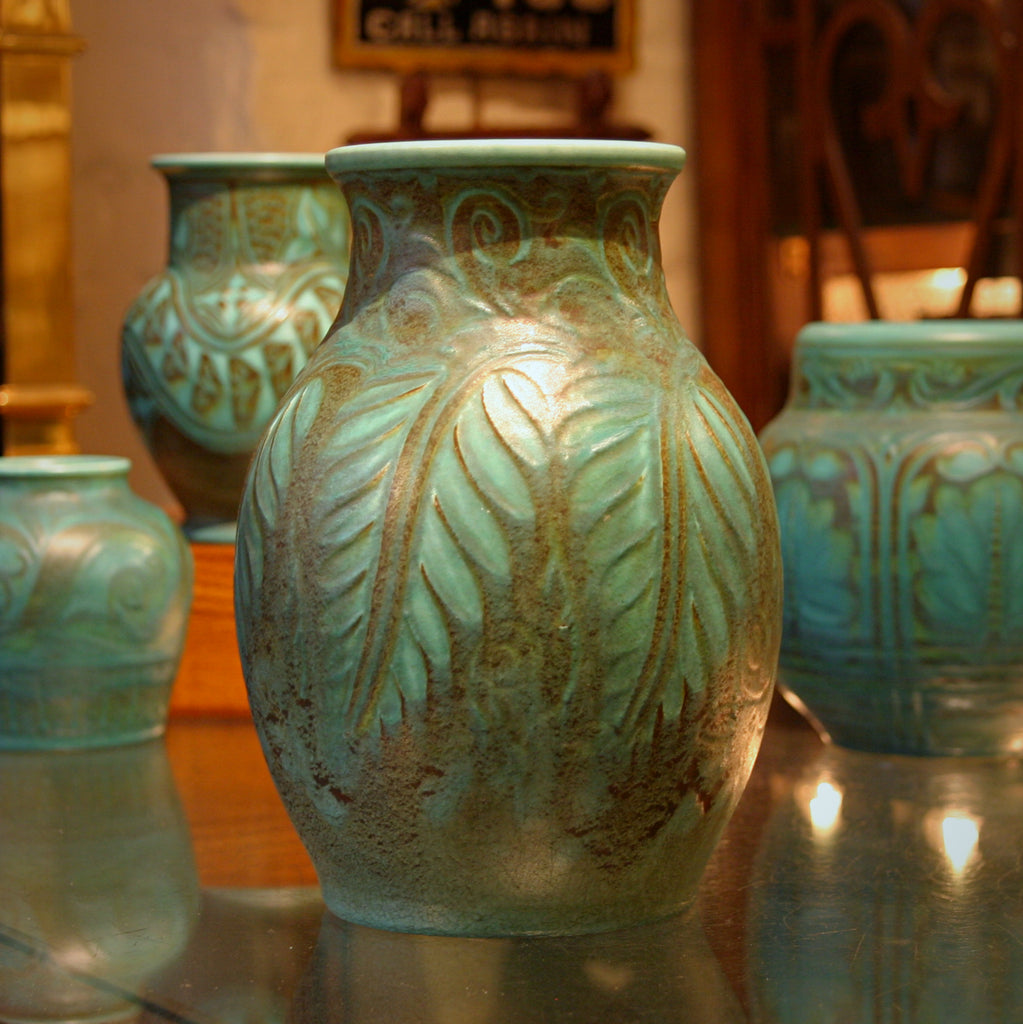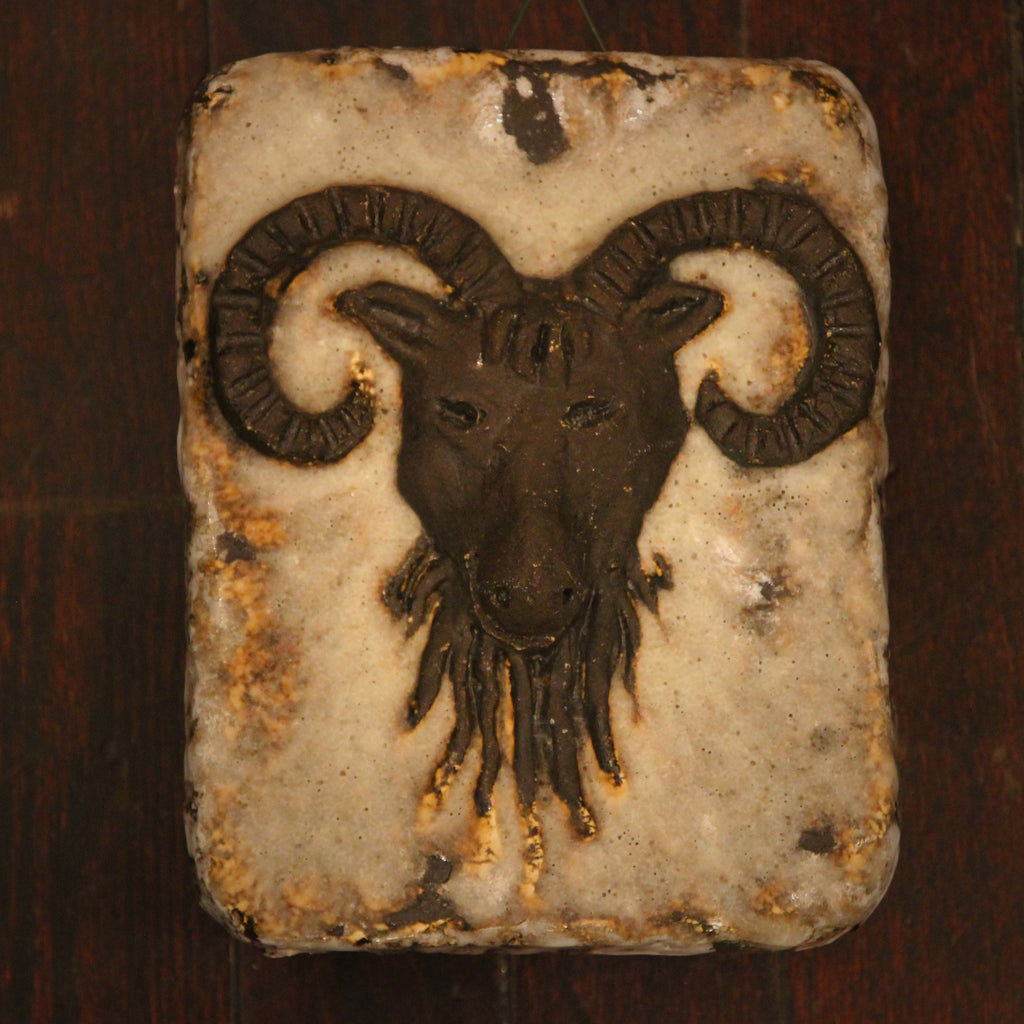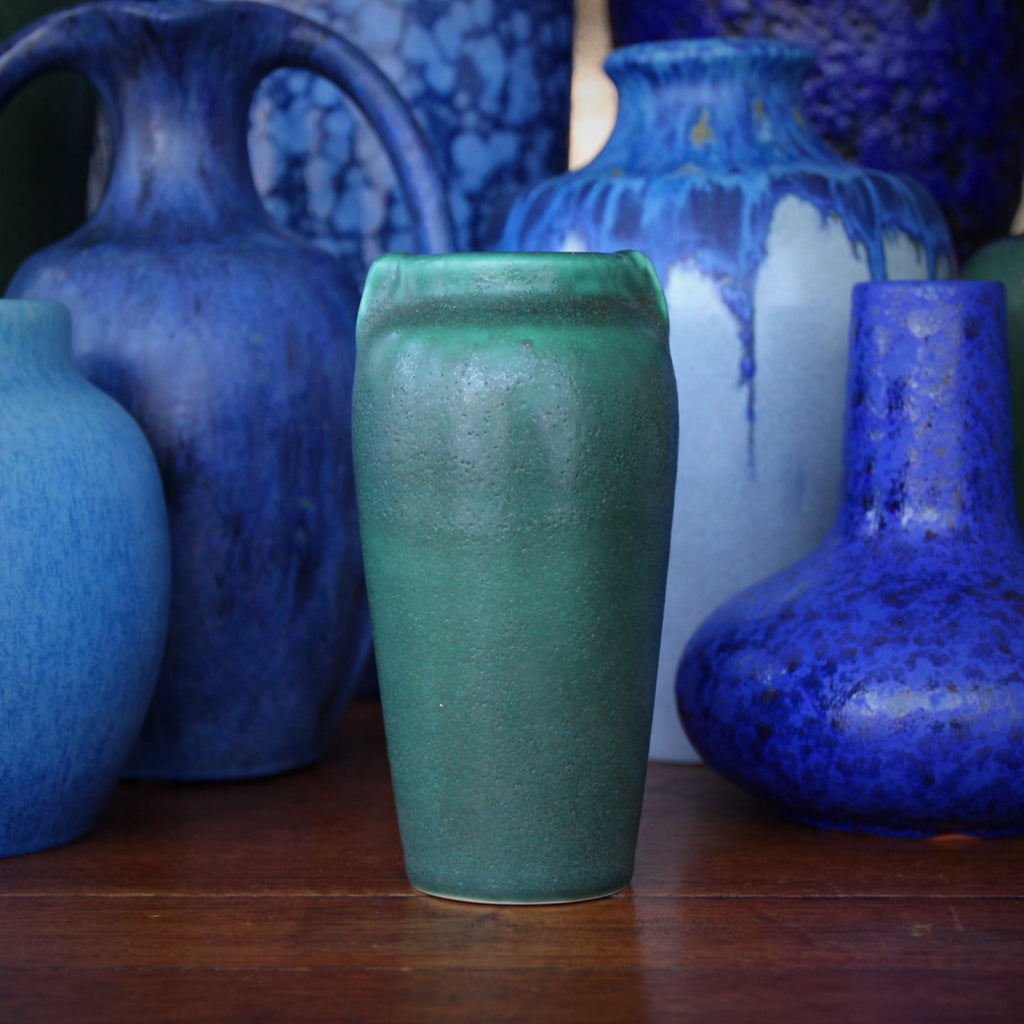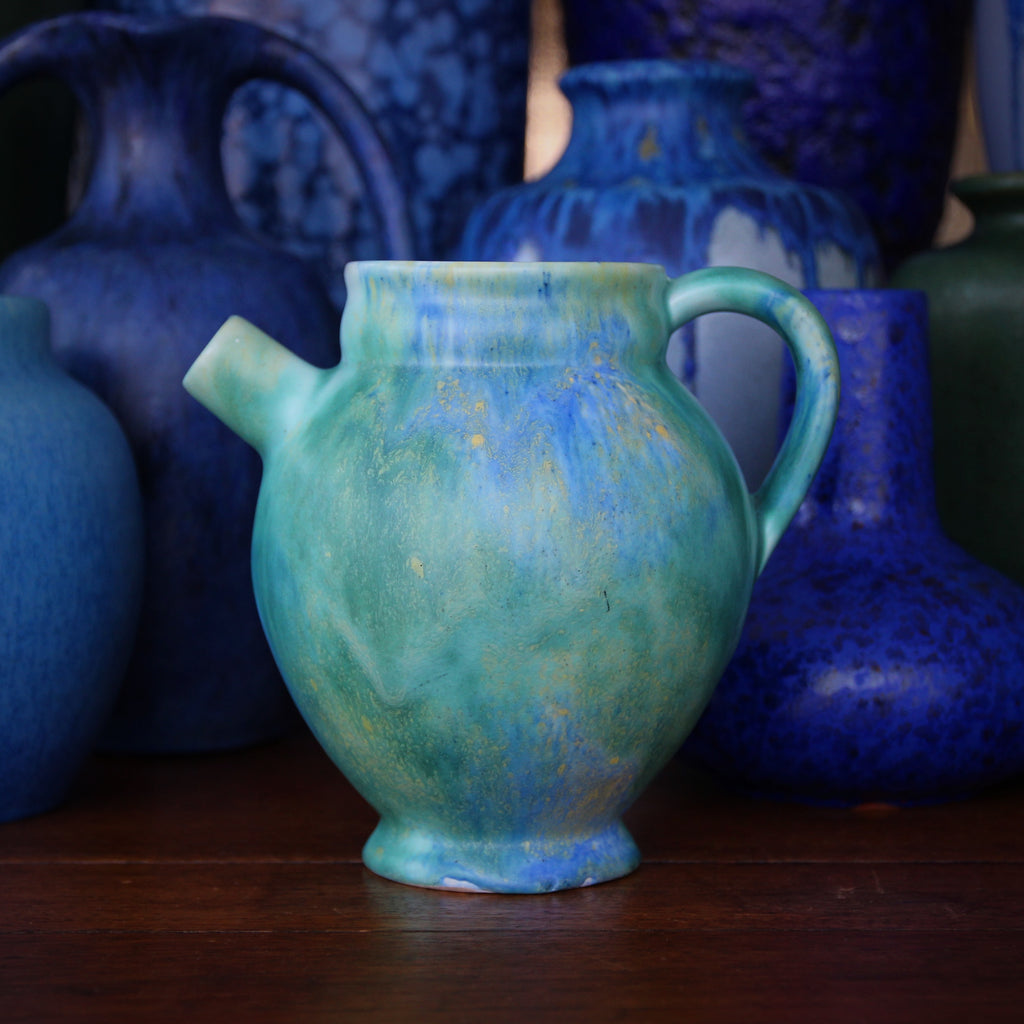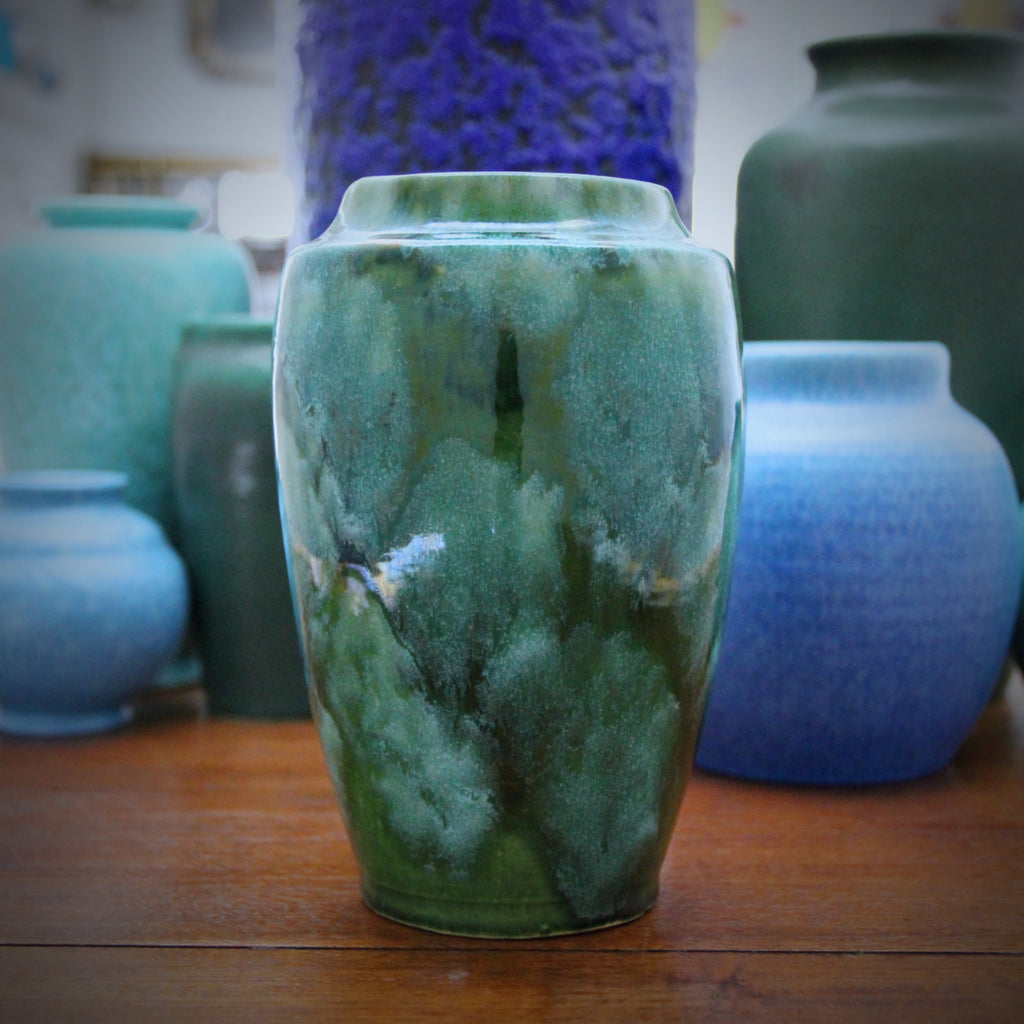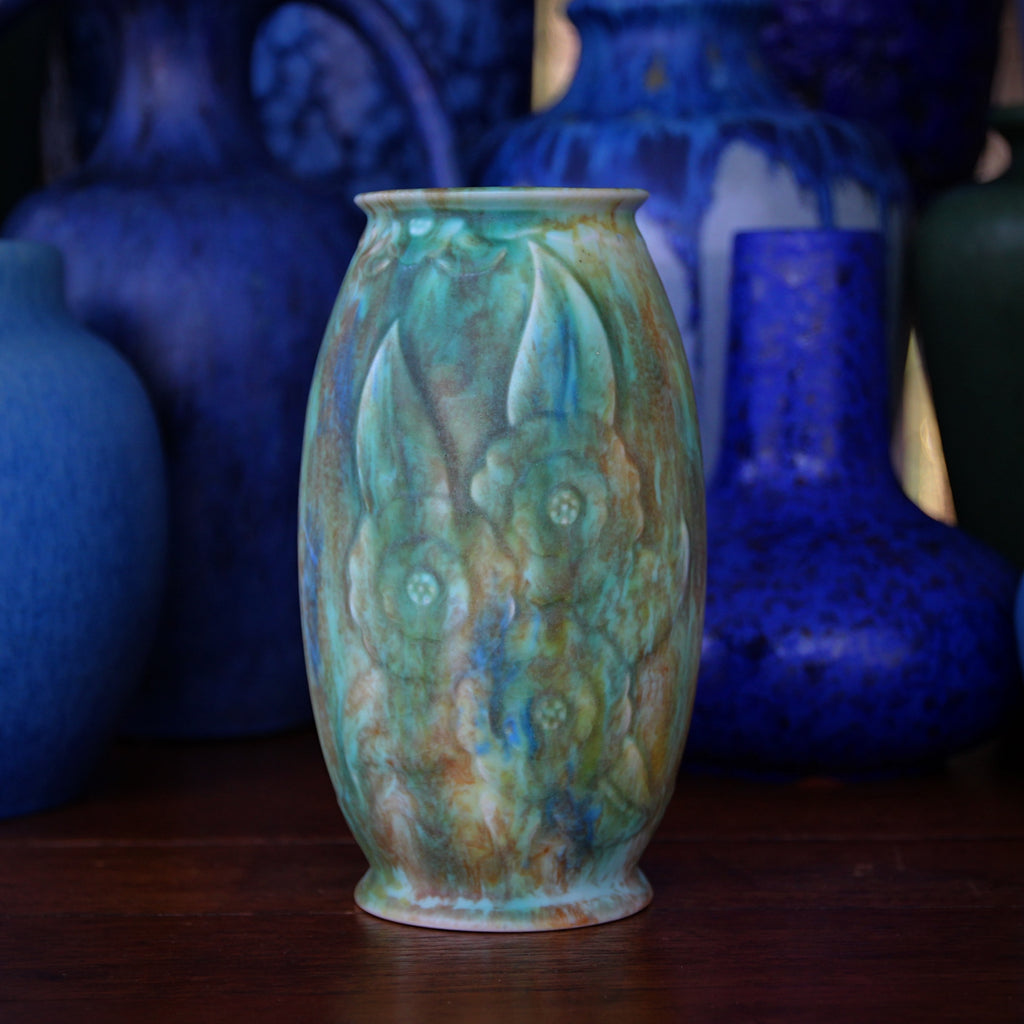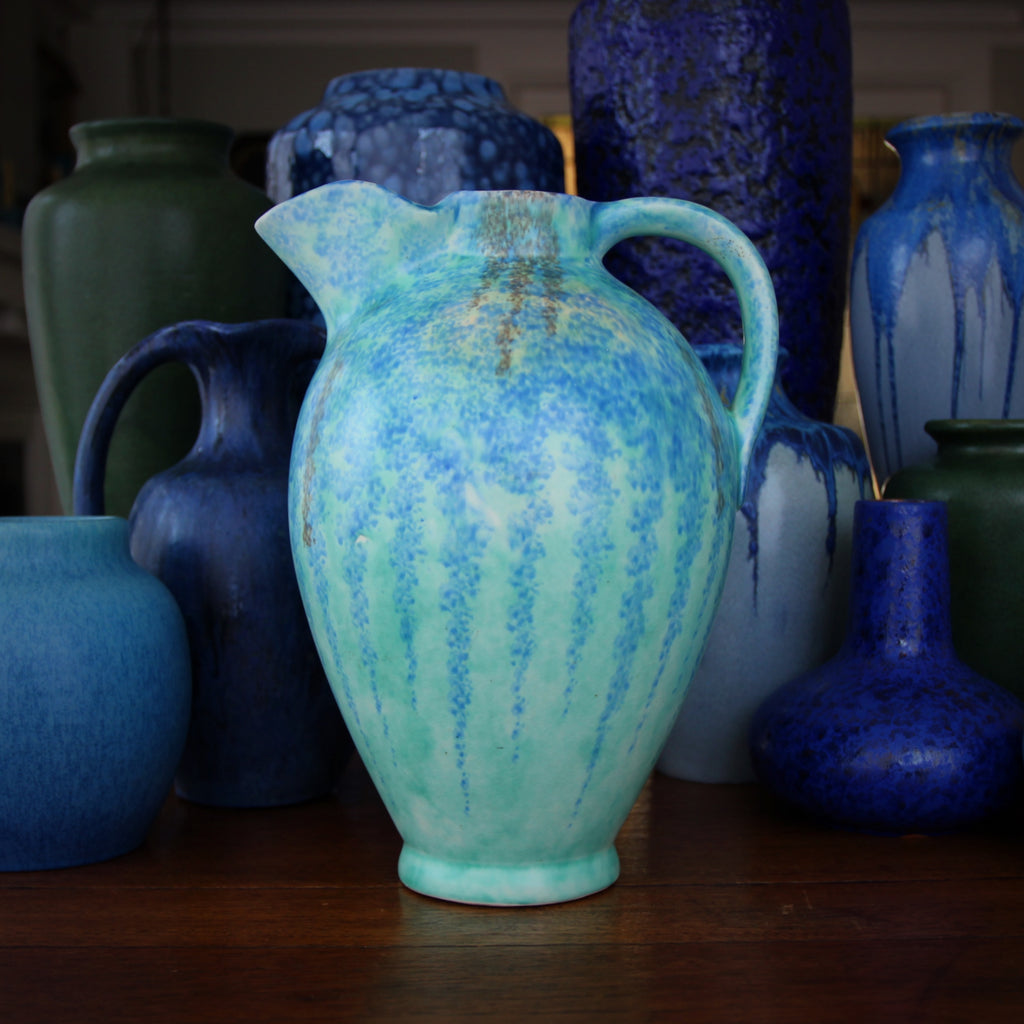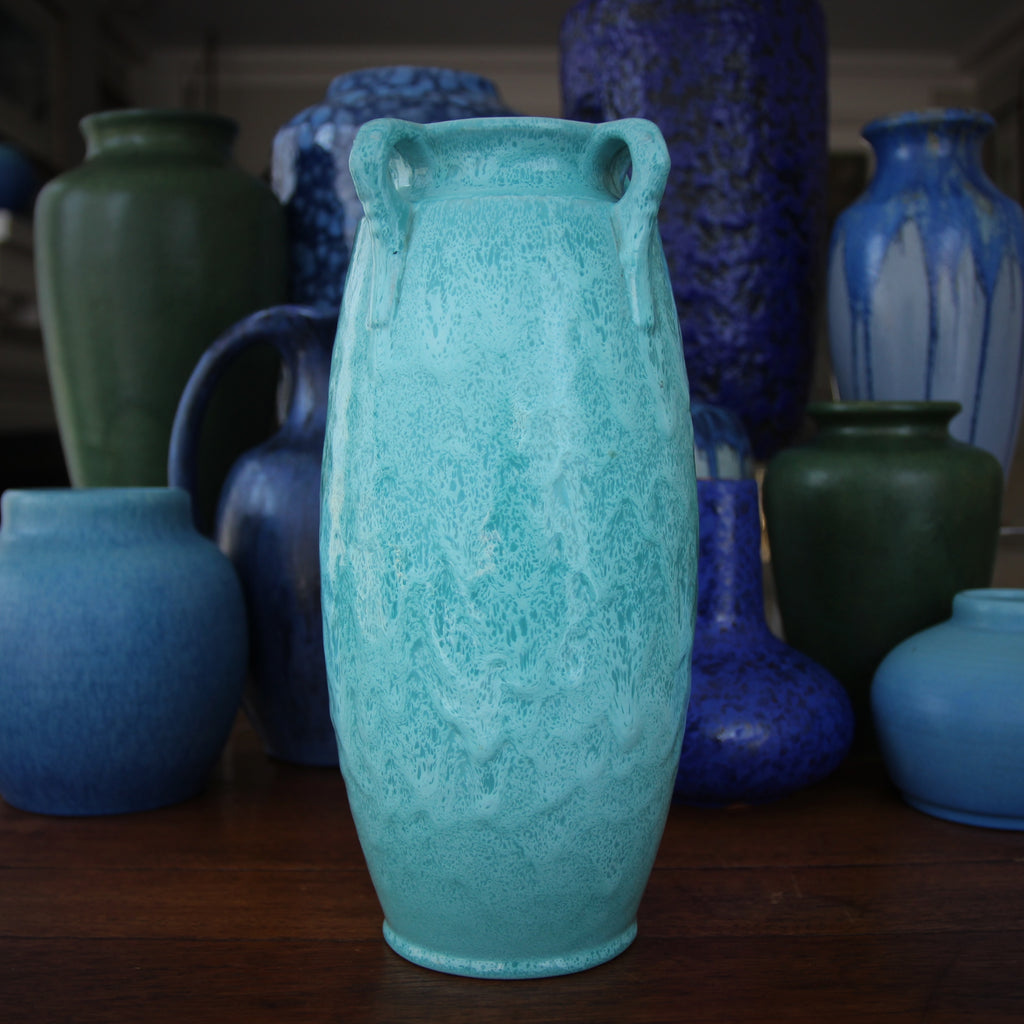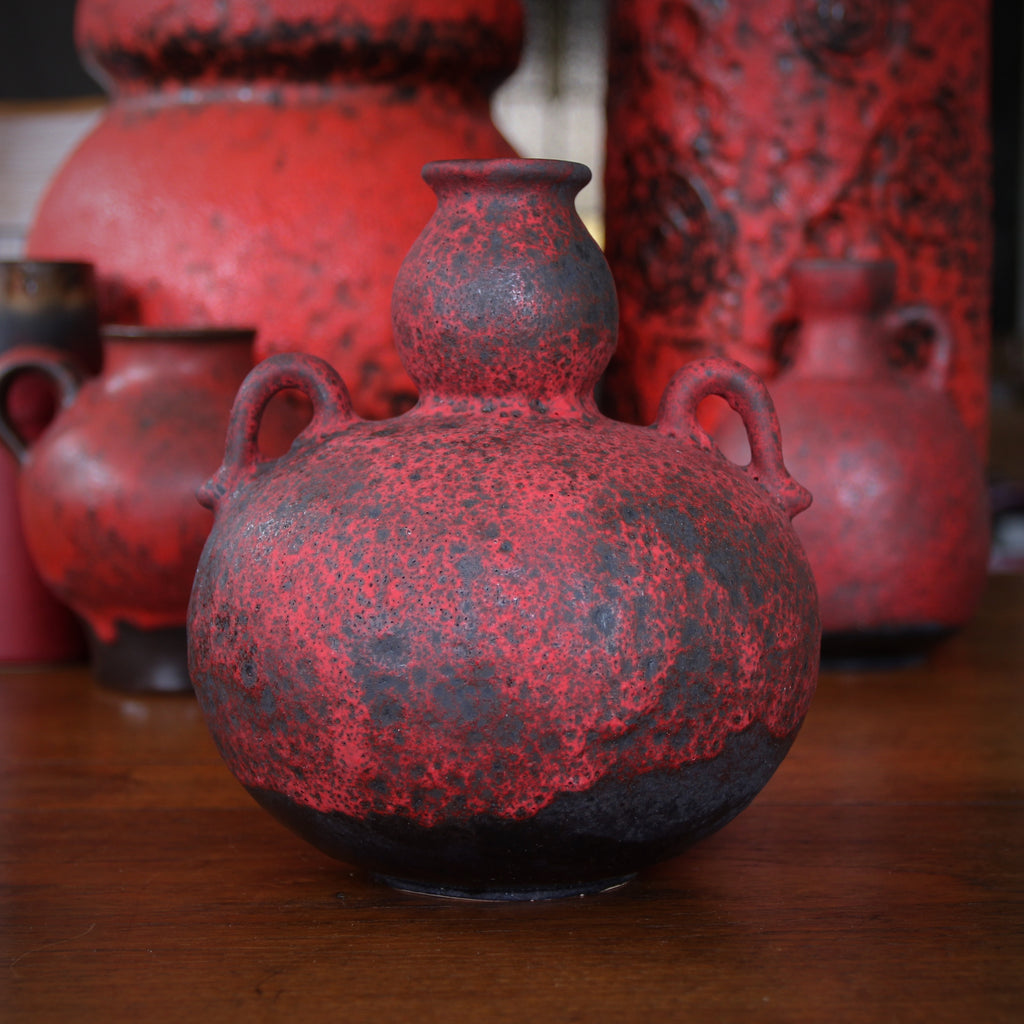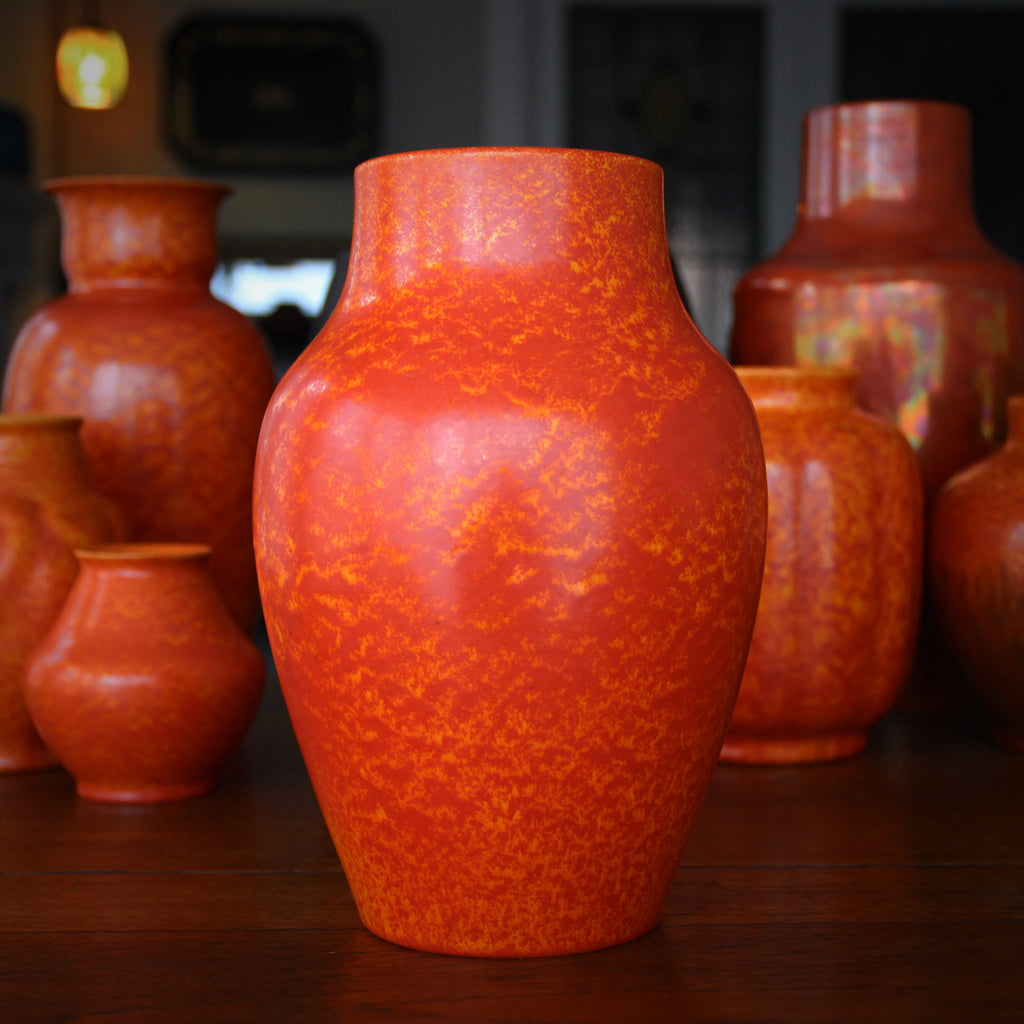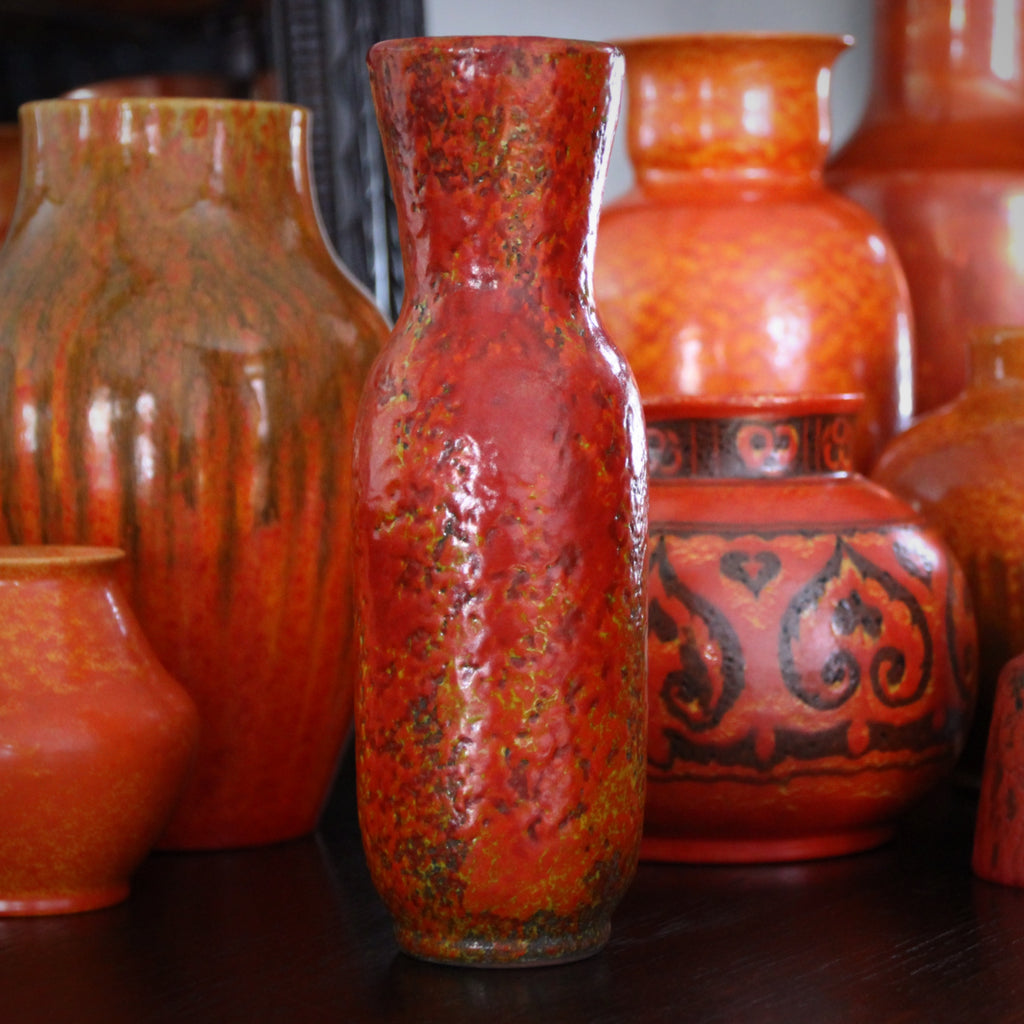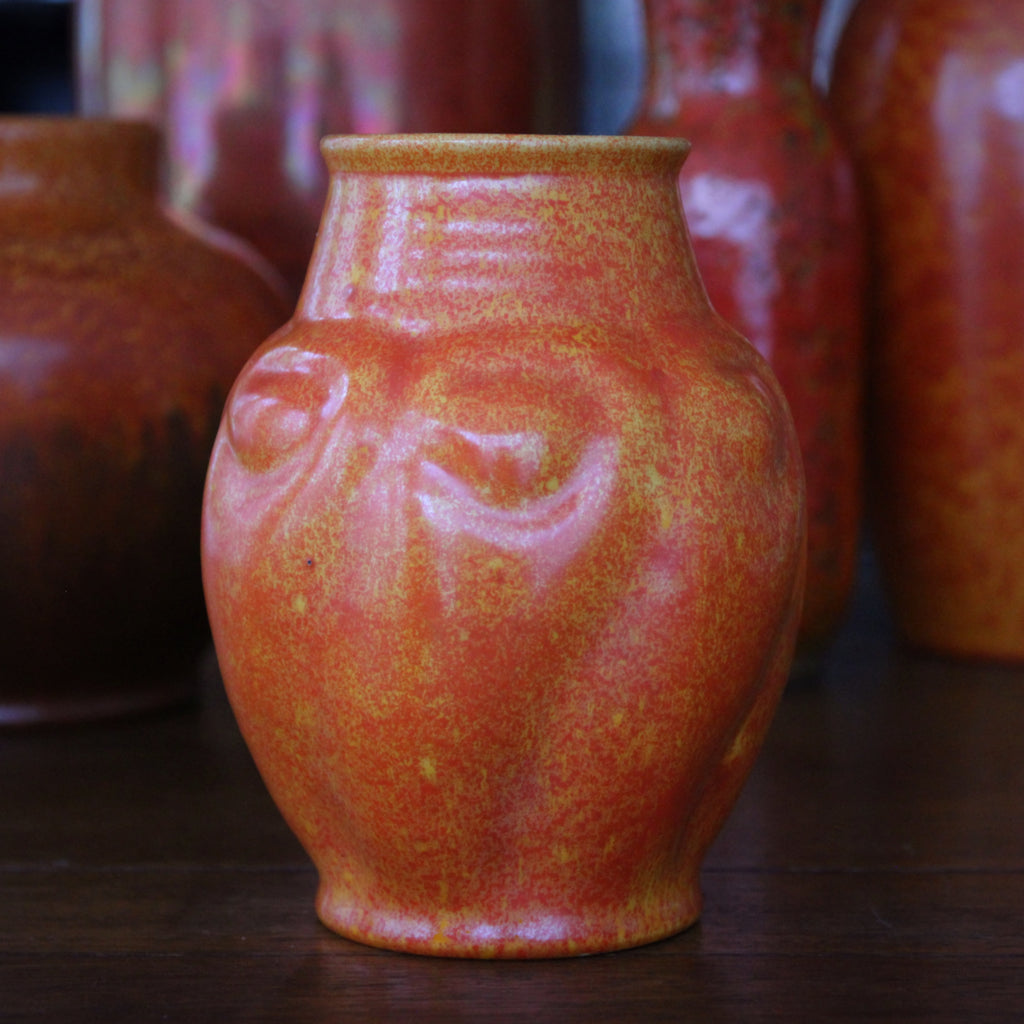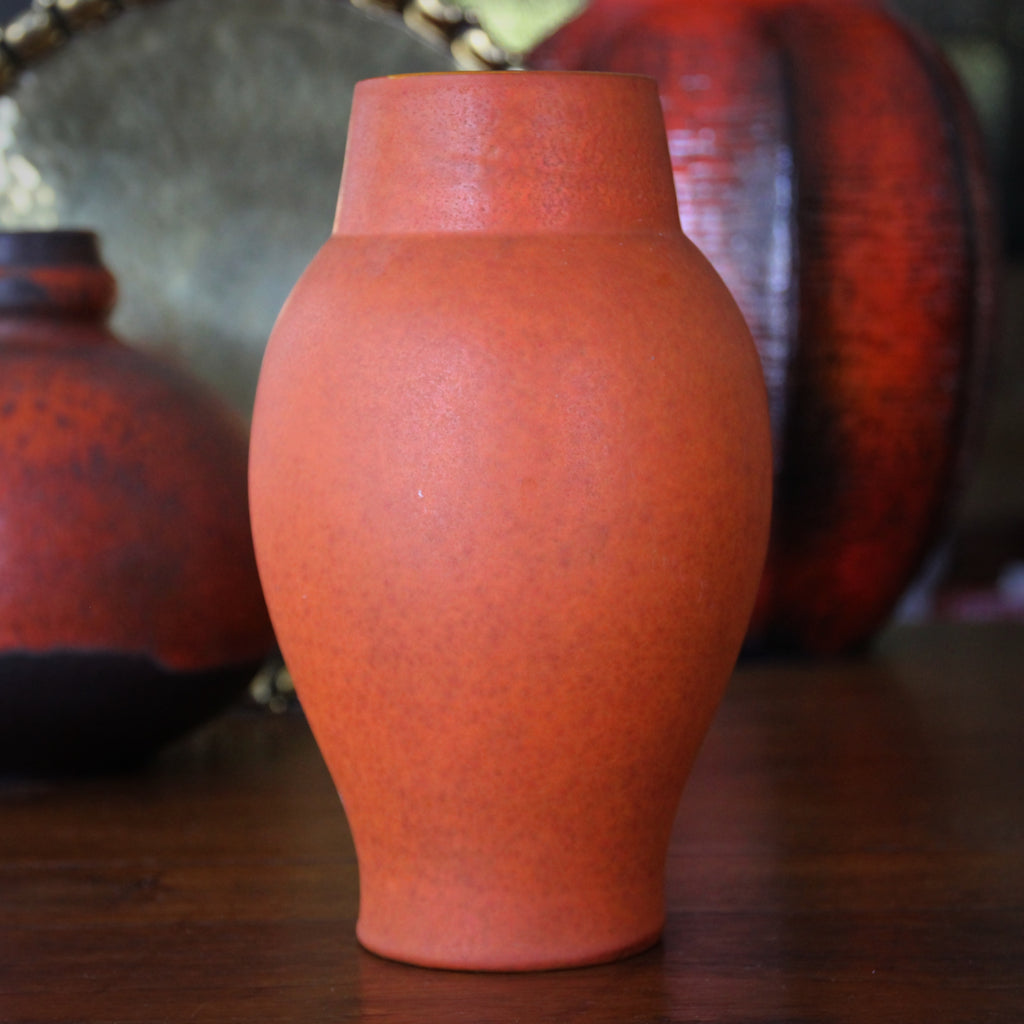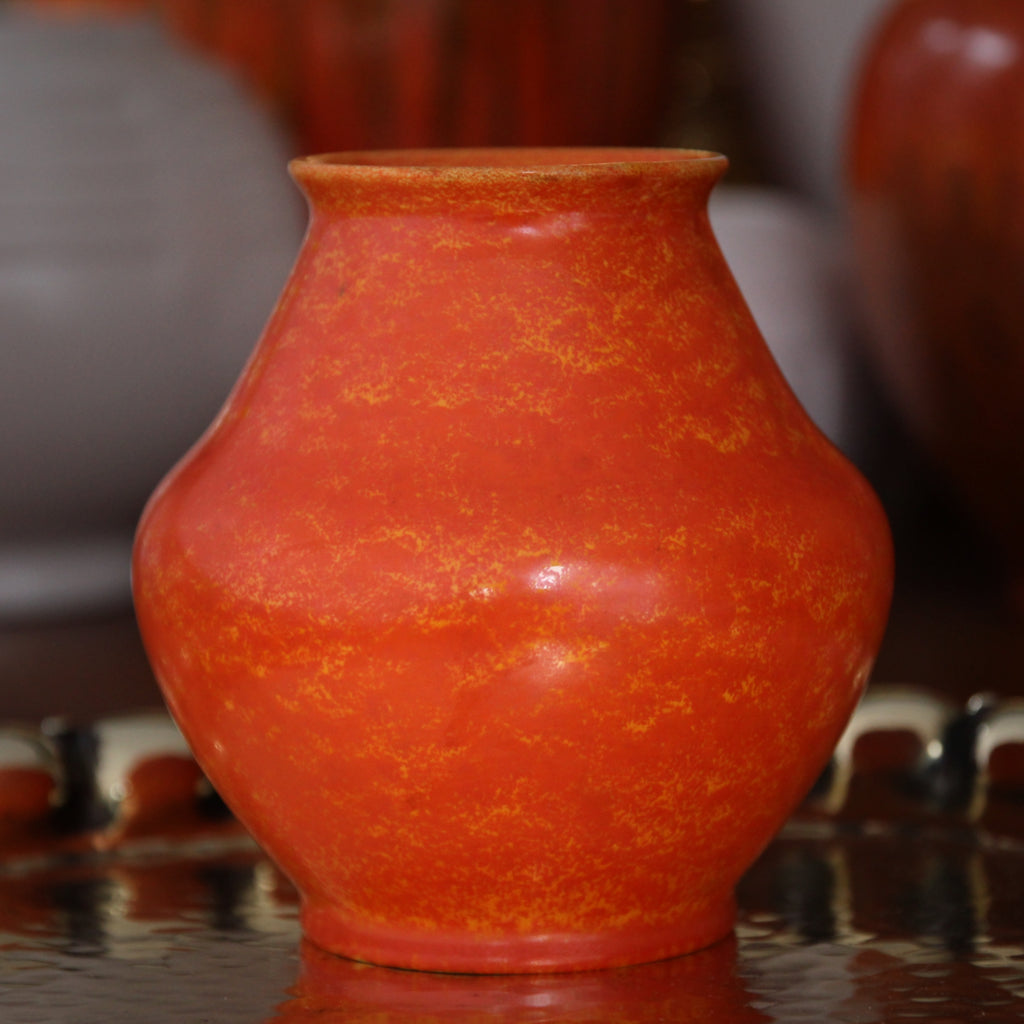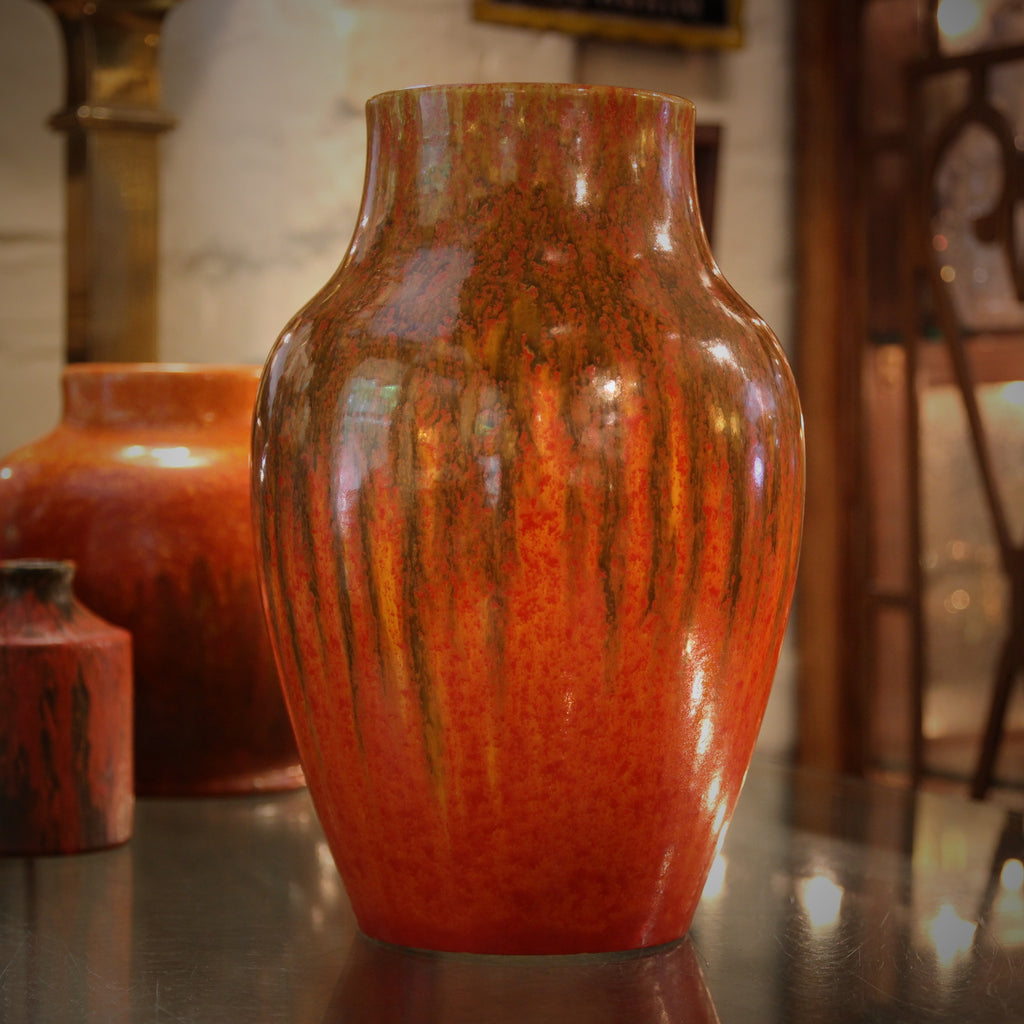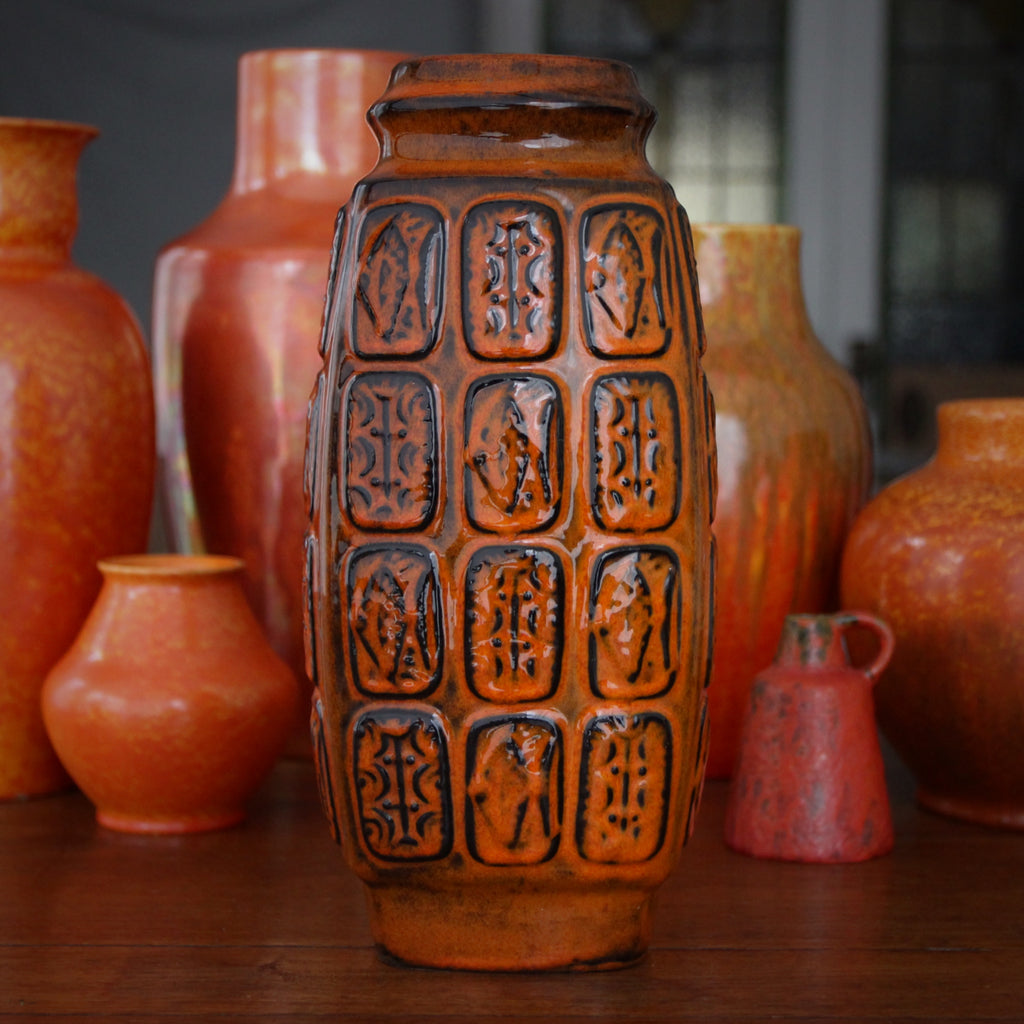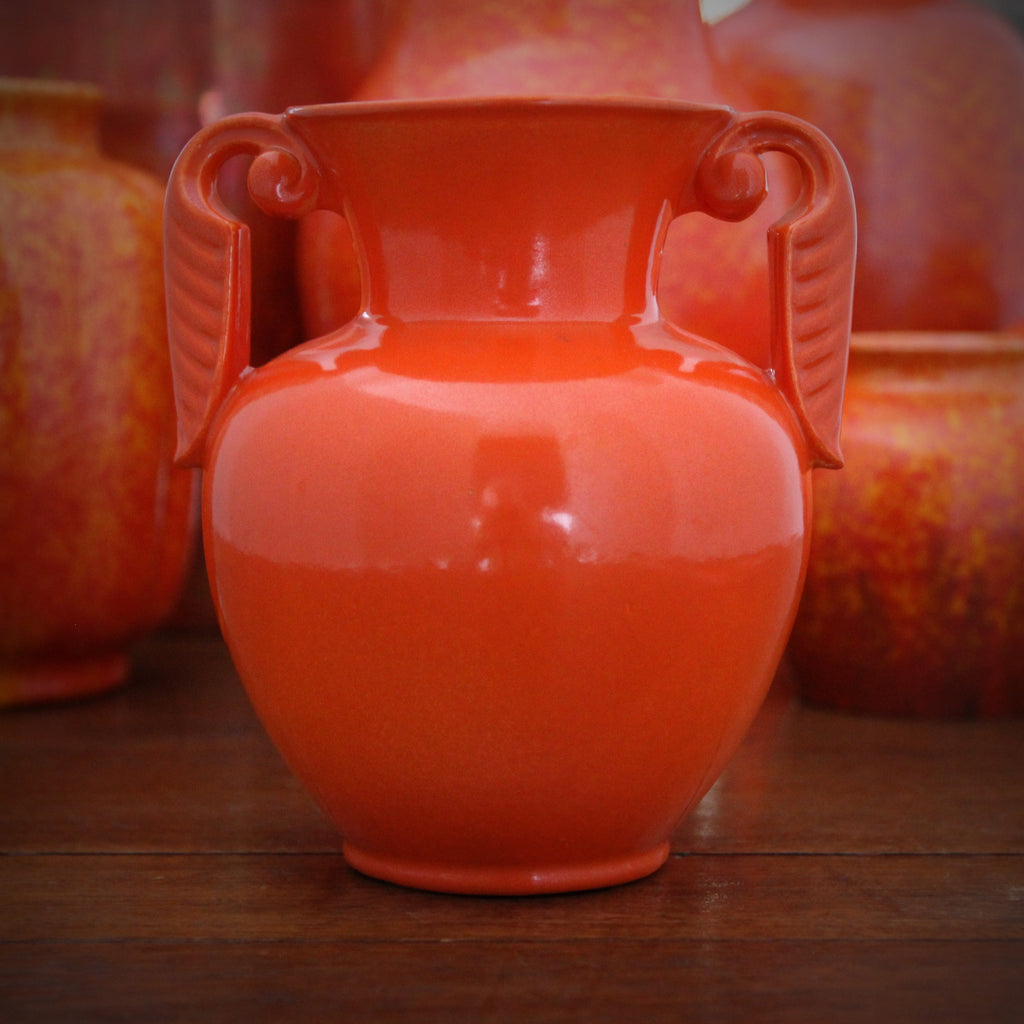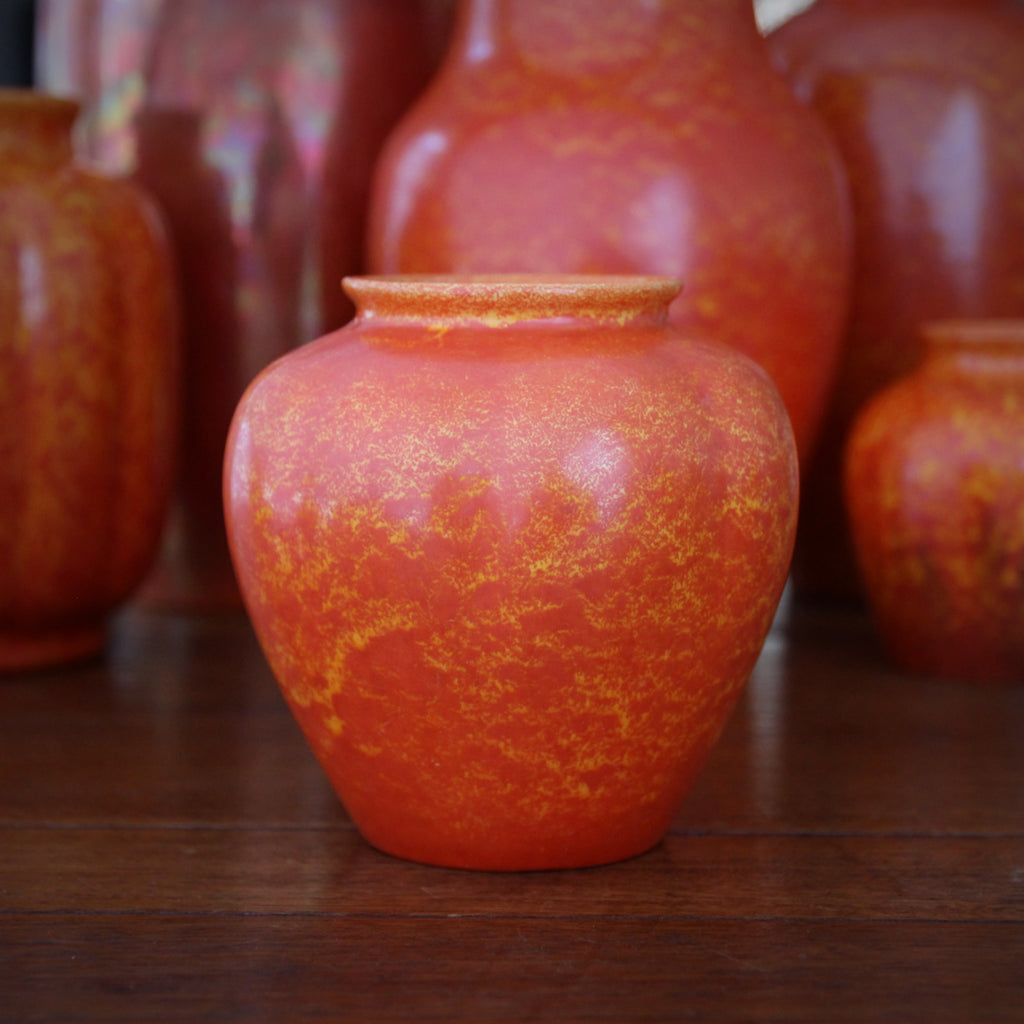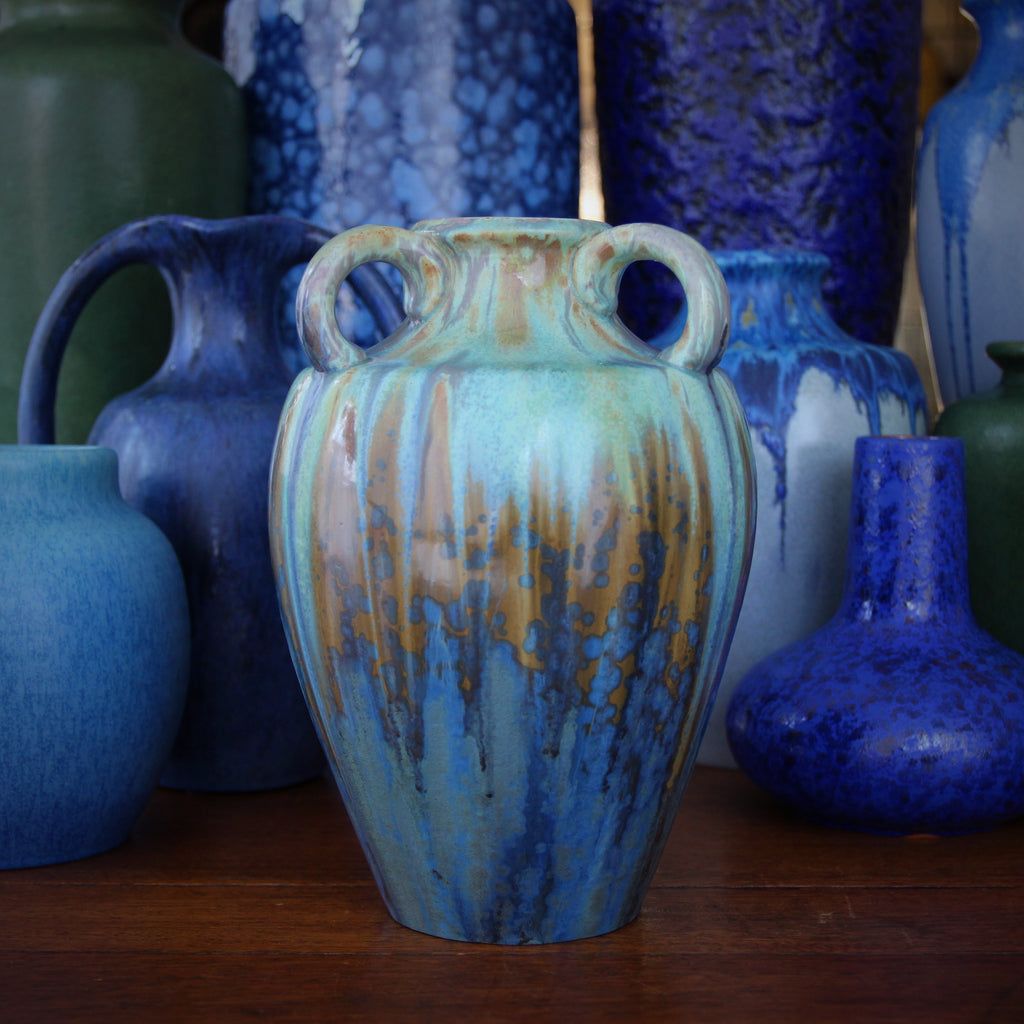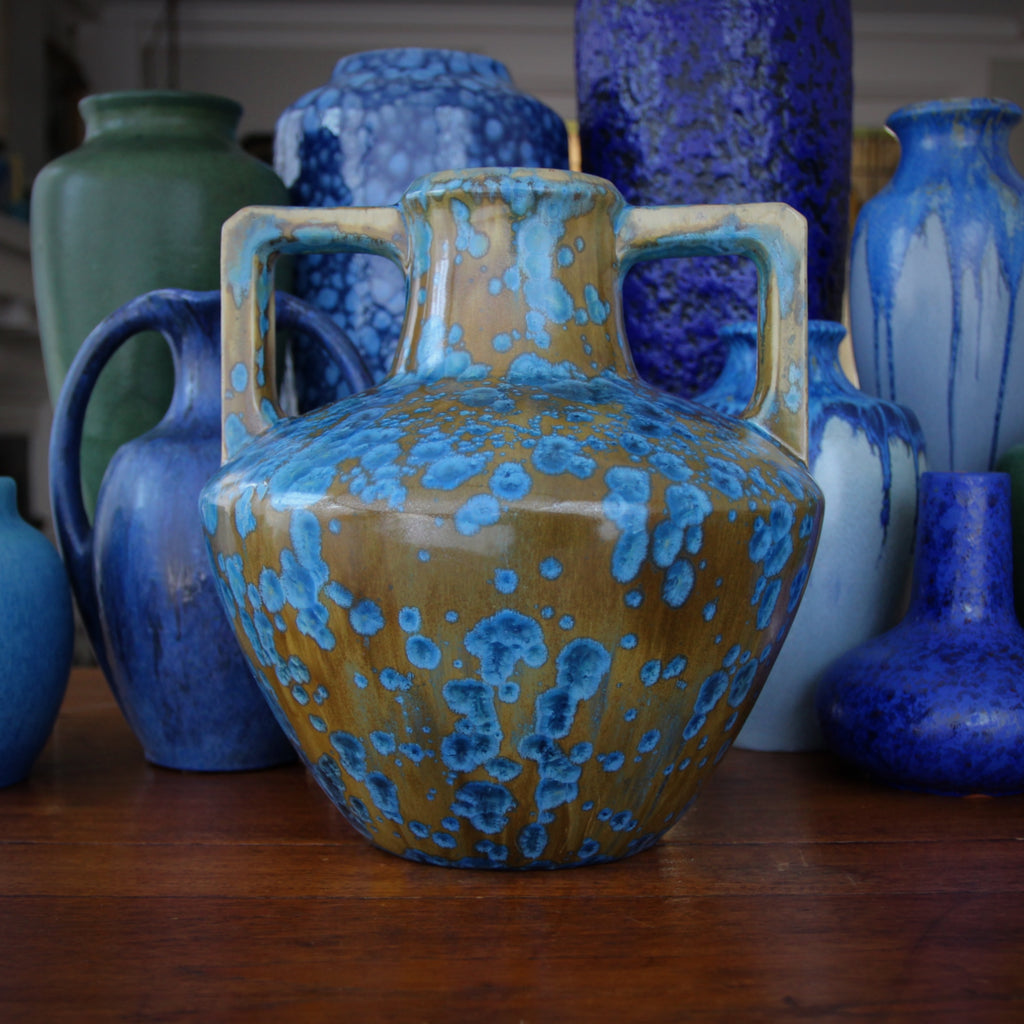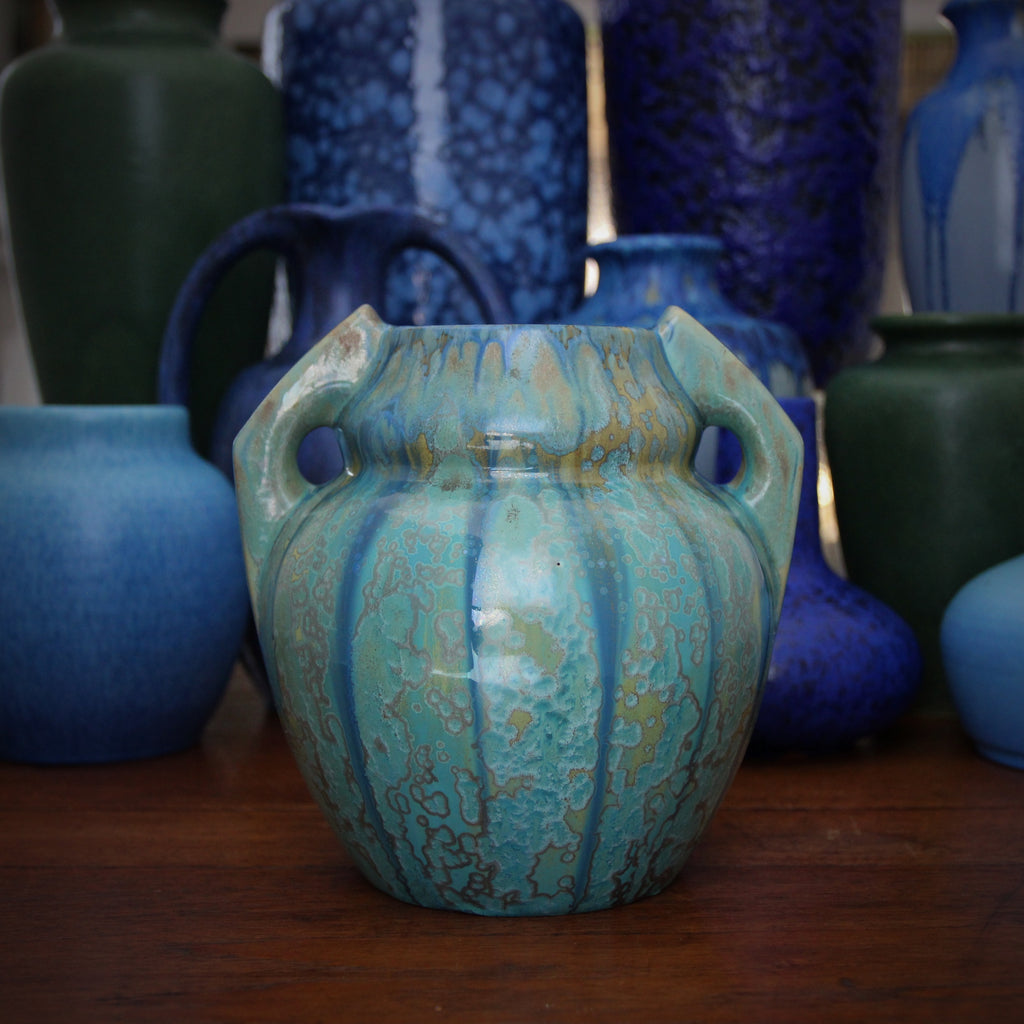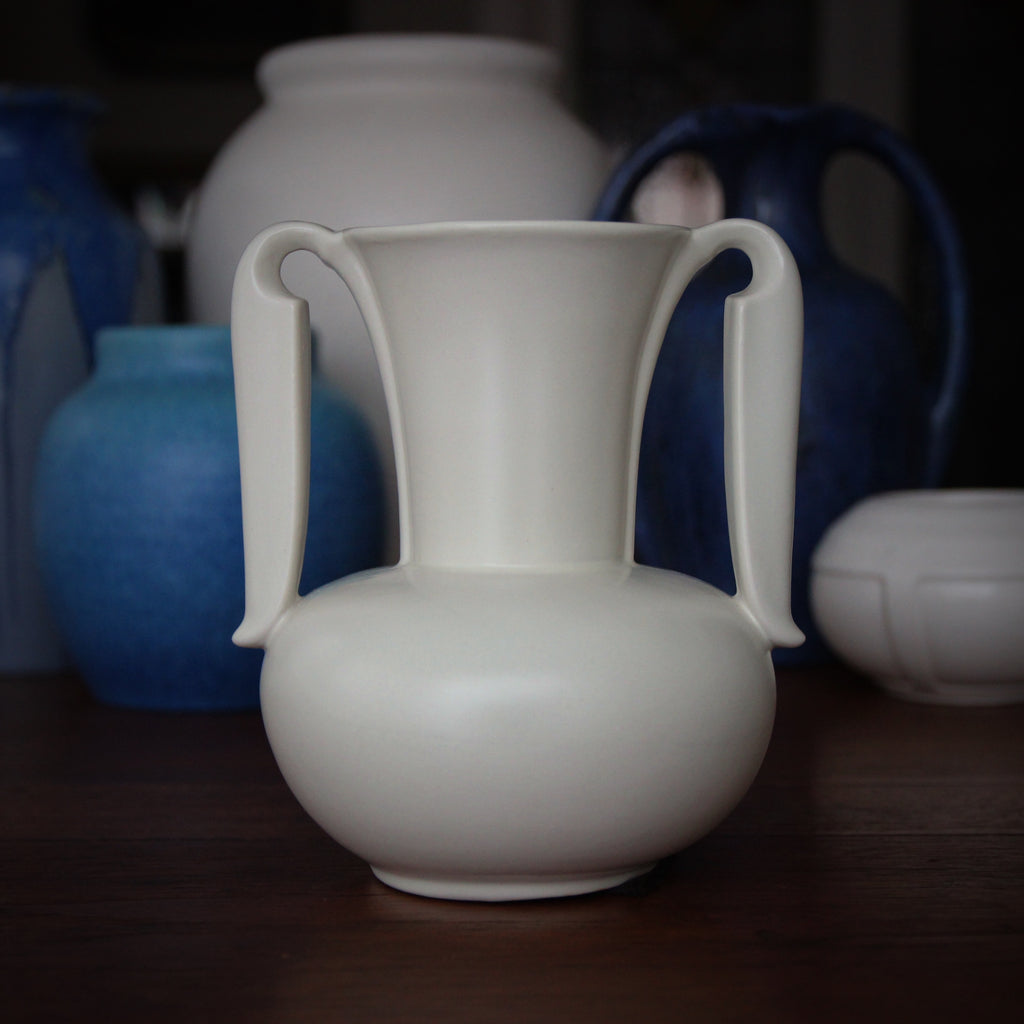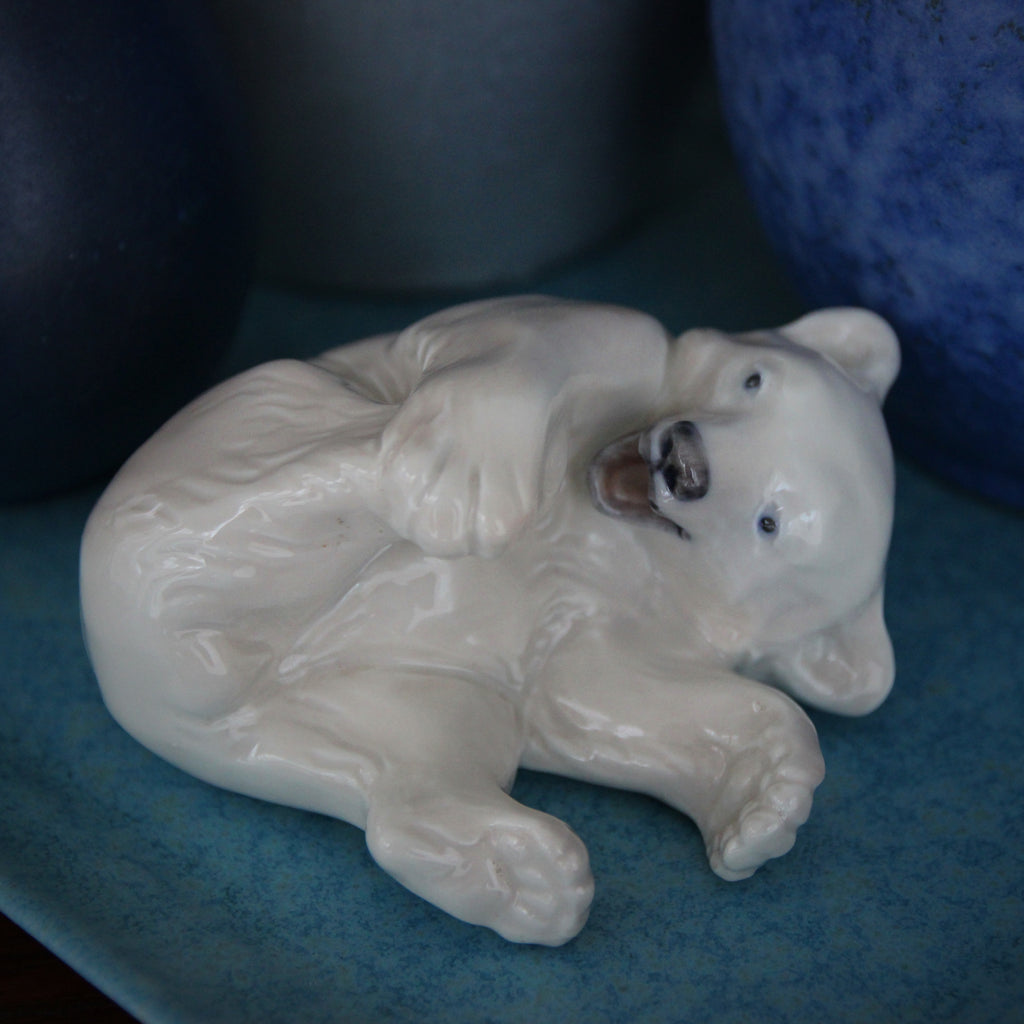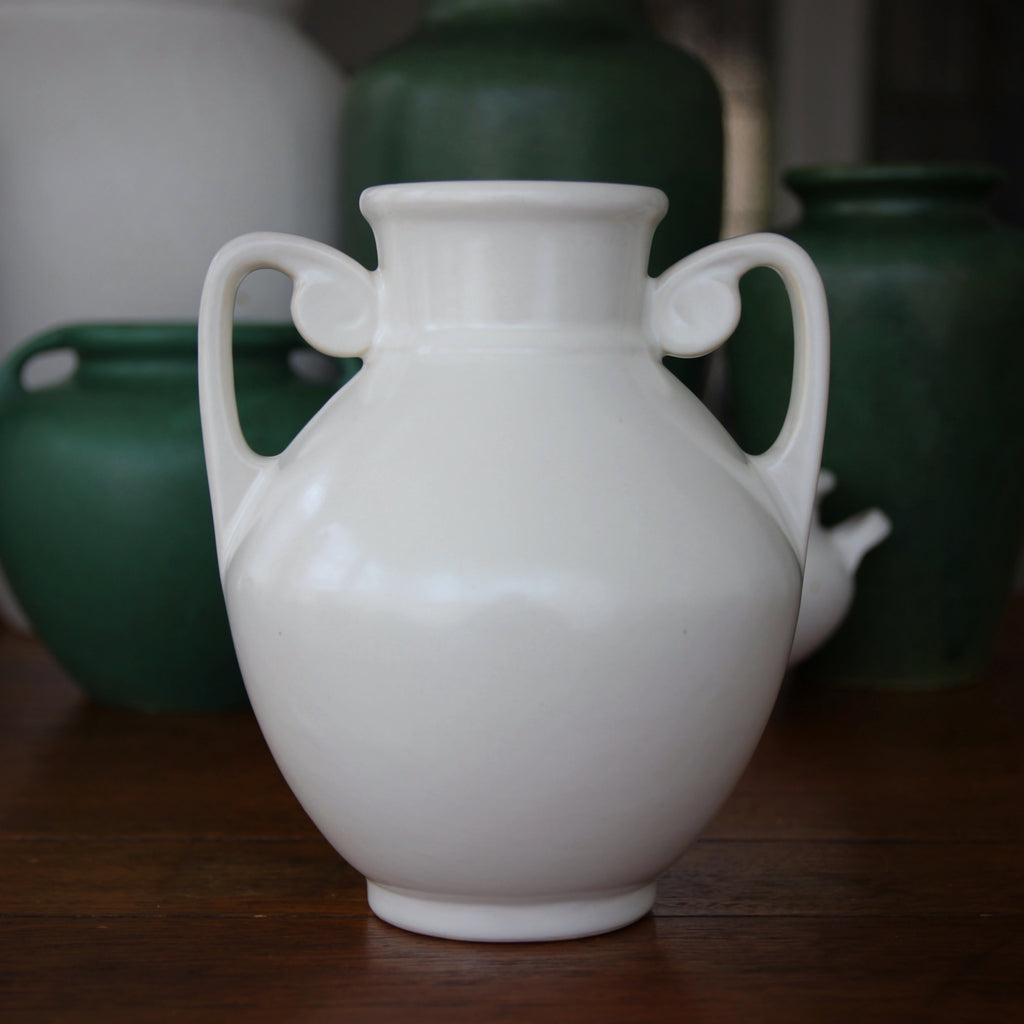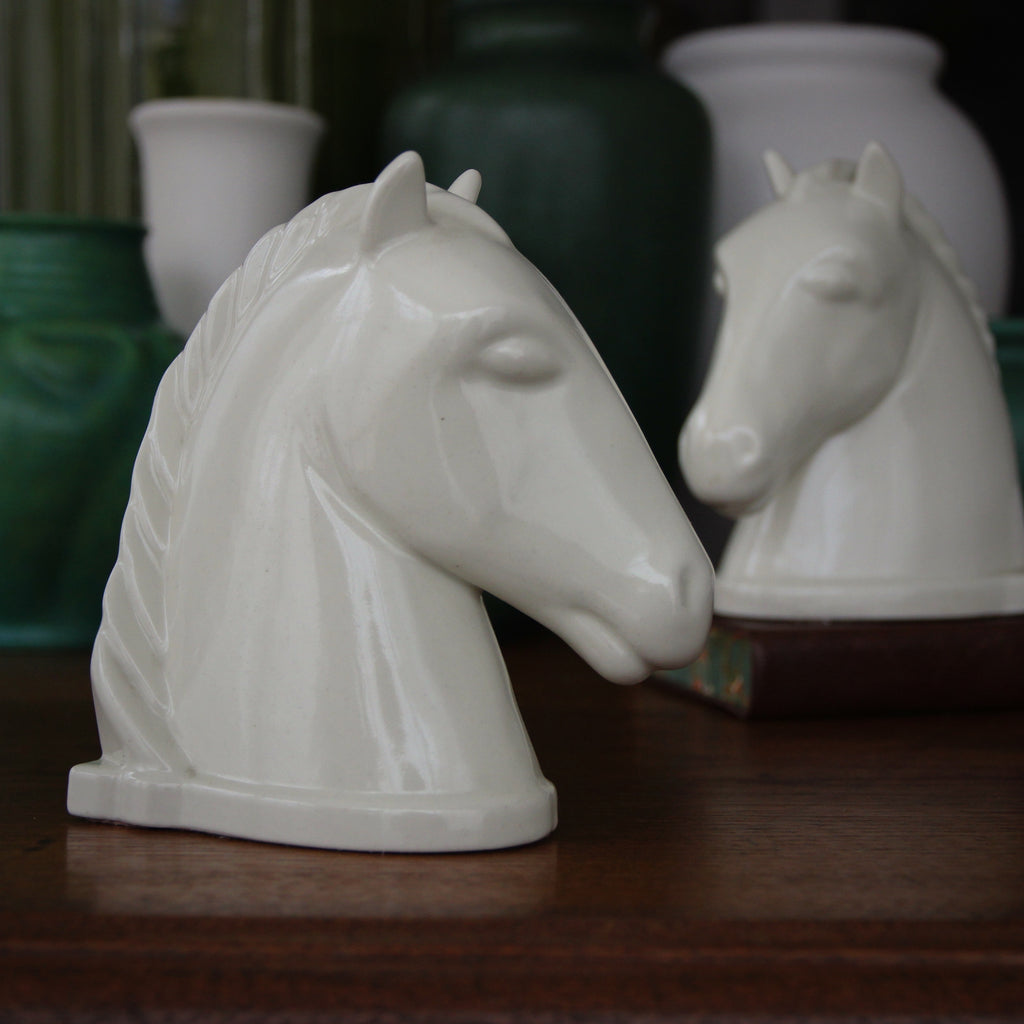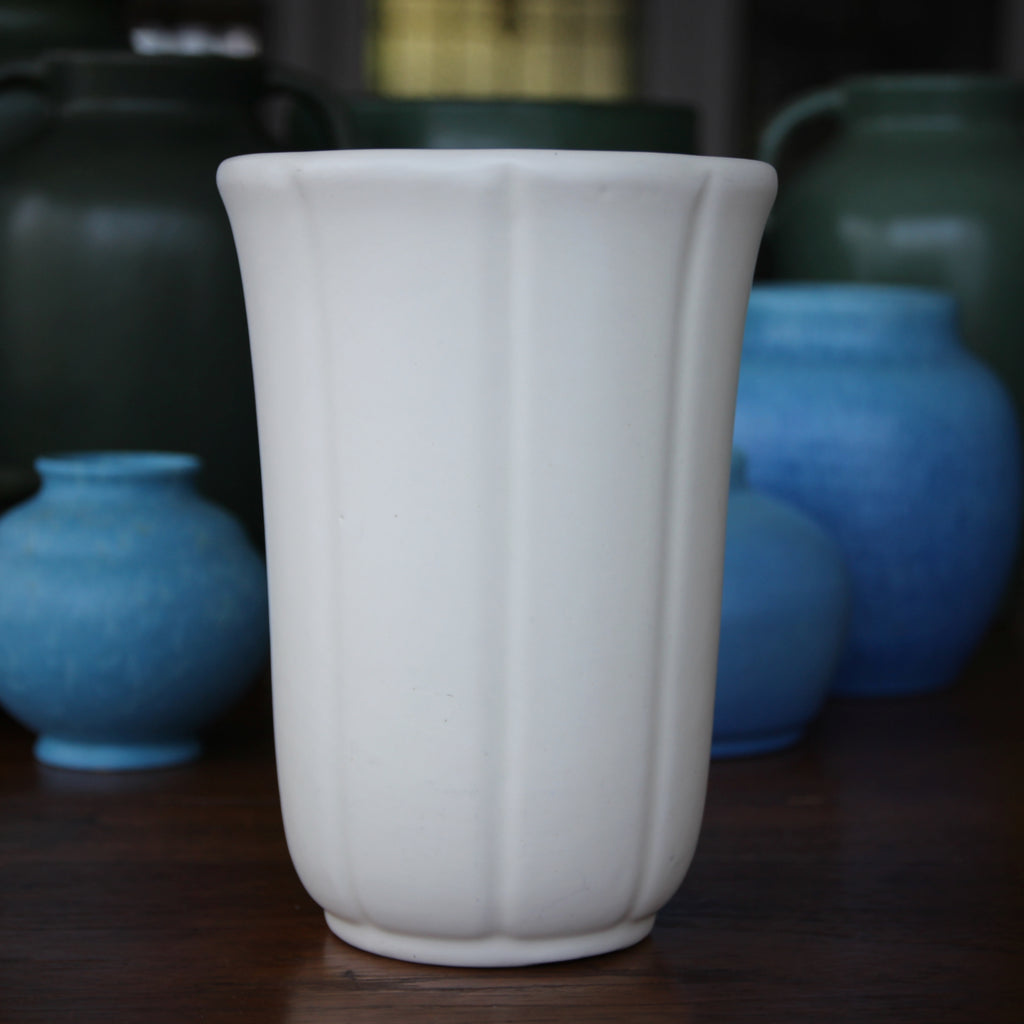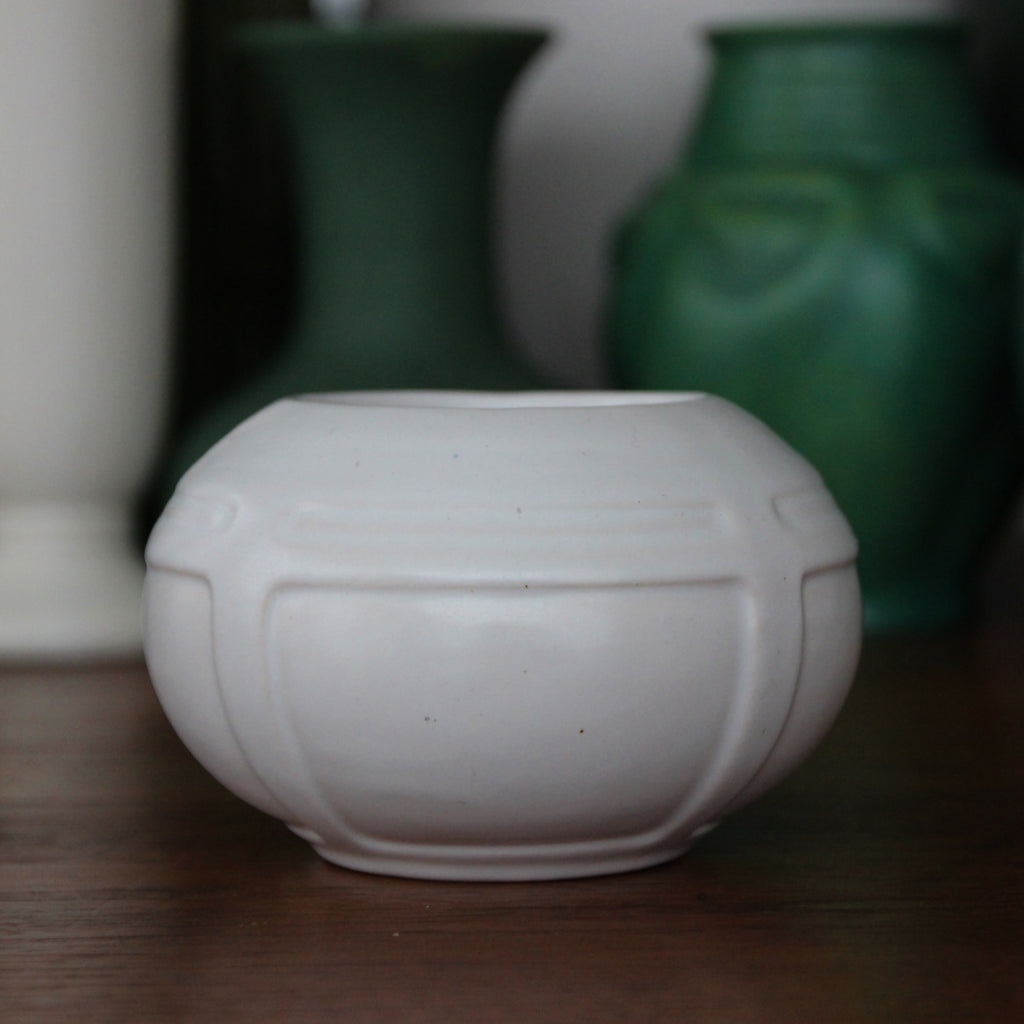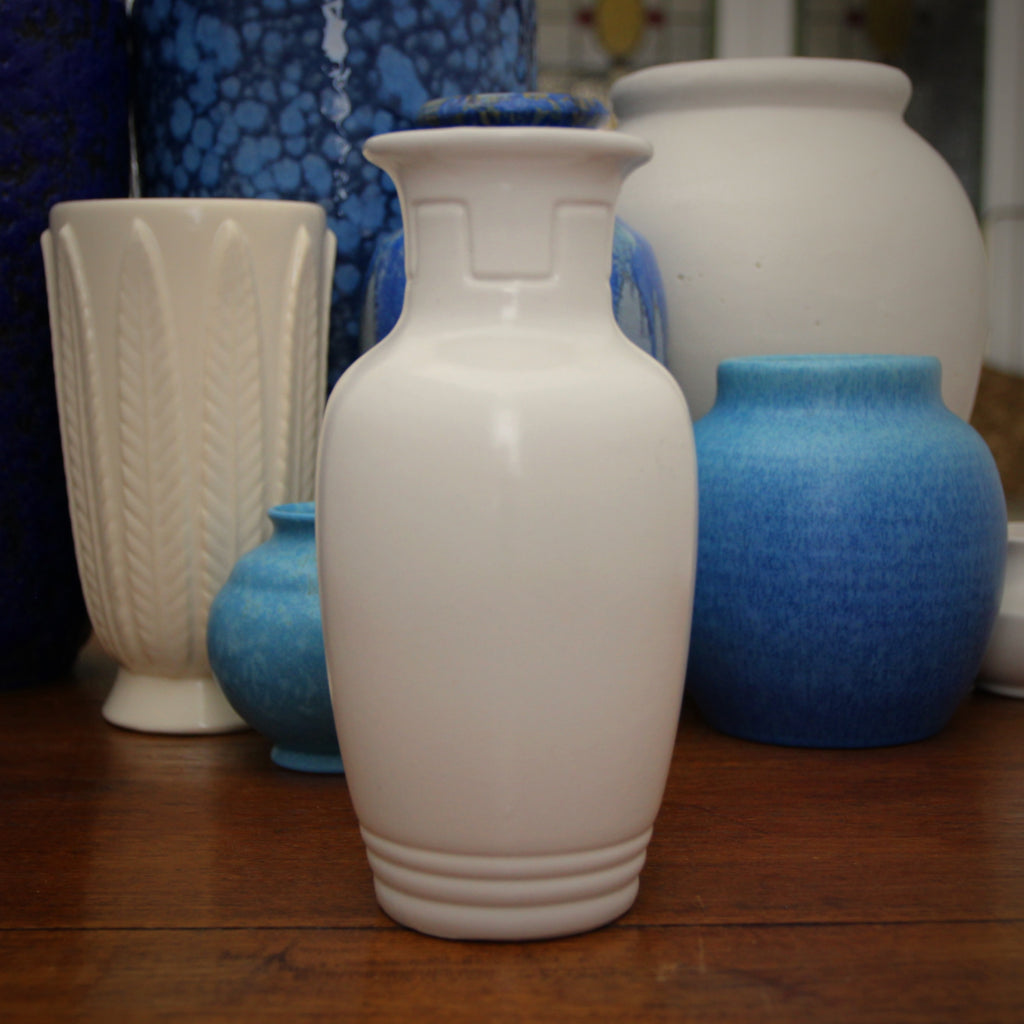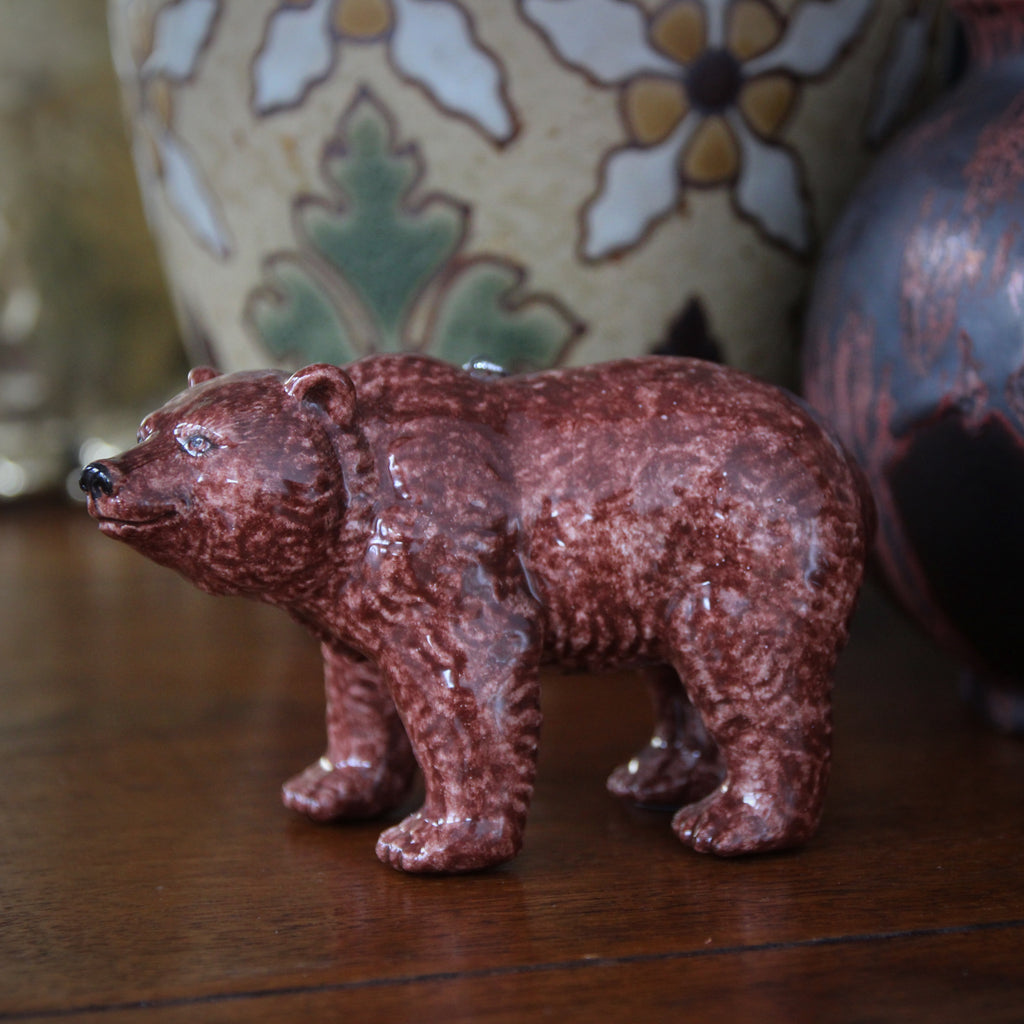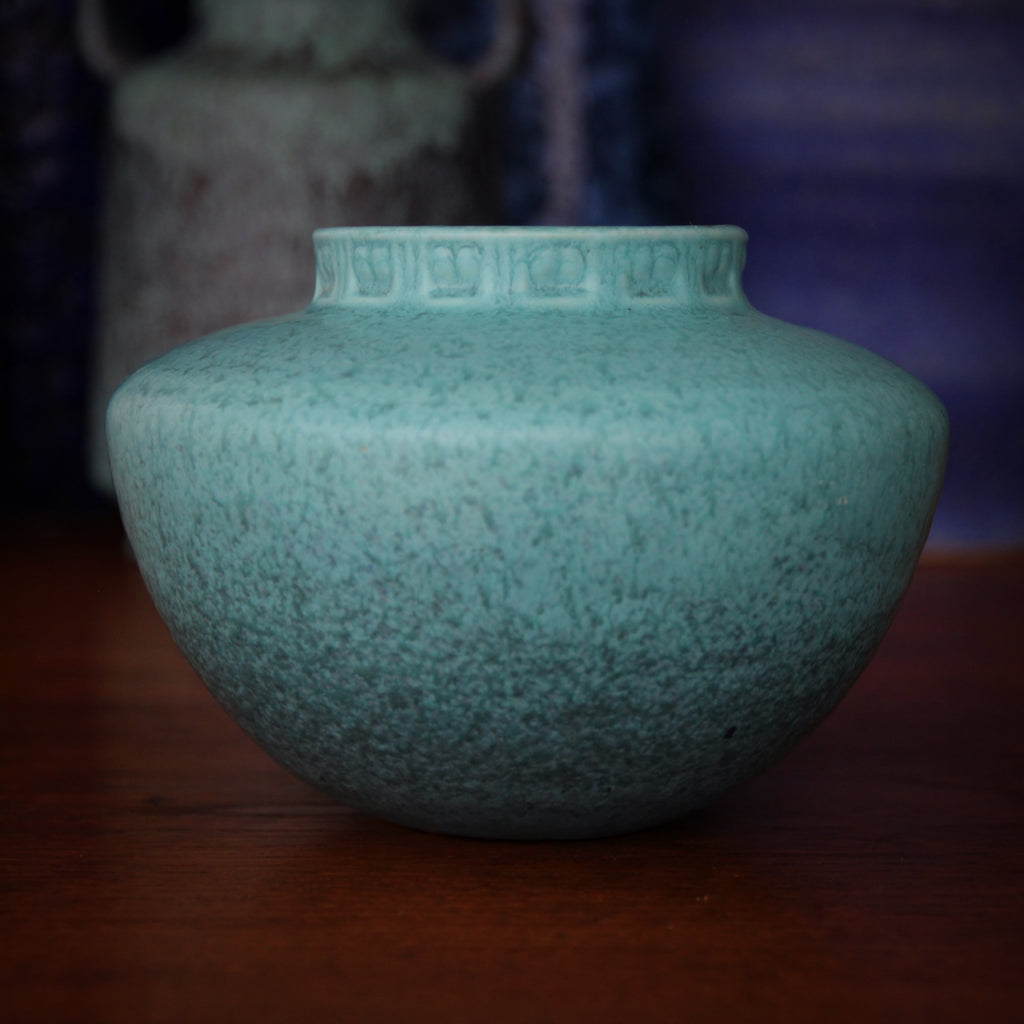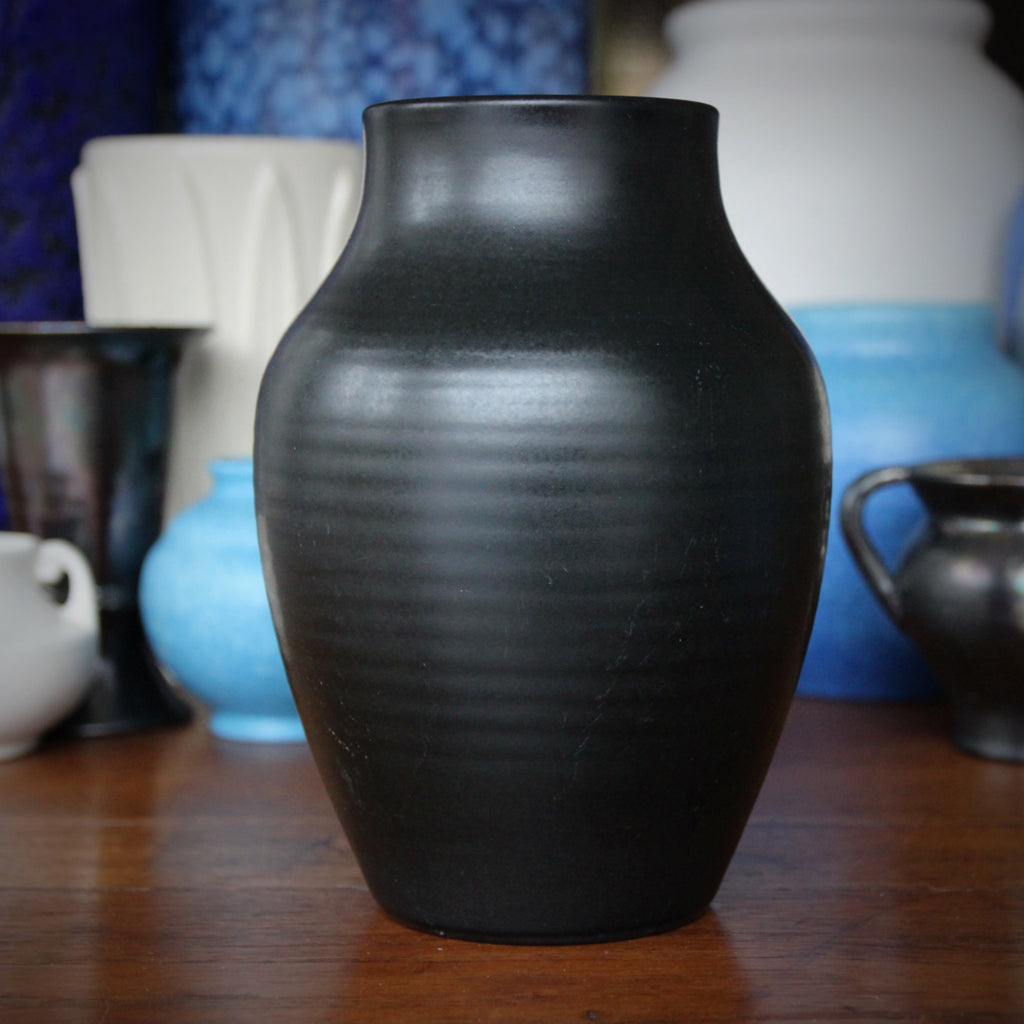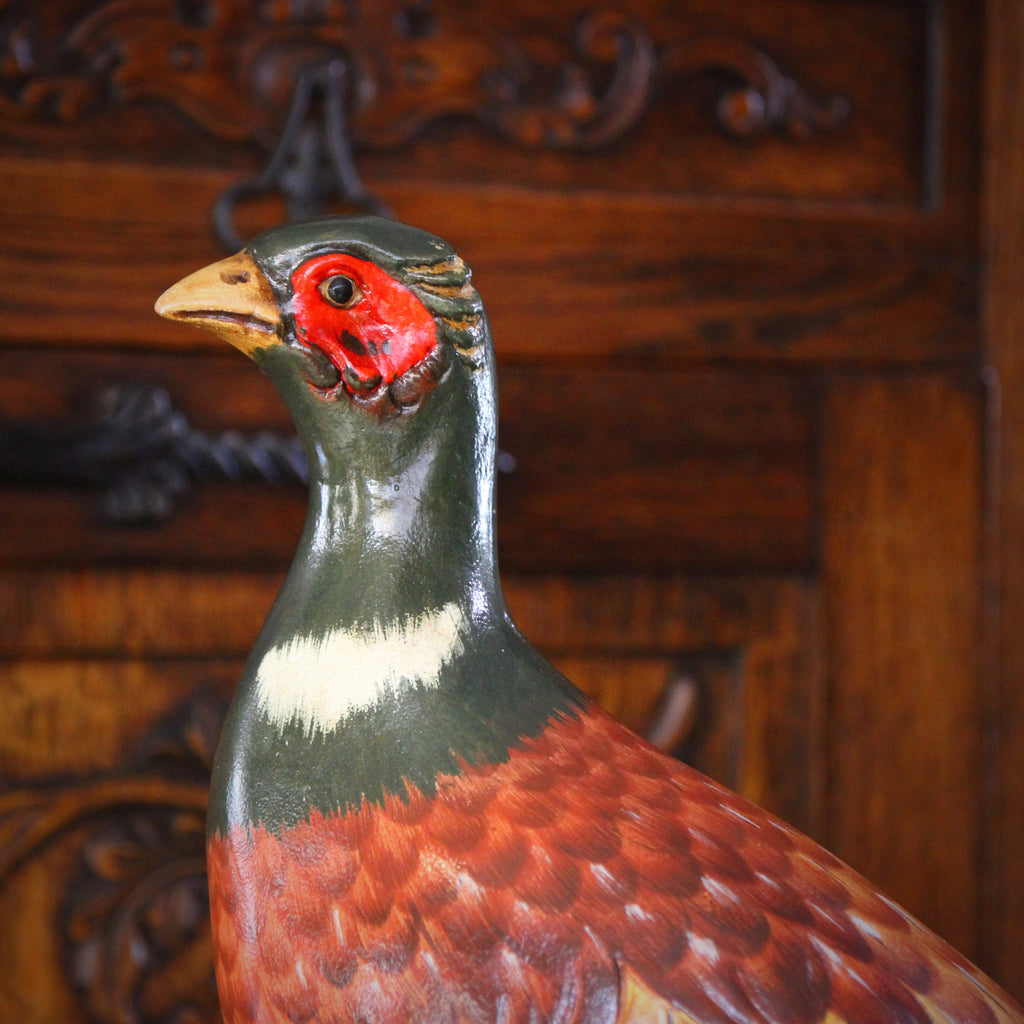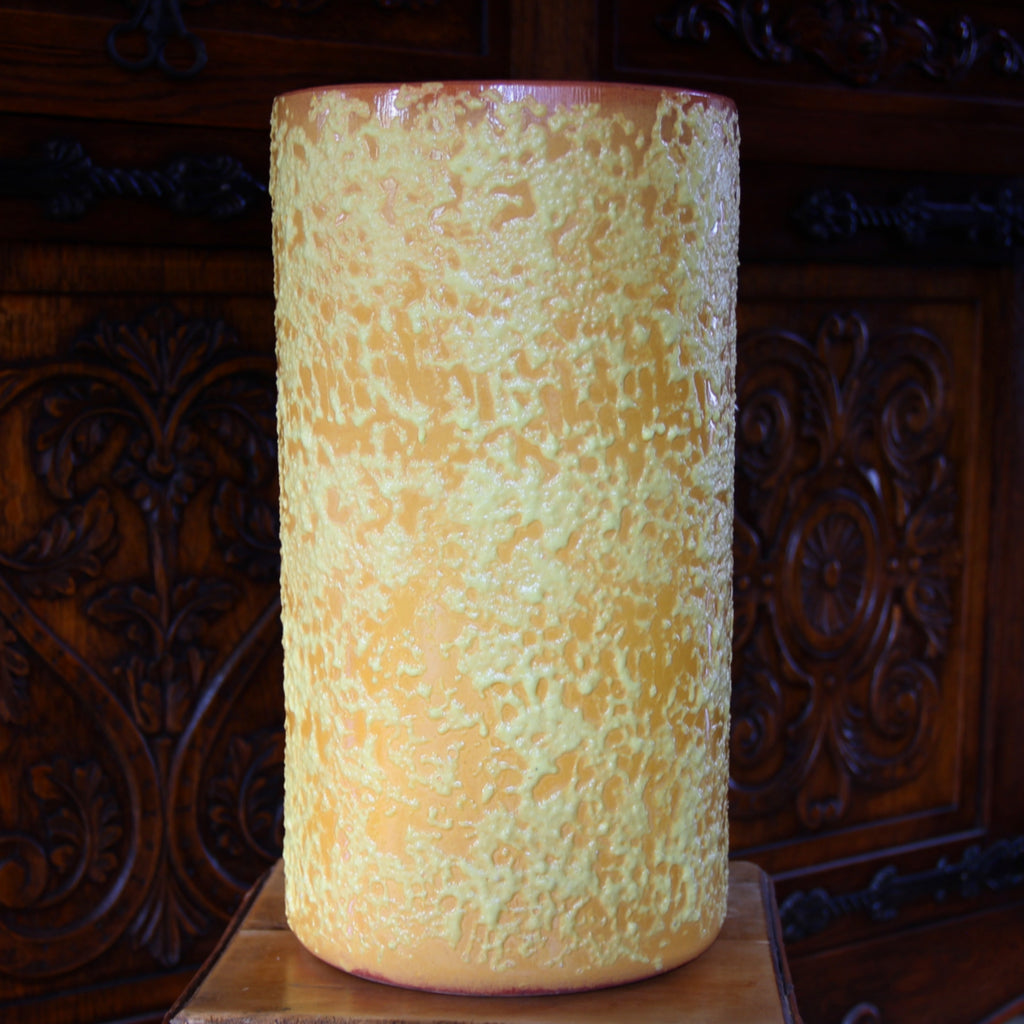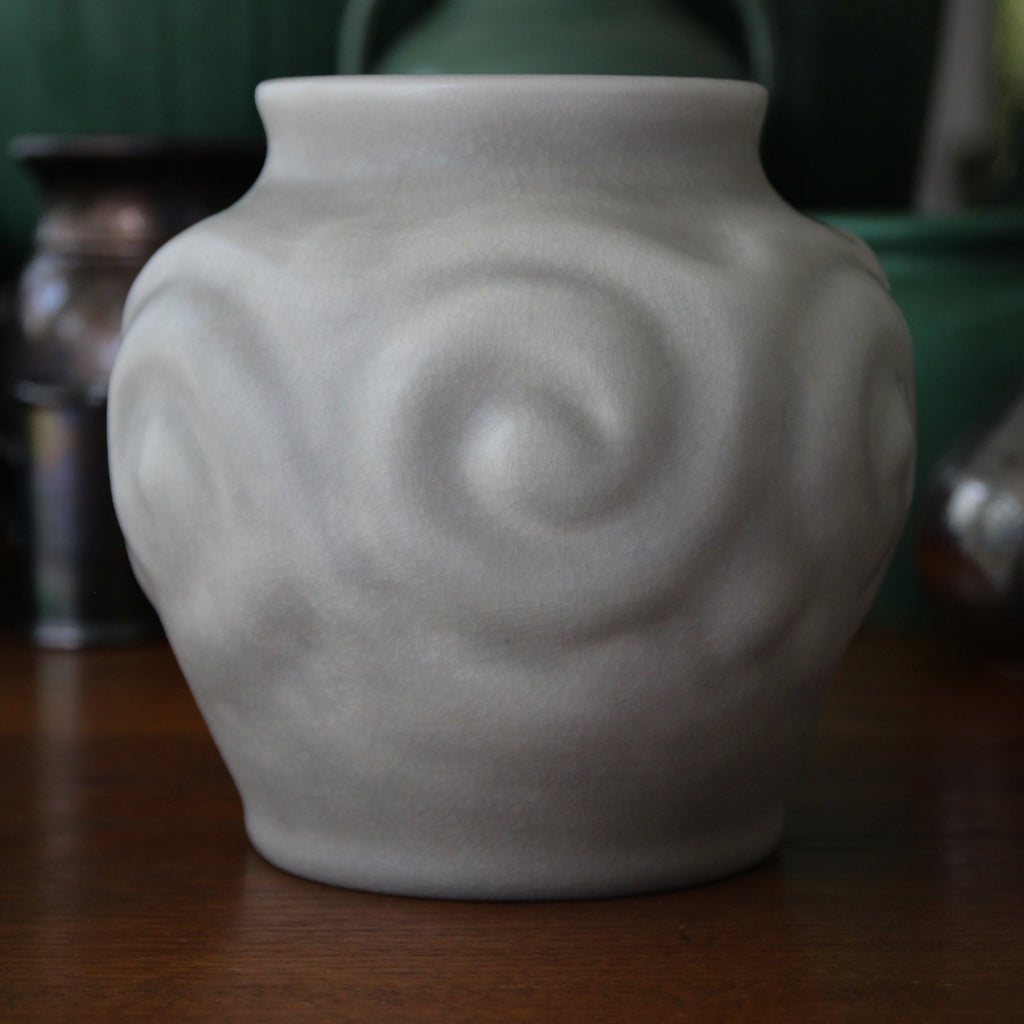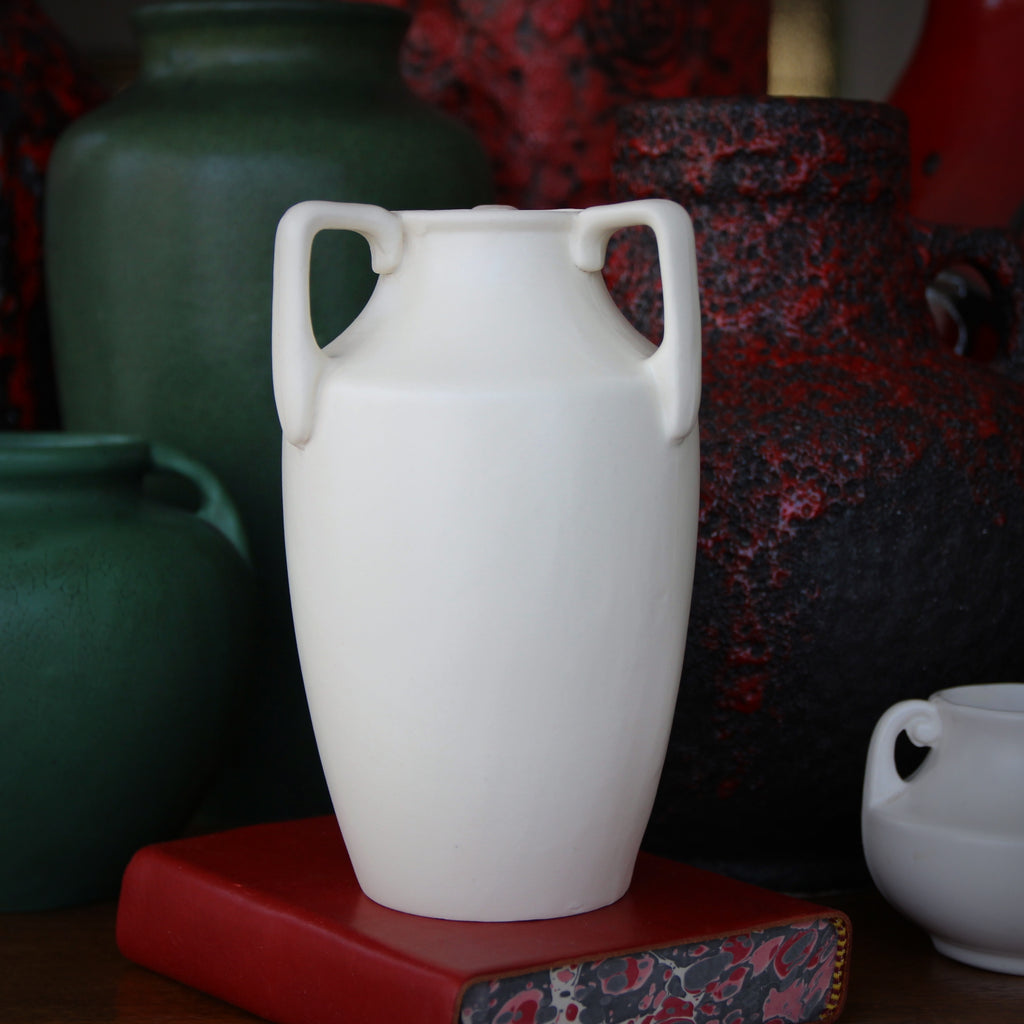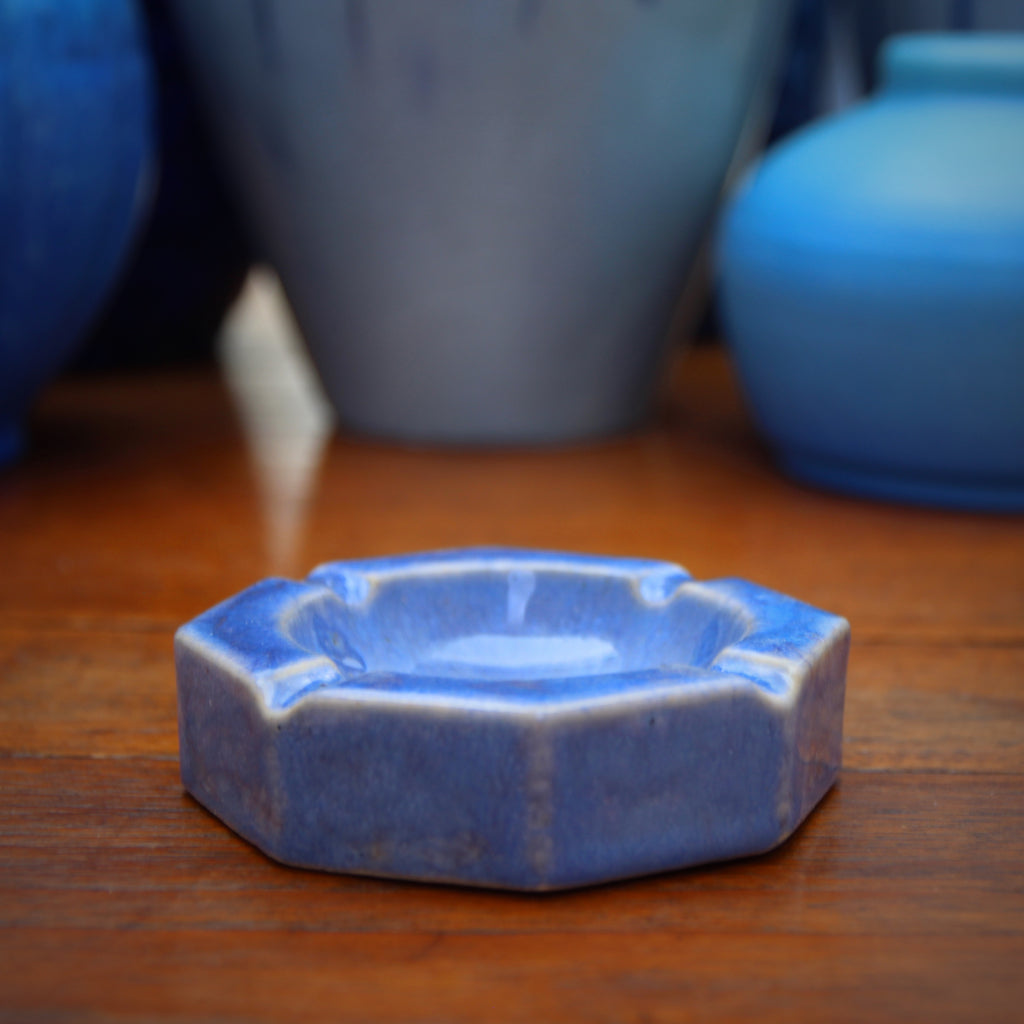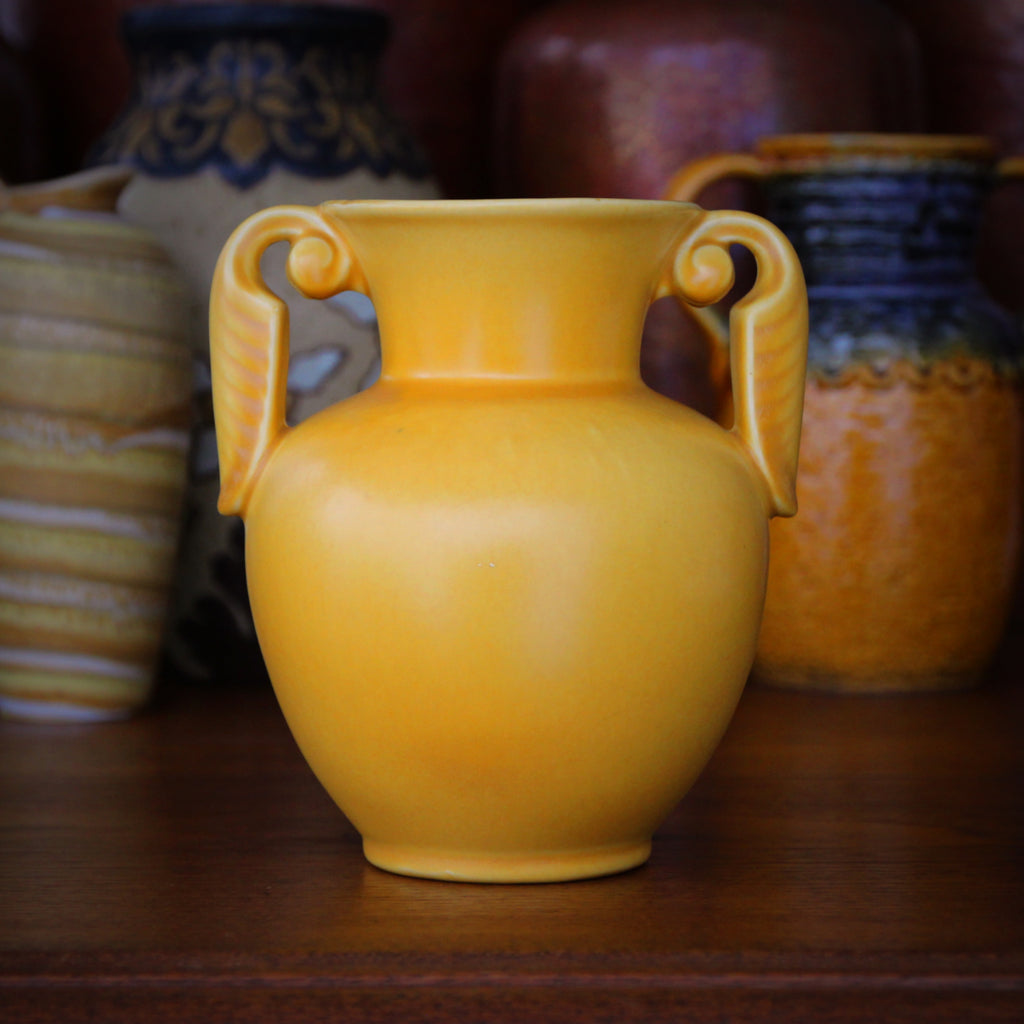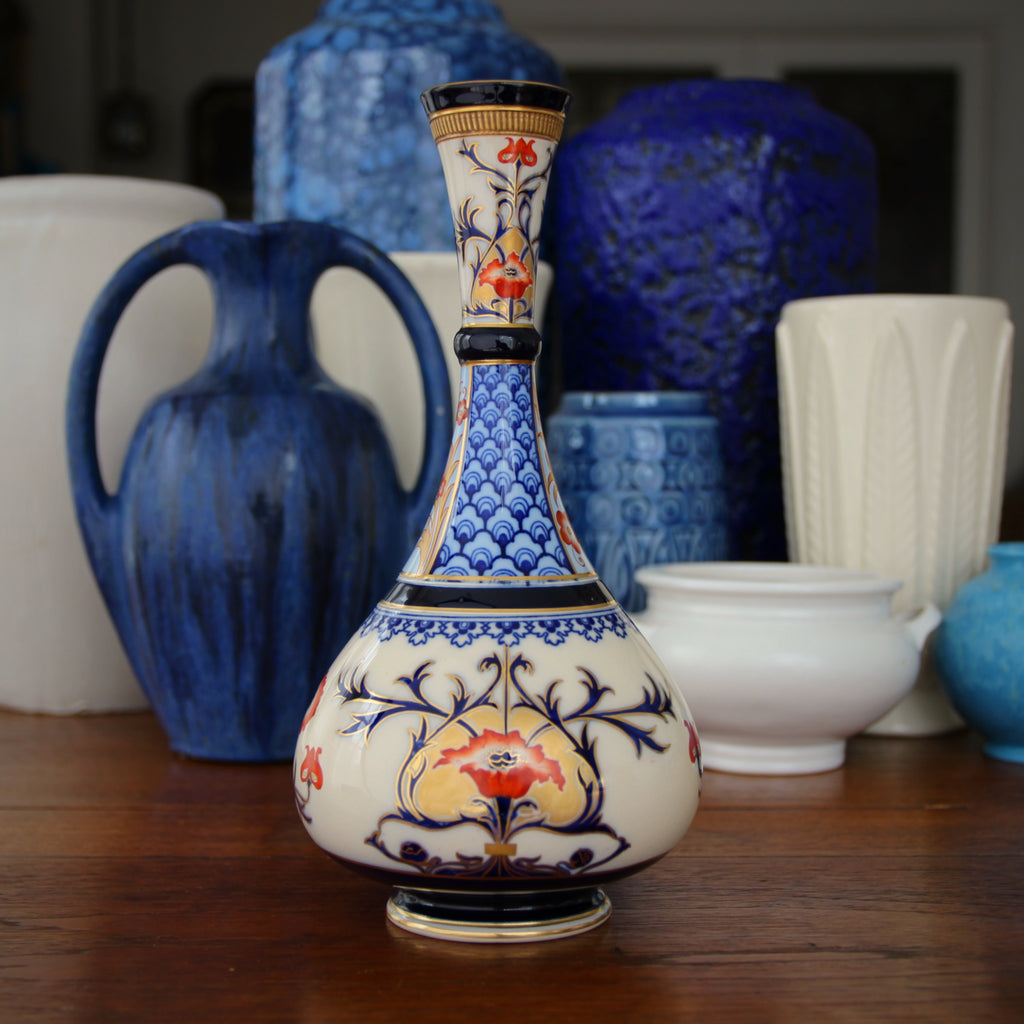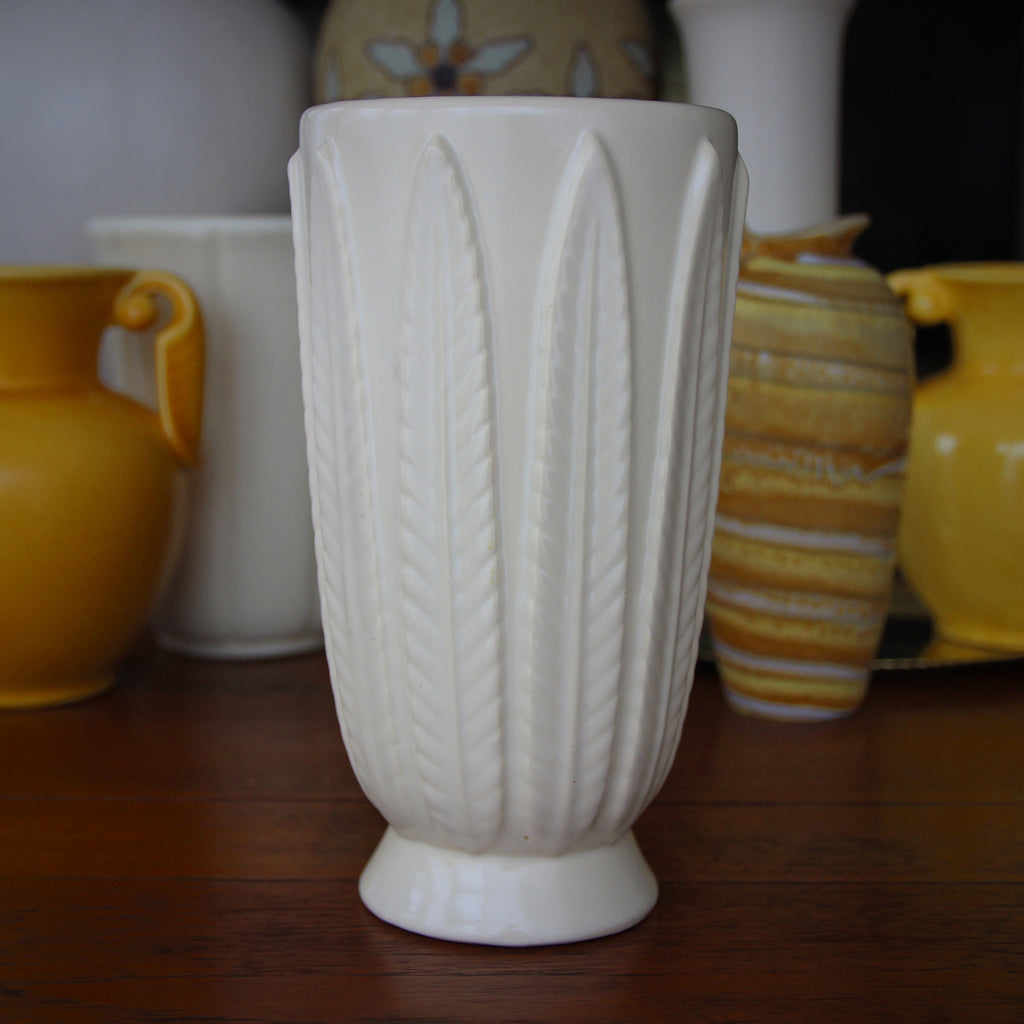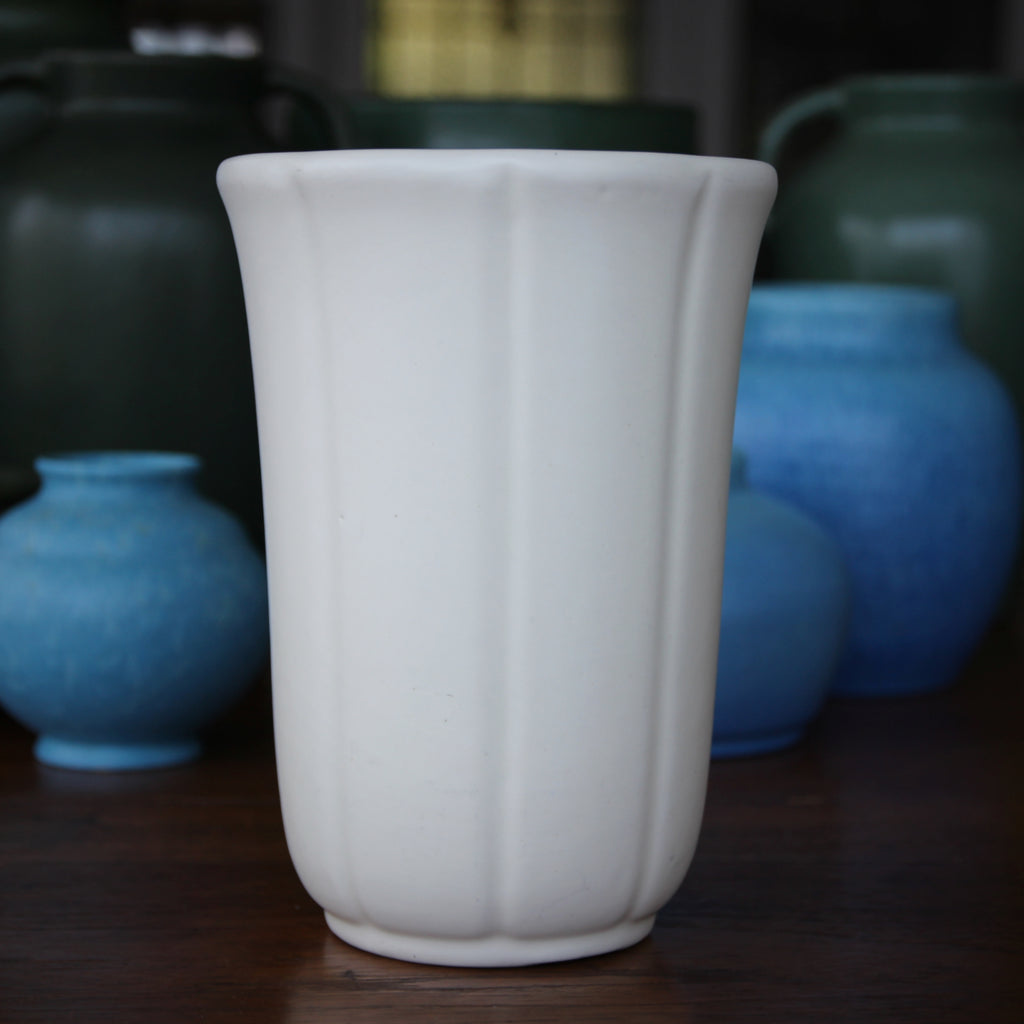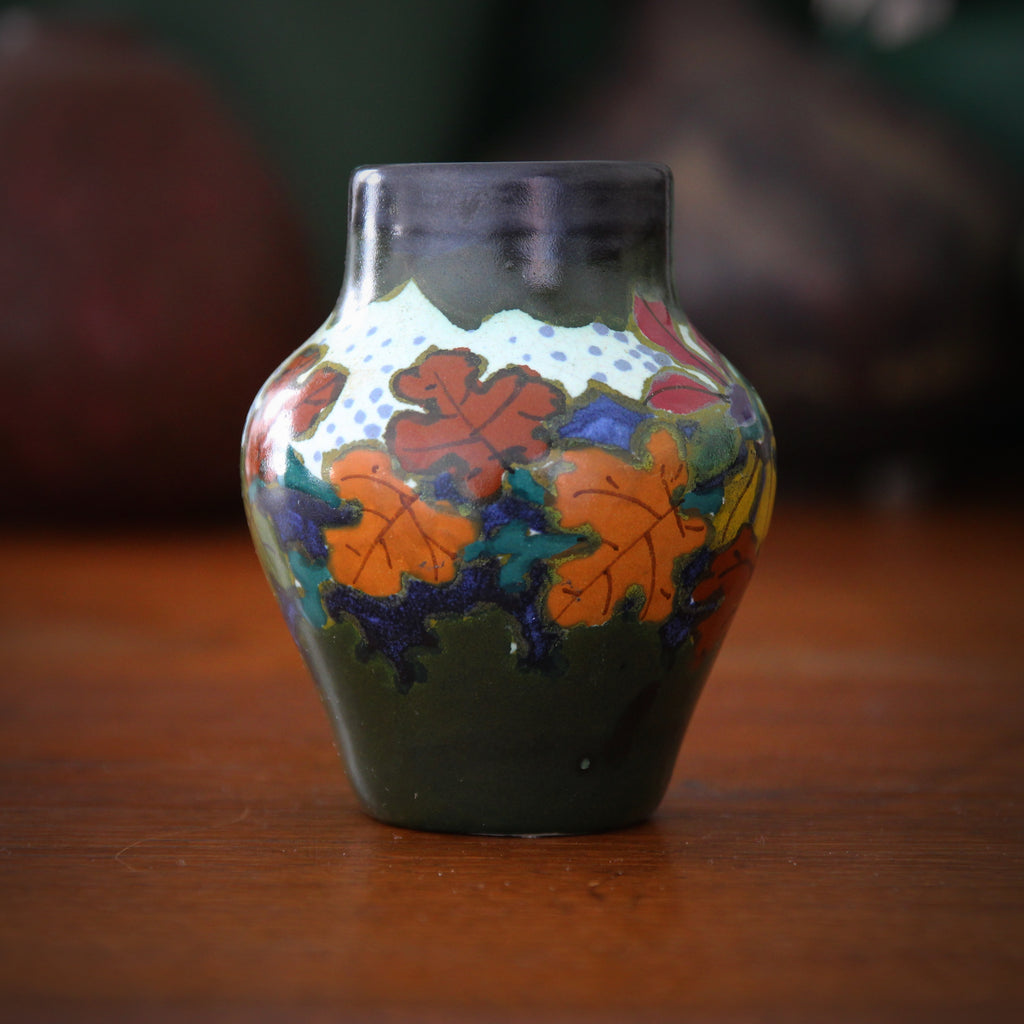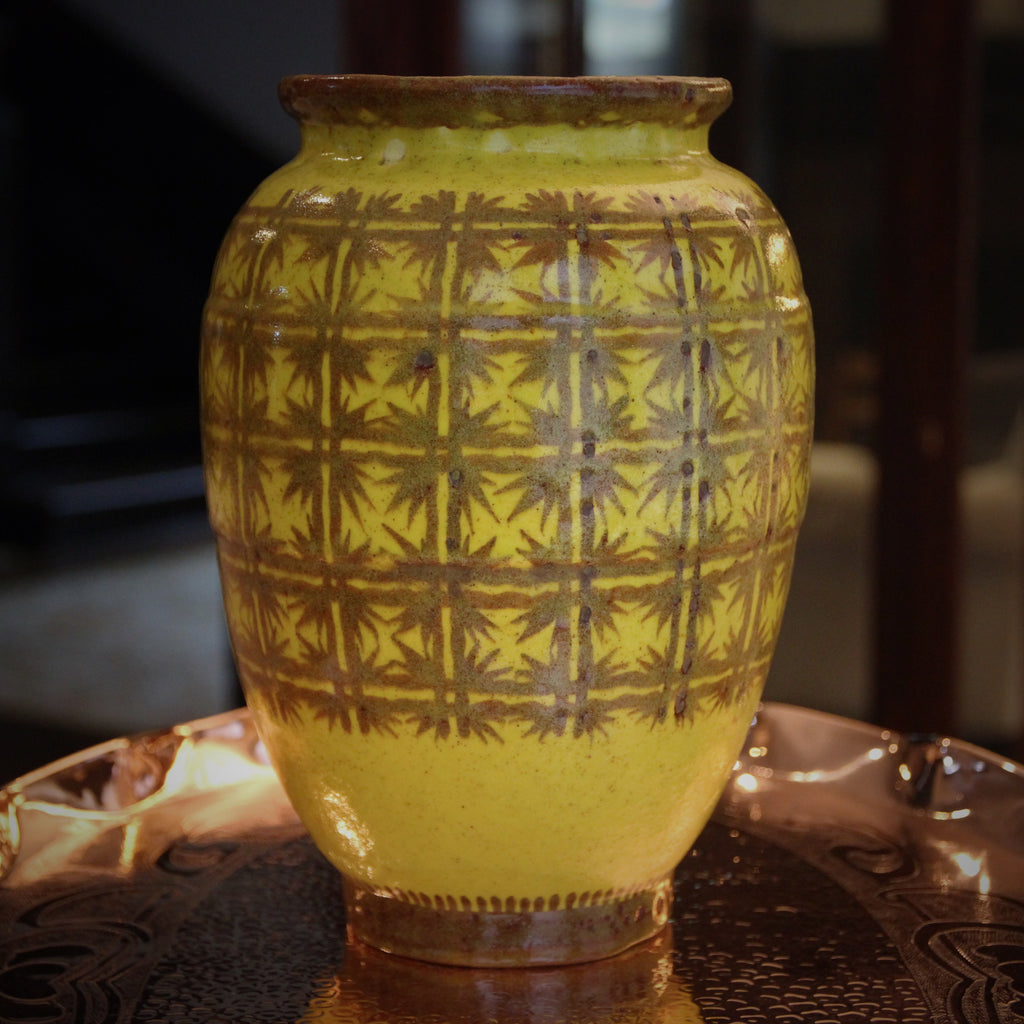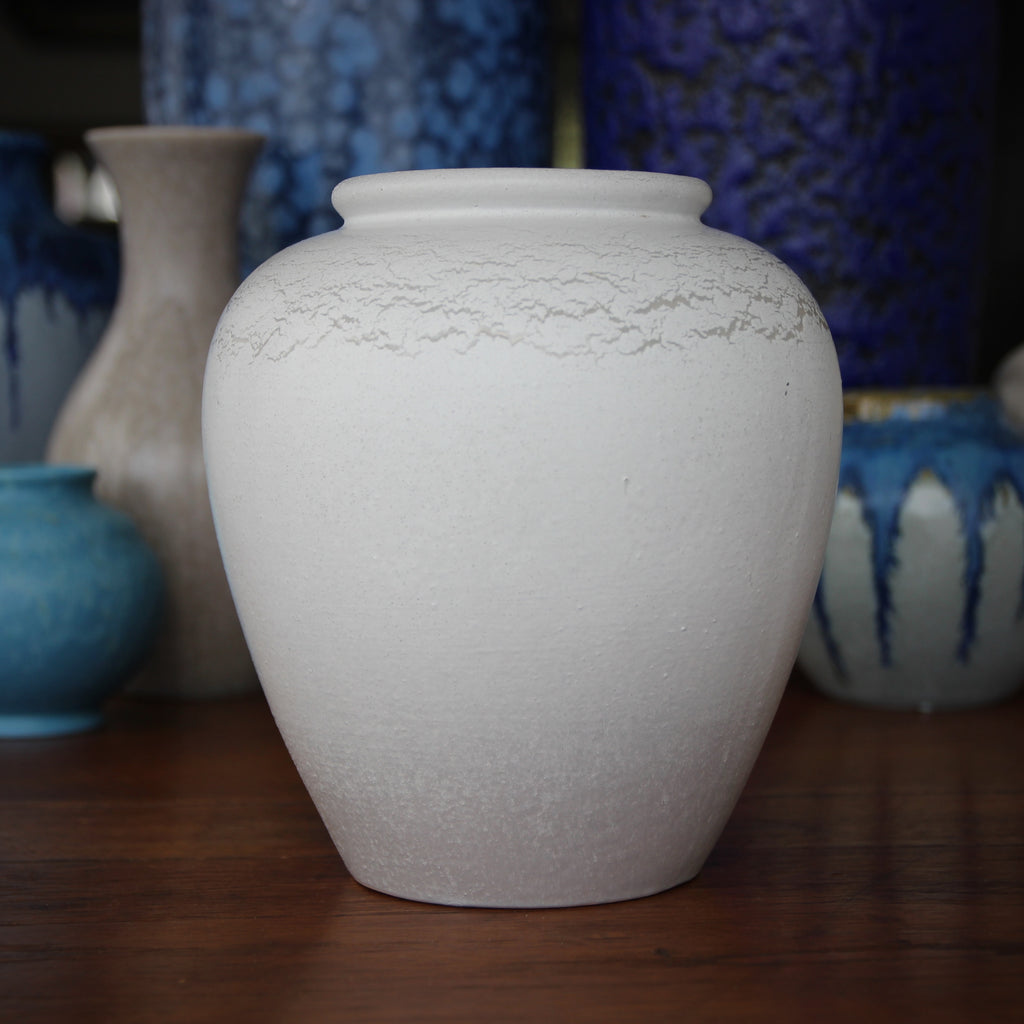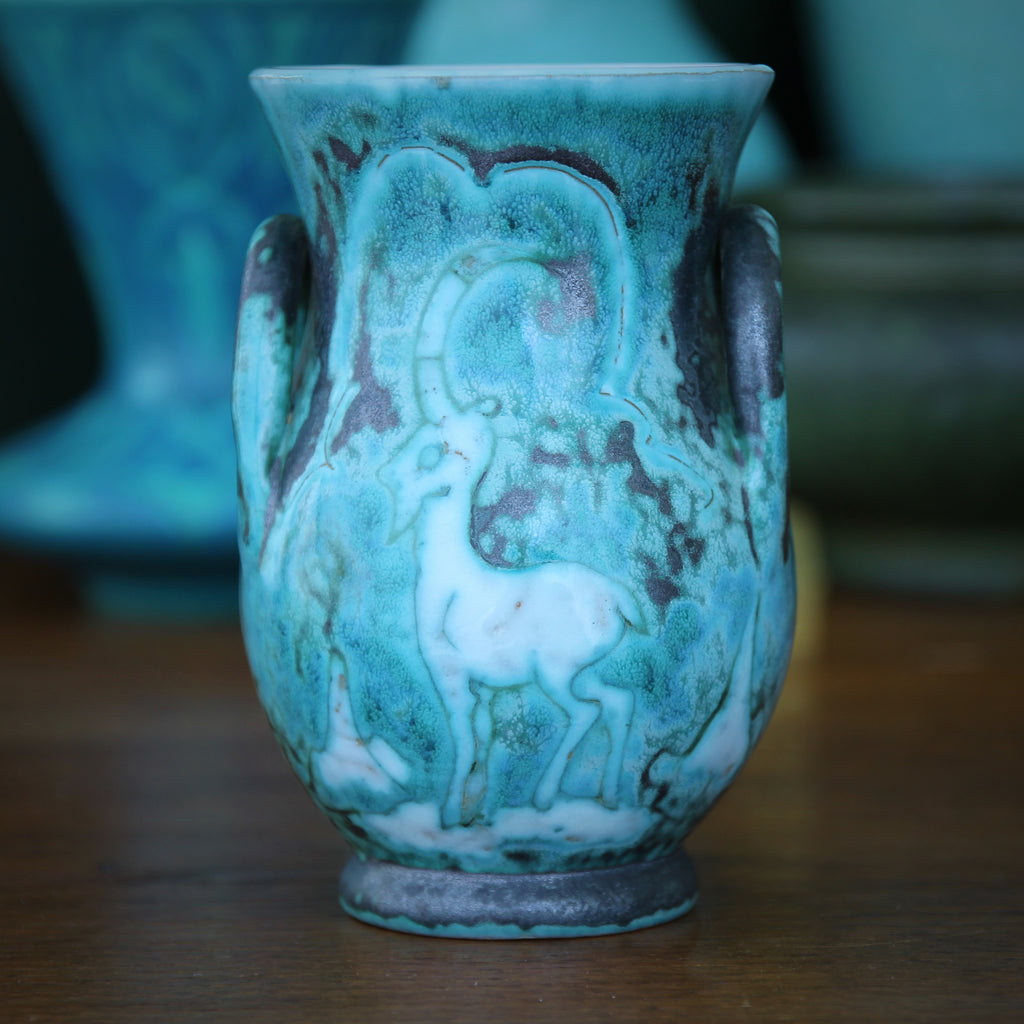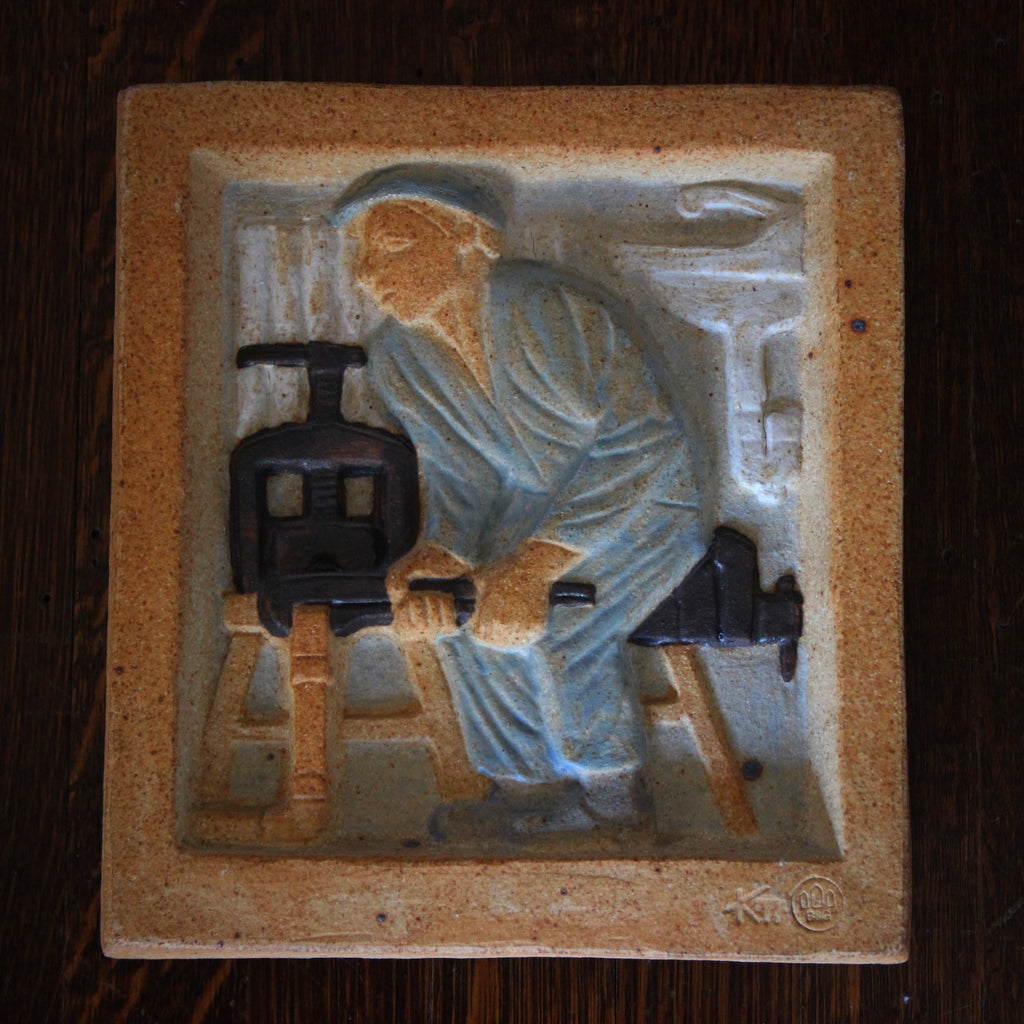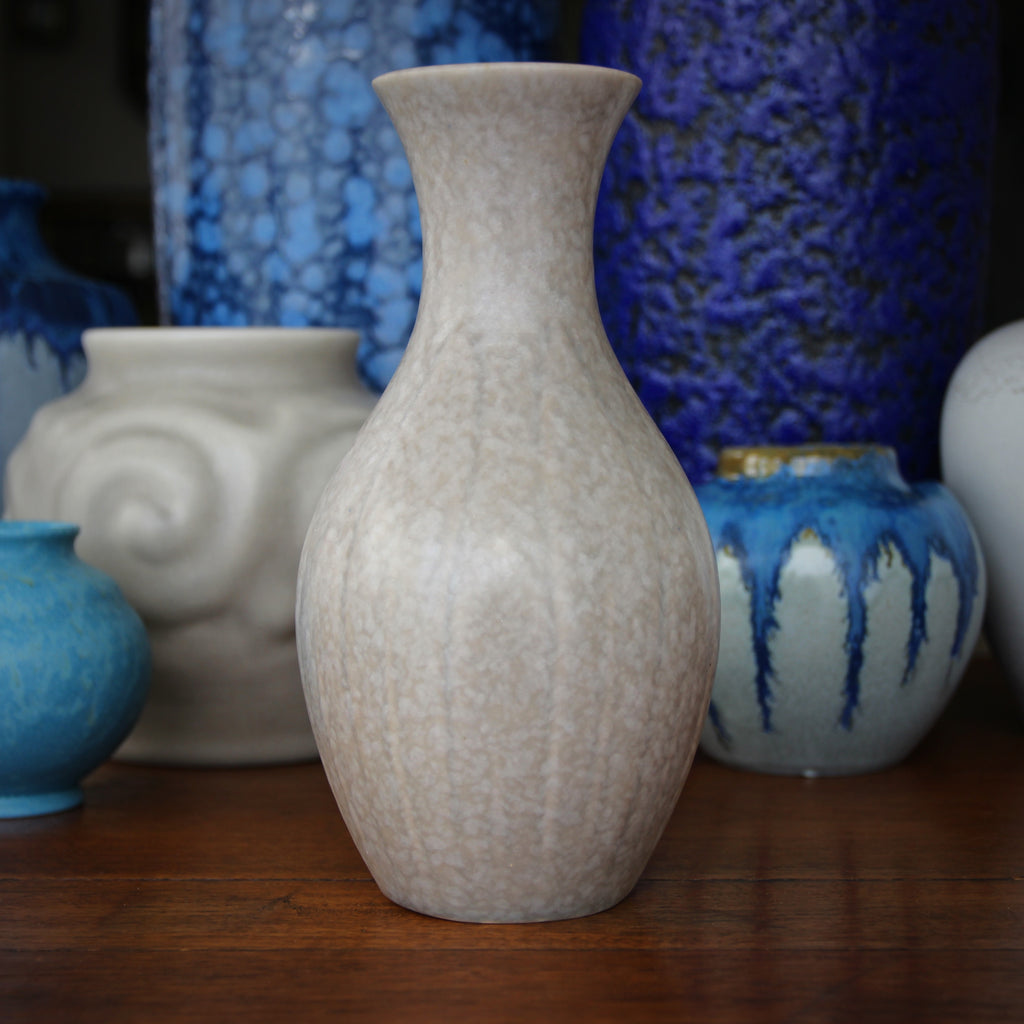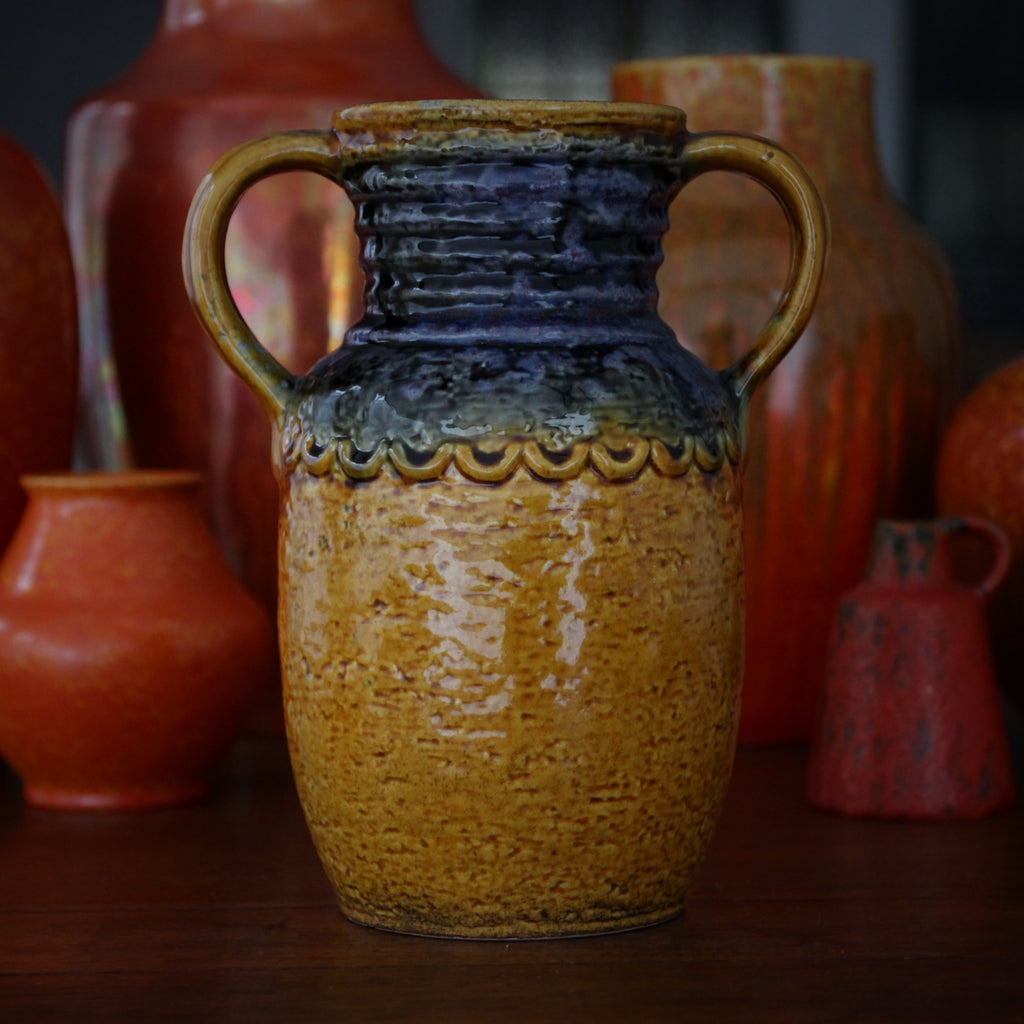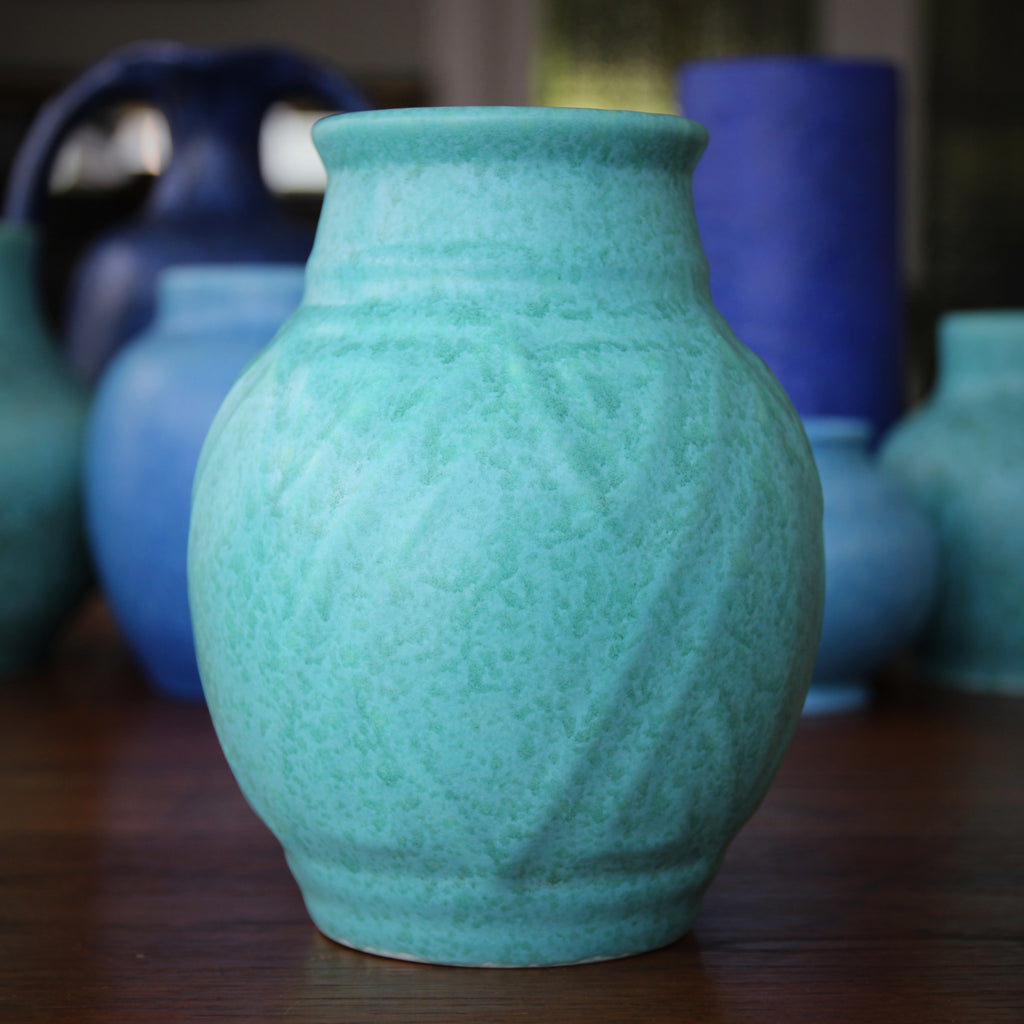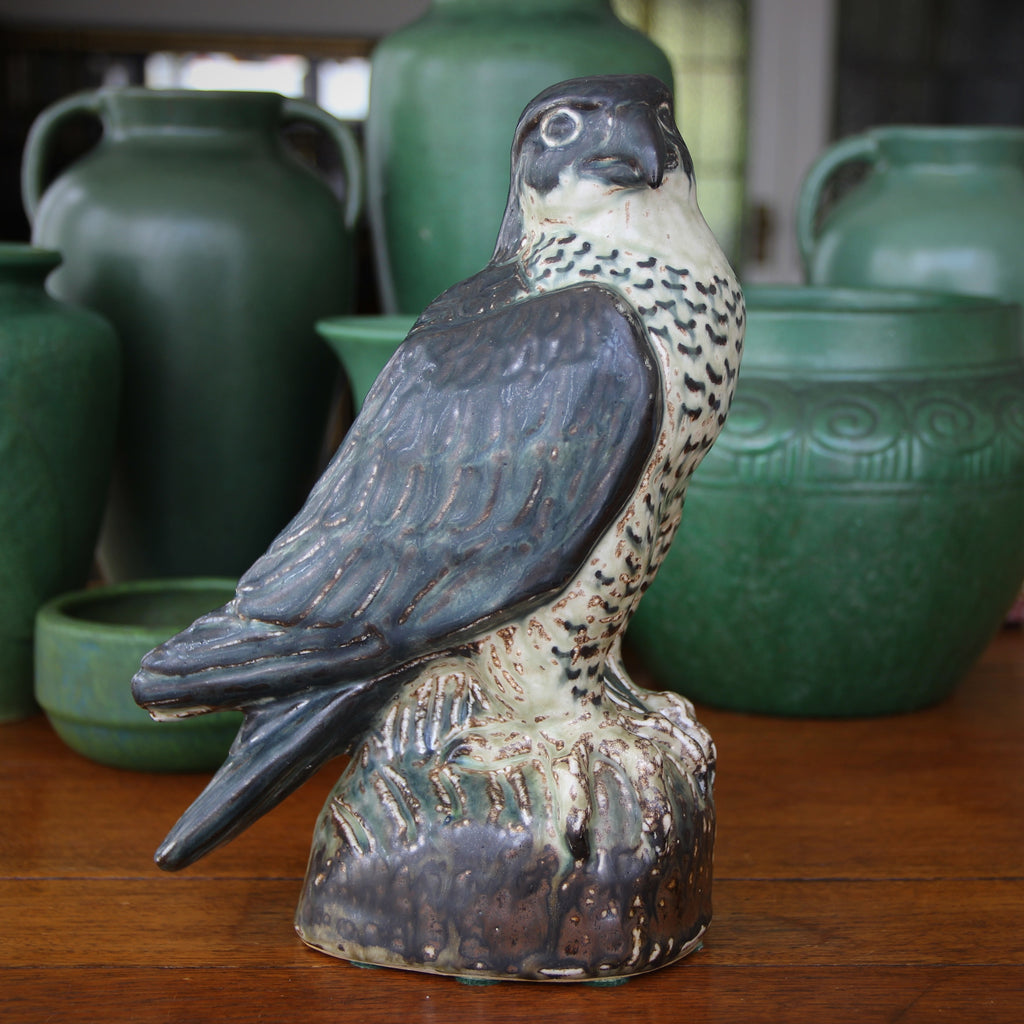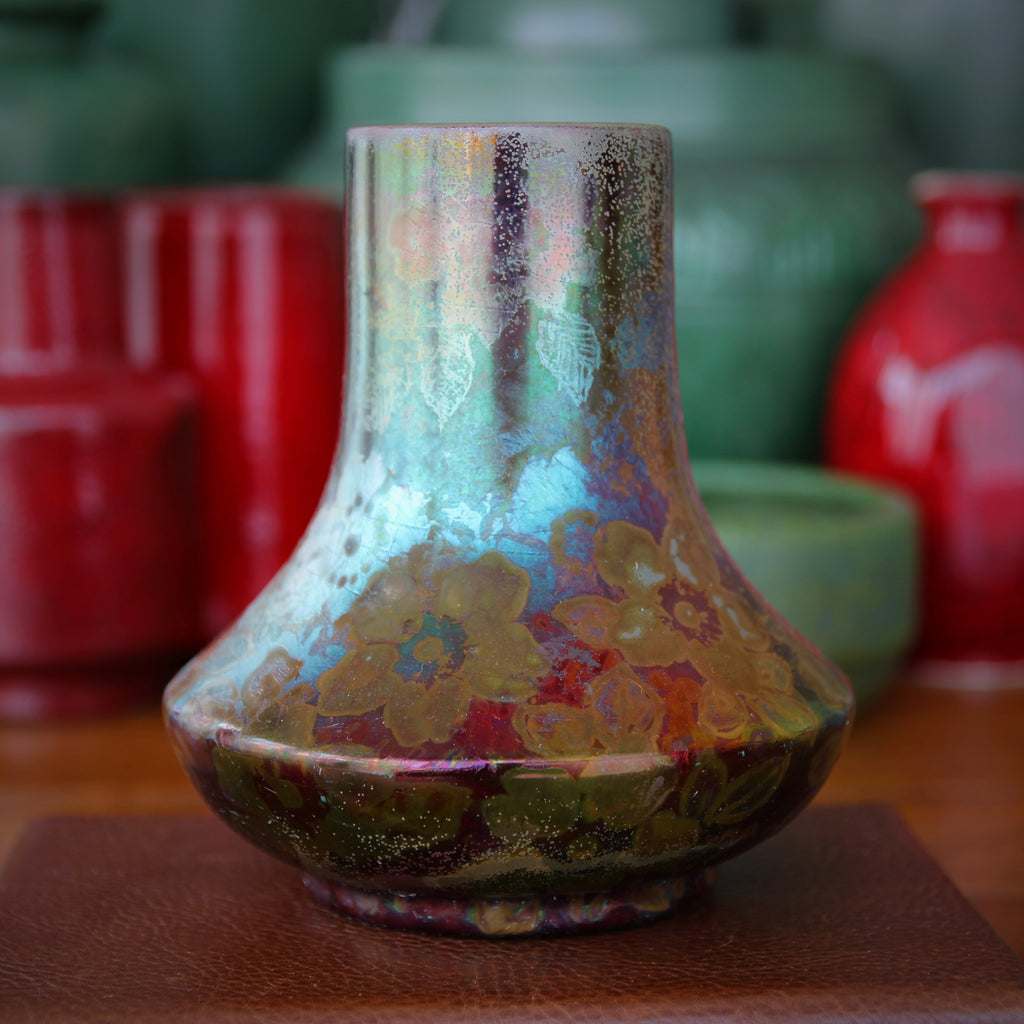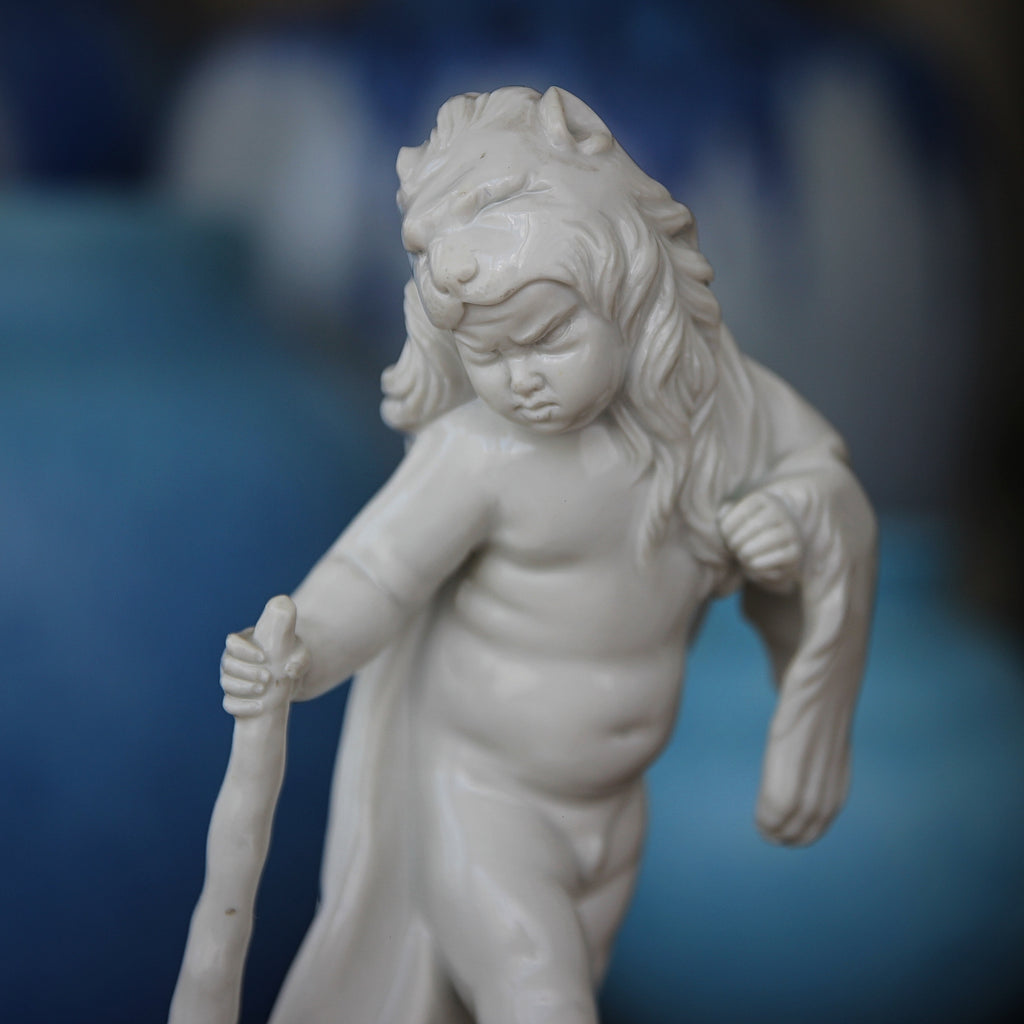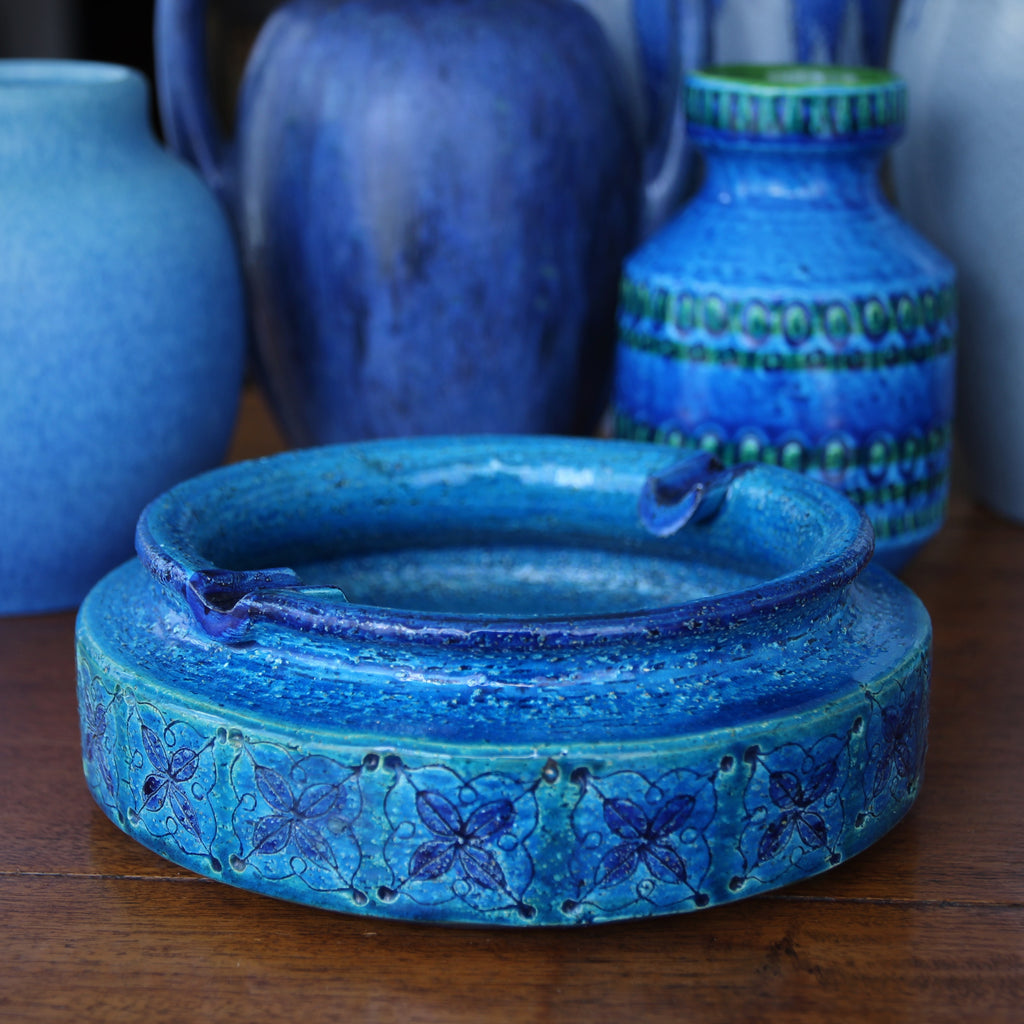JOURNAL — Art Pottery RSS
This "Rabbit of the Year" is scampering to center stage, ready to fulfill his starring role: "I'm late! I'm late!" This stoneware bas relief plaque, made in California, is finished with an aqueous aqua-green glaze. Fitted with a hang wire, the tile is ready to hang in just-the-right spot. He'll be a reminder to all—and especially to those born under the Rabbit—to scurry now, relax later. Good advice, indeed. Click on the photo above to learn more about this handsome sculpted decoration. Though our Greenwich Village store is now permanently closed, LEO Design is still alive and well! Please visit our on-line store where we continue to sell Handsome Gifts (www.LEOdesignNYC.com). We also can be found in Canonsburg, Pennsylvania at The Antique Center...
Hit Those Books!
I've been taking classes at Carnegie Mellon University through the Osher Lifelong Learning Program. Bernard Osher, a San Francisco businessman, left an endowment to create continuing education departments at various universities across the country. The Osher Program is now represented at 125 American Universities (spanning the country)—and provides quality, affordable continuing education (and intellectual and social engagement) for people over the age of 50. The new semester began a couple of weeks ago and I'm already behind on my reading! I'm taking a class on Shakespeare in which we are reading, studying and discussing Henry V (amongst other plays). While most of the courses I've taken at Osher do not require much (if any) reading, one cannot really study Shakespeare with...
On-Track for Spring
True, we are still weeks away from Spring—precisely two months from today—but tiny signs of that blessed season occasionally emerge before us: a muddy squish, an earthy smell, the tender, emerging daffodil buds (already!). Therefore, eager for the promise of Spring, we present this exceptionally sunny Art Deco vase, made in the Thirties by Stangl of Flemington, New Jersey. The form is inspired by Ancient Greek amphora—the bulbous form, corseted neck and flaring rim, punctuated with drooping acanthus leaf handles. And the deep yellow glaze seems to radiate sunshine. Displayed with or without flowers, this vase is sure to be a happy reminder of lovely days—Spring and Summer especially.
And Even More Light
This lamp, sunny even when turned-off, is positively luminous once turned-on. The ceramic body, made in the Sixties or Seventies, is decorated with high-texture, dripping organic orange and brown glazes. It has a particularly comforting presence—and is useful for illuminating your home.
New Year's Day: A Fresh Start
The changing of the year always encourages a fresh start. Quitting bad habits. Turning new leaves. I always like the stripped-down freshness of January. Once the Christmas decorations (as much as I like them) are gone, the spare, angular shape of rooms returns. Space is broadened. Everything looks cleaner.
A collection of matte white pottery has a spare, clean look, quite suited to the January chill. The Art Deco vase, shown above, was made by Stangl in New Jersey.
Happy New Year!
Countdown to Christmas - XI
Germany was the birthplace of Modernist church design (both Catholic and Protestant) in the Twentieth Century. In the Twenties, through the end of the Weimar Republic (1918-1933), Germany took-the-lead in building new religious spaces with a radical, Modernist look. Before World War One, the Church looked-backward for its design inspiration. By emulating older schools of design—principally the Romanesque and the Gothic—the Church believed it was reinforcing the continuity between the modern Church and all that had come before. But, for a few years, German church designers moved in the new, Modernist direction—until the Nazis (who abhorred any Modernist expression) came to power. With very few exceptions, the Germans were quite alone in this early modernization. Modernism would not become popular in churches...
Countdown to Christmas - IV
When I was a kid, I was a member of the 4-H "Horsemanship Project" on Kauai. I had a horse, "Chiquita," who required daily care. I hadn't even heard of "stabling"—and my family would certainly not have paid for it. Instead, every day after school, I'd head for the pasture, feed and groom Chiquita, and fill her bathtub "trough" with the gallons of water which we had to transport with us (no running water at our remote pasture). Most days I would ride; some days I'd have a riding lesson. And, if there was not enough grass for her in the pasture, I would go out with my sickle and cut for her a small truckload of long (itchy!) "elephant" grass....
Looking-Back for Inspiration
One of the signature features of the Arts & Crafts Movement—no matter where in the world it occurred—was the "revival and employment" of important cultural references from the local past: aesthetic elements, literary or folkloric references, historic milestones, or other relics of that specific culture's past. In England, the Arts & Crafts Movement sometimes incorporated Medieval Literary themes: knights in armor, heraldry, "Olde English" phrases. Scandinavian countries would utilize Viking ships, shields and other elements. And the Scots & Irish would freely apply Celtic design motifs—crosses, knots, thistles or shamrocks—into their Arts & Crafts designs. When designers "touched-back" to the culture's past, they were seeking to imbue their works with the patina of time—back to the culture's fundamental origins, back to...
Tlingit Beauty
The Tlingit People is comprised of numerous tribes of Native Americans who live along the Pacific Northwest—in the areas now called British Columbia (Canada) and Alaska. They are a matrilineal society; hereditary roles and property (which once included slaves) passed from mother to daughter. Genetically, they have relatives from Siberia, Russia, though older DNA shows a link to the Japanese Ainu people.
Even before I knew much about the Tlingit Peoples, I was mesmerized by their stunning graphic works—carvings, textiles and paintings—utilizing bold, stylized animals (often in reds, whites and blacks). I found the aesthetic bold, original and timeless; age-old designs look fresh and modern today.
Welcome, October
At one time, back in the Ancient Roman Period, October was the eighth month of the year. This is readily apparent because the prefix "Octo-" refers to the number eight. At the time, the year had only 10 months. September was seventh, November was ninth and December was tenth. Then, around 713 BC, January and February were added to the calendar, in an attempt to lengthen the year—to better represent the actual length of time required for the earth to encircle the Sun. (This "elongated year" at 354 days, was still incorrect. It takes 365.2422 days for the Sun to complete its Solar circuit. This is why nearly every fourth year is designated a "Leap Year.") Those born in October—mostly Libras and...
Bevy of Brooches - II
Simply put, a "cabochon" is a plain, domed "stone"—without faceting—which is rounded and polished on the top and (usually) flat on the bottom. The term refers mostly to gemstones, shaped this way to be mounted into jewelry. But, during the Arts & Crafts period, craftsmen made cabochons out of glass or glazed ceramic to be used as decorative elements (embedded in metalwork or woodwork). One of the aims of the Arts & Crafts Movement was to elevate the beauty of simple materials. In this case, a beautifully glazed, hand-crafted ceramic rondel could be appreciated as much as an expensive, precious gemstone.
Forever Fresh
When I visit any good art museum, I always spend a few extra minutes standing before the Van Goghs. I never fail to be moved by his work. His composition, his style, his brushwork (perhaps knifework), and his use of color are enchanting to me. I know of his difficult life and tortured soul—and I attempt to "feel" his spirit, radiating-out from the canvas, communicating across the centuries. I feel a sadness that he knew so little happiness in his life. That he never sold a single piece in his lifetime. And that he would never know how much joy and beauty and emotion he would bring to so many admirers, all around the world, for so many decades. But...
Labor Day
Today we honor the men and women who have built our Nation—with the strain of their backs and the skill of their hands. Happy Labor Day.
Welcome, September
Welcome, September, and your sublime birthstone, the Sapphire. Sapphires are one of the four "cardinal" gemstones, alongside diamonds, emeralds and rubies. Though it is best known as a deep, pure, saturated blue color, it can come in a variety of colors (or even be bi-colored). It is a variety of the "Corundum" family and it achieves its heavenly blue coloration from the presence of aluminum oxide in the stone. A red sapphire is called a ruby. From the Middle Ages, sapphires have symbolized loyalty and trust. People would wear sapphires as a talisman to protect against danger or other harm. Italian superstition believes that sapphires will protect the wearer from eye disease and melancholy. A 45th wedding anniversary is known...
Independence Day
On this day in 1991, Ukraine issued its Declaration of State Sovereignty of Ukraine—essentially, its Declaration of Independence from the Soviet Union (which would, itself, collapse four months later). This wasn't the first time Ukraine had declared its independence from Mother Russia. On 22 January 1918, during what would be the last months of World War One (and the lives of the Romanov Dynasty), Ukraine declared itself free and independent. This date was formerly celebrated as Ukrainian Independence Day, especially amongst the diaspora.
Today, 24 August, is Ukraine's most important state holiday. Military parades, aviation flyovers, and presidential speeches are held in Kyiv. Unfortunately, the Russian invasion of Ukraine has made such celebrations difficult, if not impossible.
Simply Handsome
It's hard to go wrong with simplicity. Well-designed, good quality simplicity. In the case of this vase, the simple trumpet-form shape is functional while not distracting from the main event—the profusion of flowers above. It's tall, too, over 12 inches high. This provides a dramatic elevation, allows plenty of room for stems and ensures a good supply of water to refresh the flowers. And the fairly narrow top rim serves to hold-together the flower stems, creating a naturally dense, luxurious arrangement. The vase was made by Haeger, in Dundee, Illinois, in the 1960's or 1970's. A satiny matte white glaze completes the purity of aesthetic.
Blessed Hands
The Prinknash Abbey (pronounced "Prinidge" or "Prinnish") is a Benedictine monastery founded in 1096 in "The Vale of Gloucester," about 100 miles northwest of London. In 1539, as Henry VIII was stripping the Catholic churches and closing their monasteries, he seized the abbey to be his hunting lodge. In 1928, the abbey and its grounds were returned to the Benedictine monks. In the 1940's, a supply of red clay was discovered on the property and a pottery workshop was built. Monks would throw little pots and bowls, decorating them with their signature metallic gunmetal glaze. These vessels would be sold to help support the work of the abbey. But producing hand-thrown vases, by monks, was a labor intensive business—and, naturally,...
Lustrous
In the world of ceramics, "lustreware" refers to the family of pottery in which a delicate, iridescent metallic glaze—usually a very thin treatment—lies upon the original (traditional) glazing. As with most pottery-making, the raw clay is formed and fired once, creating a plain "bisque" piece. The stoneware, ceramic or porcelain is now solid though not decorated. The piece is then glazed and a second firing "fixes" the glaze to the underlying ceramic. With lustreware, a light metallic glazing is applied over the first glaze—and the piece is fired a third time, but only lightly, enough to soften the first glaze and create the desired chemical reaction in the lustre glaze. Lustrous glazes use metal: usually gold, silver or copper. The...
Black Beauty
Yesterday we discussed Rob Roy, the horse who meets a tragic end in the 1877 novel, Black Beauty. The horse is put-down, shot, after breaking his leg during a fox hunting jumping accident. His rider, George Gordon, dies, too, having broken his neck in the fall. Black Beauty was written by English author Anna Sewell and it is her only published work. It was written in the final years of her life and published a short five months before her death. Sewell had been injured in an accident as a child and, due to poor medical treatment, was never able to walk again. She spent much of her life sick and bedridden, though, when she was able to leave the house,...
Summer Green
I love being surrounded by green! Indoors, outdoors—I find the color relaxing, soothing and so full of life. So it's no surprise that I began building a nice collection of matte green Arts & Crafts pottery as soon as I opened the store in 1995. Interestingly, one of the first pieces I sold (my first week) was a gigantic matte green jardiniere. I have never seen another piece so large (at any price). And I learned an important lesson about marking prices on "statement pieces." The piece above, made by Zanesville around 1910, is finished in a restful matte green glaze. A simple bas relief botanical motif surrounds the bowl—which is perfect for forcing paper whites or collecting pinecones, wine corks...
Independence
We at LEO Design wish you a happy, safe and restful Independence Day. And we share our fervent prayer: that Democracy will survive in America, deepen its roots and flourish—becoming, once again, a model to the World of freedom from autocracy, theocracy and thuggery. It's a prayer that collective and individual freedoms always contribute to a better, safer and more loving society. A society where every individual may achieve his or her chosen potential.
Keith Murray
The architect and industrial designer, Keith Murray, is considered one of the most important of the Art Deco (Art Moderne) periods. He was born in New Zealand in 1892. As a young man, he worked as a draughtsman in an architectural office—which was to greatly influenced his future career as an architect and industrial designer. Murray also harbored a passion for aeronautics and was involved with amateur plane-building and flying in New Zealand. During World War I, Murray became a distinguished Royal Air Force pilot. After the war, he studied architecture in London. But Murray had difficulty finding work as an architect and made-ends-meet by doing commercial illustration work. During the Paris Exposition of 1925 (of decorative and industrial arts),...
Breaking the Rules
Decades ago, I made the decision to prioritize antique and vintage ceramics pieces in my store. Although contemporary studio ceramics were often superior to the older, mass-produced pieces (in terms of finish, execution and attention to detail), I simply did not have the shop space to display both types properly. I had to choose and I sided with the antique pieces.
Nevertheless, intriguing "new pieces"— by living ceramicists—would occasionally cross my path. I recognized their quality, artistry and rarity (as they usually were made in very small batches, and were sometimes a "one-off" specimen). So I make the very occasional exception and spring for a contemporary piece (when I cannot help myself).
Transition to Summer
Summer begins today at 5:14 am (Eastern). It's the Summer Solstice—and the longest period of daylight in the Northern Hemisphere. Technically speaking, the Earth's Northern Pole is most-tipped toward the Sun, which accounts for the long period of sunshine (in the North). Tomorrow, the Earth will have begun slowly "tipping-back," as Summer progresses and we move (unhurriedly) toward the Autumn and Winter to follow. Of course, our friends in the Southern Hemisphere are experiencing the opposite pull of the seasons; today will be their first day of Winter (and their shortest day of sunlight). Just in time for summer: soft and restful blues and greens. This English Arts & Crafts vase, date marked between 1902 and 1922, was hand-decorated (and...
Countdown to Father's Day - XI
For the handy Dad: a Danish Modern "Plumber at Work." This heavy stoneware tile was made by Karl Otto Johansen for Bing & Grøndahl around 1970. It was part of a series of plaques commemorating various trades: plumbing, carpentry, blacksmithing. Johansen also sculpted decorative bas relief plaques in themes of nature and animals.
In Black & White - VIII
Though, over the decades, I have occasionally come across a black vase—usually from the 1970's and usually with rather uninspired, unsophisticated glazes—they are never as nice as this handsome English specimen from the period between the Wars. Hand-thrown by Edward Thomas Radford and date marked 1920 - 1938, it is finished with a sublime satin black glaze—a thrilling example of good taste and dramatic self-confidence. One can still appreciate the horizontal "finger ribs" which Radford left in the still-soft clay. It was made for Pilkington Royal Lancastrian.
In Black & White - VII
While we may still yet enjoy a few crisp evenings—blessedly allowing us to leave our windows cracked-open all night—the "bear's share" of the cold weather will be well behind us. Though that bad news won't dissuade this happy little chap: a Danish Modernist stoneware rolling polar bear sculpture made by Royal Copenhagen. A lightly painted face adds to the sculpted texture of the modeling (see the waves of fur playing against his chubby body).
In Black & White - V
Black and white becomes—or can become—a shade of grey. Such is the case with this West German Modernist pitcher made by Emons & Söhn: foamy white dappled over black. I find such a simple coloration and texture endlessly fascinating. Very understated. Very elegant. It reminds me of the planet Mercury, whizzing quickly around the Sun, some 90 million miles from Earth. What a wonderful addition this piece would be to a collection of black, white and grey ceramics!
In Black & White - III
The Abingdon Sanitary Manufacturing Company was founded in 1908 in Knoxville, Illinois. The company quickly distinguished itself by making superior "sanitary ware," that is toilets, sinks and water fountains. Their high-quality clay blend (from England, Georgia and South Dakota) resulted in a very durable product. Their satin glazes were also beautiful; Abingdon was the first plumbing fixture manufacturer to produce color-glazed options (in 1928). Abingdon was tapped to produce all the plumbing fixtures for the Chicago World's Fair in 1933. But the Depression—and WWII to follow—was not easy on the building trades. Orders for sinks and toilets (ummm...) went down the drain. In the late 1930's, Abingdon made the dramatic decision to begin crafting small, decorative and gift items. Using...
In Black & White - I
As we straddle the seasons—that unpredictable period between Winter and Spring—let us shine a little light on another sensory counterpoint: the interplay of black and white. Over the next few days, we'll share part of our collection of black, white and black & white merchandise—all for sale in our on-line store.
A simple, Modernist shape surges to life with the addition of a dynamic, mottled glaze—foamy white dappled over black. This West German vase, made by Scheurich in the 1960's or 1970's, looks sensational alone—or even better as part of a black and white grouping.
Flowers for Mom - VIII
If you'd like to give mum some flowers for Mother's Day, you couldn't do much better than this. This sublime French Art Nouveau vase was made in the South of France in Golfe-Juan—along the Mediterranean—by the unparalleled ceramicist Clément Massier. Massier pioneered the production of lustrous metallic glazes, often artfully combined with underlying hand-painted decoration. His contribution to the French Art Nouveau includes an installation at Maxims de Paris and the inclusion of his works in the Musée d'Orsay and the Metropolitan Museum of Art. As a young artist, Massier worked in his family's ceramics workshop, at the side of an Italian ceramics master, Gaetano Gandolfi. The young man was especially fond of Ancient ceramics—Egyptian, Greek and Roman—as well as...
Flowers for Mom - VII
Here's another sublime Gouda Dutch vessel: an Art Nouveau "genie bottle" vase, decorated with a quartet of stylized, hand-painted tulips. The tulips, which have a real Arts & Crafts graphic sensibility, float before a "wall" of hand-painted circles and dots—a Secessionist wall paper, if you will. The corseted gourd-shaped form lends an additional measure of exotic romance.
Flowers for Mom - V
While Gouda Dutch ceramics can often exhibit beautiful forms—and, indeed, this pitcher does have a graceful silhouette—each piece of pottery distinguishes itself based on the coloration and design of its beautifully hand-painted decoration. And this pitcher's painting is sublime. The unexpected combination of blues, mustard and olive green create a sophisticated palette, the height of understated refinement.
Most Gouda pottery (pronounced "How-da," like the cheese) brandishes a higher-contrast color palette. These color choices create a bolder, more prominent appearance—a louder visual "pop," if you will. Instead, the piece above doesn't demand attention. It sits in its appointed place, waiting for those with superb taste to recognize its quiet sophistication.
Flowers for Mom - III
This French Art Nouveau vase, made by Revernay in 1896, enjoys an interesting ancestry, at least as ceramics manufacturing goes. About a century earlier, in 1790, Nicolas-Henri Jacobi opened a ceramics workshop, Utzschneider et Cie, in Sarreguemines, France (in Moselle, not far from the Bavarian border). When an early customer, Emperor Napoleon Bonaparte, started placing orders, the company's fortunes were boosted considerably. Decades later, in 1871, Bavaria (and Prussia and several smaller Germanic regions) consolidated to form modern Germany—which promptly preceded to annex the Moselle region of France. When this happened, Utzschneider opened a second workshop in Digoin, about 280 miles deeper into central France. Here they began producing works under the Revernay name.
Flowers for Mom - I
Every now and then I find a piece—a mystery—that is quite unlike anything else I've collected in the past. I'm certain that the piece "has age." I perceive that it has quality. And I know that I like it aesthetically. But the questions remain: who made it, where and when? In time, I've learned to trust my intuition and make the leap. Only rarely have I come to regret such a purchase. This vase, which I found in America, is the second such piece I've uncovered in 30 years. The first, purchased 25 years ago, is identical except for its matte chocolate brown glaze, a bit crazed (and it's safely ensconced in my private collection—alongside the other chocolate brown...
Happy Mother's Day!
A loving thank you to all the women—mothers, step-mothers, aunts and educators—who have devoted their lives to nurturing and developing us. Perhaps the most important of all vocations, mothering mostly toils-on despite too-infrequent expressions of gratitude (and even lower pay). The best mothers will admit, rather promptly, that their reward can not be measured in words or money. Nevertheless, we grateful beneficiaries, could certainly do a better job of expressing our humble gratitude.
The Danish Modernist sculpture, shown above, captures an ursine mum lifting her little one in a moment of playfulness. It is sculpted in stoneware by Knud Kyhn for Royal Copenhagen and is dated 1957.
Countdown to Mother's Day - VI
Decorating pottery is an age-old art form. The Ancient Egyptians, Greeks, and Romans were hand-painting pottery thousands of years ago. Add to that list the Chinese and the Pre-Columbian Americans (North, Central and South). In the last 500 years, stunning examples of painted ceramics were to be found in Italy, Spain, Portugal, France, and Germany. Bohemia, Austria, and England produced great decorated pottery in the Nineteenth Century. And the Dutch had a centuries-long practice of well-painted ceramics. One immediately thinks of the Netherland's blue and white "Delftware," their attempt to duplicate the sublime and fashionable (and costly) Chinese ceramics which the Dutch might otherwise have imported from Asia.
Transformation
The Roseville "Carnelian" line was introduced in 1926. It came in two color ways: a medium blue drip over light blue, and a dark golden drip over light wheat. Apparently, the line did not sell well, prompting Roseville to "re-glaze" some of the overstock with mottled, organic, curdled glazes: gold with rose and blues with greens. In many cases, one can still perceive the original dripping glaze around the shoulders of the form. The combination of glazes—done at different times—leads to a great deal of variability within the output. Truly, no two pieces are the same. Nevertheless, the Carnelian II pieces have a strong aesthetic identity. Until I was informed of the curious circumstances of the Carnelian II line, I...
Easter Monday
For many, Easter is understood as a single day: the Sunday on which Christians celebrate the resurrection of Jesus. But Easter (or Eastertide) is actually a fifty day period of celebration—from Easter Sunday to the Pentecost ("penta" derived from the Greek word for "five" -- in this case, five periods of ten days). The first eight days of Eastertide are called The Octave of Easter (Easter Sunday through the next Sunday). And the day after Easter is called Easter Monday. The name "Easter Monday" has been in-use since the Early Renaissance (the 1400's). It has never been much-celebrated in America, however, it is an important national holiday in many predominantly-Christian countries around the world. It extends the Easter holiday, allowing...
Good Friday
Good Friday is the day on which most Christians commemorate the condemnation, torture and execution of Jesus. It is the most solemn day of the Christian calendar. For the faithful, however, the brutality and iniquity of the events are tempered by the truth to come: it is only after Jesus has died that He will rise from the dead. While Good Friday is a somber remembrance of Christ's loving sacrifice, Easter is the event which provides Christian salvation.
For Christians, may you have a Blessed and Holy Easter. A Happy Pesach to the Jewish faithful. And a warm Ramadan Mubarak to Muslims who are celebrating their holy month of prayer, fasting and good works.
Palm Sunday
It's Palm Sunday, one week before Easter. Palm Sunday commemorates the day when Jesus entered Jerusalem—to great fanfare—knowing that much was to happen over the coming week. On Holy Thursday, He celebrated the Passover with his apostles. On Friday He was condemned, abandoned, tortured, executed and quickly laid in the tomb before sunset. Then, on Sunday morning, He rose from the dead—appearing first to His follower, Mary Magdalene, who had come to the burial site to finish preparing His body for interment. At Christian celebrations today, congregants hold-aloft blessed palm leaves (or whatever greenery is available and affordable in their particular region). After services, the greens are taken home and mounted in places of prominence—for example, behind a cross or...
Hidden Treasures
During the Victorian Age, there was an object dedicated to every possible use. This was especially true when it came to food service: celery vases, spoon warmers, berry bowls. But personal care and tidiness also enjoyed a wealth of strange and specific objets, like the French ceramic "comb dish" shown above. This ceramic covered bowl, decorated with a handsome Greek Key transfer print, would be stationed at a vanity table or upon a dressing table—providing a place to store one's comb between uses. It would contribute a measure of orderly process to one's morning ablutions. At a woman's grooming station, there also would be a "hair receiver," a small canister into which she could push the loose hair pulled from...
Springing Goatward
At 11:33 am (Eastern Time) today, the Earth experiences the Vernal Equinox—that Springtime moment when the Earth's tilt is perfectly balanced against the Sun. Neither the Northern Hemisphere nor the Southern Hemisphere leans closer to the Sun. The result: the lengths of day and night (on this date) is almost equivalent all around the globe. It will also be the first day of Spring in the Northern Hemisphere (and the start of Autumn in the South). From this day forward, for three months (until the Summer Solstice), each day will have increasingly longer sunlight hours than darkness. Today is also the first day of the sun sign Aries. Aries is the first sign of the Zodiac—a fact befitting of Aries' hard-charging...
The Wearing of the Green!
May the road rise-up to greet you. May the wind always be at your back. May the sun shine warm upon your face and rains fall soft upon your fields. And, until we meet again, may God hold you in the palm of His hand. A hearty greeting on Saint Paddy's Day! And an Irish Blessing, too. For such a small country, Ireland has certainly dispersed its countrymen far-and-wide. Most of this, of course, reflects the Emerald Isle's tortured history—and the need for the much-oppressed Irish to seek better conditions and futures. Isn't that the reason most people move far from home? Two of my grandparents, barely out of their teens, left their humble dairy farms in Ireland to seek work...
Dreaming of Summer
Summer is still months away. In fact, Spring has not yet begun. But we can begin to dream of the idyllic Summer season: the warmth and the smells, the buzz of insects and the long, carefree afternoons. On reflection, I'm not quite sure when I last enjoyed a "long, carefree afternoon." Considering the news, the virus and the General National Tension, "carefree" has been a rare indulgence since . . . about . . . 2016. But the point isn't to have an idyllic day; the point is to dream of one. And that's where this piece of pottery comes-in. This "Empire Ware" English Art Deco ceramic jug was made in Stoke-on-Trent and is dated September 1933. The form is pleasant enough....
A Real Gem
Lush "pools" of color—emerald, jade, forest green and turquoise—dapple and slide-down the walls of this Brush-McCoy vase from the 1920's. The company called this glaze treatment "Onyx" and it was produced in various shades of reddish-browns and bluish-greens. The name, Onyx, is apt. Like the namesake gemstone, each piece is a unique and random (mostly uncontrolled) blend of colors. No two pieces are the same. The piece above really presents the rich and complex coloration and depth of the polished gemstone. The process involves multiple applied glazes which "activate" during the firing process, running, blending and creating new and unplanned color effects.
More English Deco
A bas relief bouquet of flowers and leaves rises from under a mottled melange of glazes—greens, blues and browns—on this English Art Deco flower vase from the 1930's. This is another good example of the "soft side" of the British Art Deco Movement. Whereas Art Deco often exhibited a streamlined, industrial and sharp-edged aesthetic of Futurism, the Brits seemed to develop the gentler, comforting side of the movement, as shown in the vase pictured here.
The vase, though indistinctly marked, exhibits the hallmarks of British Art Deco.
That Ol' Thirties Feeling...
British design from the Thirties—the English Art Deco movement—has a certain comforting "roundness" to it. Whether looking at graphics (like period Underground transit signage) or industrial design (like electrical household appliances) or ceramics works (like the decorative pitcher above), the British take on Art Deco mass production seems to have accentuated the "softer side" of the movement. Other countries, France and America come to mind, communicated a more angular, streamlined and "bold future progressiveness" in their Art Deco design—which is beautiful, futuristic and hopeful. English Art Deco—with its gentle plumpness, soothing colors, and the safety of no sharp corners—often puts me into a warm, relaxed and nostalgic mood. The "vase" above, fashioned in the form of a large pitcher, bears a softly-overinflated appearance—distended...
Spring Thaw
It's been a rather cold Winter, at least here in Pittsburgh. Lots of snow—which melts and refreezes into sheets of ice. But, despite the unpleasantness of the season, there is a cleanness to the Winter which I find refreshing (especially after the blinking energy of the Christmas Holiday Season). Nothing looks more innocent and pure than newly-fallen snow. Sound is muffled under the frosty, thick white blanket. The cold quells the smells which waft in the other seasons. And the chill drives many people indoors—making the streets and sidewalks just a little more peaceful.
The turquoise and white glaze on this West German Modernist piece—which appears to melt and drip down the sides of the vase—wears a certain wint'ry look.
Two Days Away
Saint Valentine's Day is a mere two days away. How about a lovely piece of art pottery for the lovely love of your life? This German piece, made by Otto Gerharz for Ruscha, captures the essence of Modernist beauty. A corseted, gourd-form shape—with two small handles—is a classic. Indeed, the form looks like it might have been excavated at an ancient archaeological site. The sensational glaze, however—crusty, dynamic, organic—is pure Modernism.
Following the Sun - X
For the last several days, we've been sharing a few of our favorite pieces of sunny, orange pottery. Nothing chases away the Winter Blues quite as well as a sideboard full or radiating orange ceramics! Let's end our parade of favorite orange ceramics with this handsome and commanding English Arts & Crafts piece by Pilkington Royal Lancastrian. This classic, high-shouldered vase was made in the 1920's. A curdled, deep orange glaze—over a brighter marigold—suggests molten lava running-down the sides of this vase. Its size, shape and coloration is certain to make it the center of attention—wherever you place it.
Following the Sun - IX
So far we've shared ceramics offerings from West Germany, England and the United States. Shown above is a Modernist piece from Hungary, made by the Toféj Kerámiauzem in Bodrogkerestzúr, a small village about 140 miles East of Budapest. It was made in the 1960's, in the decade after the Soviets invaded and decided to turn the previously small village into a center of industrial production (which included ceramics manufacture). It has a uniquely thick, mottled glaze and is finished with the workshop's signature yellow interior.
Following the Sun - VIII
The Arts & Crafts movement—indeed the entire Art Nouveau movement—employed various elements of nature in its designs: animals, botanical motifs, natural materials and glazes with earthy, organic sensibilities. Through the voluptuous curves of this English Arts & Crafts vase, shown above, peek the curling "fiddleheads" of fern fronds, seemingly ready to unfurl. The sensuous bas relief is dressed in a mottled glaze of orange and yellow. The piece was made by Pilkington Royal Lancastrian in the 1920's or 1930's.
Following the Sun - VII
Here's something a little different: a Dutch Modernist vase, finished in a matte burnt-orange glaze. But look closely. The glazing nearly throbs with life and texture. It's not "earthy" like terra-cotta, baked mud or a substance harvested from the environment. It's a masterful attempt to meld art and nature.
But there's more to this handsome vase than its coloration alone. The vessel's form is wonderful, too. It has a beautifully-conceived shape which appears distended—ever so slightly—as though it's been gently inflated with air, like a balloon. This tension of form gives the vase energy and life. Add a radiant glaze and you have a sensational piece which will look great either as part of a collection or standing alone.
Following the Sun - VI
This modestly-sized piece—about the size of a softball—provides the perfect counterpoint while sitting along the front row of a nice collection of orange ceramics. It's the right height and volume to provide variety of shapes and dimensions to your collection. And its deep orange glaze, mottled with a rich yellow underglaze, amps up the piece's presence.
Following the Sun - V
Matte glazes have always been my favorite, especially those which are organic, complex and highly-textured. This two-tone glaze—bright orange over vermillion—provides a random and dynamic finish to an otherwise streamlined (and unemotional) form. The color looks good enough to eat! It was made by Scheurich in West Germany in the 1960's or 1970's.
Following the Sun - IV
The organic, caramelized glaze—which drips languorously down the neck, shoulders and sides of this large English Arts & Crafts vase—only serves to heighten the molten sensibility of the underlying glaze. A mottled, rich orange seems to flow and curdle over the yellow glaze below. The effect is like the Sun, being coated in a dripping, cosmic sauce. And the impressive size of this vase ensures it will be a handsome "statement piece" wherever it is displayed.
Following the Sun - III
When I've travelled in German cities, I've always enjoyed taking the subway—the U-Bahn—to get around town, quickly, cheaply and enjoyably. In the German subway stations, two things never fail to catch my attention: 1. the fact that there are no turnstiles at the station entrance (fare payment is based on the honor system) and 2. the stations are often clad in fabulous Mid-Century Modern glazed tiles, not unlike the vases and other ceramics I've collected and sold over the decades. After Germany's defeat in World War II, the country was desperate to get its economy going and its people back to work. Labor was plentiful, under-utilized and cheap. Ceramics production—which is a highly labor intensive industry—took-off in Germany after the war. And the Germans...
Following the Sun - II
Sunny orange pottery was not only to be found on the other side of the Atlantic. The Thirties Art Deco urn, shown above, was made by Stangl in Flemington, New Jersey. The classic urn form, dressed with two drooping, foliate handles, combines Classicism with strong Deco style. The deep orange glazing adds additional weight to the piece—which will create a strong statement wherever it is displayed.
Following the Sun - I
Have you had enough of winter, yet? The Beijing Olympics have yet to begin and, already, I have seen enough snow. And let's not start talking about the cold!
Here's a little antidote: a collection of orange-glazed ceramics from LEO Design. For the next several days, we'll be sharing a few of our favorite pieces of sunny, orange pottery. Nothing chases away the Winter Blues quite as well as a sideboard full or radiating orange ceramics!
My favorite glazes boast organic, one-of-a-kind glazes. The nature of such glazes makes them hard (or impossible) to control.
Three Day Weekend - Part III
Let's end our three day French getaway with this handsome Art Nouveau vase, topped with three "ring-form" handles and dressed in a dynamic olive, turquoise and blue crystalline glaze. It was made around 1910, in the shadow of the Château de Pierrefonds in the Commune de Pierrefonds.
Crystalline glazes are difficult to manage. Since they cannot be controlled easily, they do not lend themselves to commercial production—where speed, consistency and predictability result in greater profitability. Also, small variations in kiln temperature or firing time can produce wildly different (and unpredictable) results—sometimes resulting in manufacturing loss.
Three Day Weekend - Part II
We're in the middle of a three day holiday in France—specifically in the Commune de Pierrefonds, about 50 miles Northeast of Paris. It was here, in the shadow of the Château de Pierrefonds, that the monumental urn, shown above, was crafted. Although the castle was first built in the 12th Century, the Pierrefonds ceramics workshop was not founded until 1903. While the company is not ancient, it was founded just in time to capitalize upon the Art Nouveau and (coming) Art Deco movements. The pottery maker got off to a rocky start. It was founded by the French Count d'Arros, Olivier de Sorra—a wealthy man who was also a painter. His idea was to open a small ceramics workshop within the Medieval castle,...
Three Day Weekend - Part I
Let's take a three-day holiday to Paris—and enjoy a little celebration of handsome French ceramics from the early Twentieth Century. On the way, we'll reminisce about a previous trip to The City of Lights and take a little detour into early Twenty-First Century French politics.
It's amazing how an acquisition—a special souvenir—can trigger so much memory of time, place and circumstances. The piece here brings-back memories of a wonderful and exciting trip at a special time of my life.
Shown above, a Pierrefonds French Art Deco urn with a sensational multi-colored, dripping glaze: olive, turquoise and cornflower blue. Furthermore, the glazes are crystalline—creating seemingly-random "bursts" of crystal formation, an uncontrollable process which makes every piece unique.
Two Weeks In
At two weeks in, how's that resolution faring? I hate smoking. I always have. But I must make two important points: I have frequently really liked the people who smoke and I have always been attracted to the accoutrements of smoking. Some of my friendliest, wittiest and most upbeat acquaintances—those with a robust joie de vivre—are (or were) smokers. Perhaps it's all that practice; huddled outside, in the cold, forces a certain bonhomie among the outcast coterie of surviving puffers. As an antiques dealer, I have also been attracted to the objets of smoking from the late Nineteenth and early Twentieth Centuries. When I would find attractive tobacco jars, cigar cutters, smoking stands, cigarette boxes or ashtrays, I would collect (and...
Clean Form
Here's another amphora, though this one has been pushed-beyond the classic form, known to antiquity, and into the streamlined energy of the American Art Deco movement. Long handles—reminiscent of a lop eared rabbit—droop lazily from the narrow mouth, coming to rest on the bulbous body below. The satiny matte white glaze adds a clean, modern and satisfying spin to the urn-form vase. It was made by Stangl in New Jersey—the sister company to the highly-collectable Fulper workshop, maker of top-line Arts & Crafts ceramics a the Turn-of-the-Century.
Clean Fun
Polar Bears, those fascinating hunters of the Arctic Circle sea ice, have suffered the devastating effects of global warming and ice melt in the last couple of decades. Because they hunt on sea ice, they are classified as "marine mammals." Their favorite food is fresh seal—whose ample fatty blubber helps the bears survive the lean times between meals. In recent years, the image of a mother polar bear and cubs, balancing upon a too-small chunk of melting ice, has become the heartbreaking symbol of a world where rising temperatures spell destruction for the vulnerable creatures who live next to (and exist upon) the sea. This Mid-Century Modernist sculpture captures a polar bear in happier times—rolling on the ice. It was made in...
Classic Clean
Some things never get old. Or, perhaps a better way of phrasing this is, "Some things are so old, they are now timeless."
Amphorae are the narrow-necked ceramic vessels—with two vertical handles—which were used in ancient times to store and transport foodstuffs like wine or oil. The name "amphora" derives from the Mycenaean Greek, meaning "to be carried on both sides." The oldest existing amphorae are Phoenician, from the Eastern rim of the Mediterranean, dating from 3,500 years BC. The Greeks later used amphorae (or the amphora form) for highly decorated artistic ceramics—and the Etruscans and the Romans did likewise, later.
A Clean Run
Four of my favorite things come together in this one sensational Handsome Gift: bookends, sculpture, horses and white pottery! Abingdon Pottery (Knoxville, Illinois) was founded in 1908 and quickly made its name as a premier manufacturer of plumbing fixtures and other "sanitary ware." They used very high quality clay—some of it imported from England—which was fired into "vitreous china" with exceptional durability and uncommon attention to finishing detail. The Great Depression devastated Abingdon's incoming orders, so they began making smaller, decorative gift items (using the same clay) to keep the business afloat from 1934 to 1950. During this short period, Abingdon made vases, bowls, bookends and other decorative household items which were discontinued when the demand for plumbing fixtures returned....
Clean Lines
With the Holidays behind us, it's nice to embrace the "clean start" of the New Year and the Winter Season which comes with it. This simple vase features a sophisticated (though subtle) flair at the rim and vertical ribbing which suggests the stems of the flowers which will fill it. A fresh, matte white glaze further enhances an immaculate aesthetic.
Starting Fresh
It's becoming an annual refrain. With each passing year, I release a wearied sigh and proclaim with great relief: "Well, I'm glad that year is over!" To paraphrase The Queen, it's been a "Lustrum Horribilis"! Half a decade of horror! But Hope springs eternal—especially amongst retailers, who always believe, deep-in-their-bones, that Good Times are just around the corner. "This will be the year!" While I await the abundance, I also appreciate an aesthetic "cleansing of the palette"—a fresh, pure start to the New Year. What could look cleaner, fresher, and newer than a collection of matte white vases bowls and plates? This Art Deco bowl, by Roseville, is trussed in an attractive architectural scaffolding. Finished with a satin white, it provides...
Winter White
Before I started my professional retail career in 1985, I had never heard the term "Winter White." Why would I have? I grew-up in Hawaii—where white was blithely worn 365 days year (whether the temperature was 75° or 78°). Now, beginning my professional work life in a department store in chilly Hartford, Connecticut, I was expected to get behind the Big Company Push of Winter White!
It wasn't hard to do. Actually, I rather liked the color. And I had only just absorbed the whole "White Pants-Labor Day-Memorial Day" rule. But the name, "Winter White," struck me as having been coined by a salesman—by someone scratching to find something new to sell.
Bearing Gifts
There is an old story in my family about attending any holiday party: invitations were always issued with the reminder, "Ring the doorbell with your elbow!" It was (supposedly) an exhortation to never show-up empty handed. Now, I myself never heard any family member make this stipulation; the account has always been fourth-person hearsay. And, from what I know of my elders, it seems out of character for them to have suggested such a requirement. I'm guessing that one person said it one time—after which, like so many family tales, the story gathered momentum and embellishment. It is a good story! This ceramic bear, made and hand-painted in Russia, is a lovely "hostess gift" (should one be required or desired). He has a little...
The Immaculate Conception
Today is the Feast of the Immaculate Conception, one of the great solemnities of the Roman Catholic Church. But there is significant popular misunderstanding of the theology. Many people—even some Catholics—don't understand that it refers to the immaculate conception of Mary, not Jesus.
Christian theology includes the concept of "Original Sin," which is basically the "fall from grace" that all humans experienced as a result of Adam & Eve's decision to break with God (in Genesis). It is an inherited state which, Christians believe, can be rectified with baptism. Roman Catholics believe that baptism is the essential, redeeming sacrament through which people are "born again" into a life with Christ.
Blue Christmas
In France, where wine is a common part of daily life, it was once customary to serve vin in a little jug like the one above—just a glass (or two) of a typical, cheap and utterly delicious table wine, often purchased from a basket on the floor of the neighborhood "Maman et Papa" grocery store. I have always admired those cultures which do not attempt to exalt wine beyond its humble status. No fuss. No pretension. No multitude of differently-shaped wine glasses (one for each specific "varietal"). Rather, I applaud those who pass the little wine jug along with a tumbler and a shrug. "What's the big deal?" This Art Nouveau wine pitcher, made in Turn-of-the-Century France, is signed Charles Gréber (1853-1935). In...
December is Here!
December is here! The final lap of 2021! Experience the Winter's chill, the Holiday bustle, and the sublime Turquoise—the birthstone for the month of December.
Ancient civilizations in Egypt, China, Persia and North America have been mining, collecting and using turquoise for millennia. In the American Southwest, turquoise has been used in jewelry-making and other decorative arts for centuries—and continues to be popular to this day. The name derives from the French word for "Turks"—for it was through Turkey that the first turquoise came to Europe from Persian (Iranian) mines. The Persians used the stone for important decoration in architecture and other objets. They created celebrated ceramics and tilework glazed in a glorious "Persian Turquoise" hue, a color which represented "Heaven on Earth."
Black Friday
Though I have been working in retail since high school, Black Friday only became an annual milestone in my professional life during the autumn of 1985. I had recently graduated from college and was working in my first grown-up job, as an "Executive Trainee" at the May Company Department Stores. It was my first Christmas and I was posted in Hartford, Connecticut at (what was then) G. Fox, Westfarms Mall. I was the Department Manager in the Women's Department: dresses, sweaters and blouses. After weeks of pre-holiday anticipation, racks-and-racks of garments, mountains of cartons from Asia, and brutal incursions from the (perpetually unhappy) buyers in the main office, Thanksgiving was almost here! My final task on Wednesday night, Thanksgiving Eve, before leaving for the holiday: to...
Pheasant Thanksgiving Greetings
This pretty bird has little to worry about. Thanksgiving is for turkeys.
We at LEO Design wish all of our customers, vendors and friends a Happy Thanksgiving and a joyful Holiday Season.
Bring-In the Sunshine!
The Summer's light is fading, just as the Holiday guests are arriving. Give them a place to stash their umbrellas (in style!) while bringing-back a touch of the Summer Sun into your home. While this heavy ceramic umbrella stand is up-to-the-job, it's not oversized; it's just the right size to fit into that tricky corner by the door. And the highly-textured, "splattered" glaze—a combination of frothy lemon cream over rich, golden marigold—will certainly remind you of sunny days in warmer climes. The piece likely is either West German or Eastern European, certainly from the 1960's or 1970's. Its Modernist design will quietly brighten that corner of your room during the coming frosty months ahead.
Set Your Alarm
The "Full Beaver Moon" this morning will also enjoy a near-total lunar eclipse—and at 3.5 hours long, it will be the longest lunar eclipse in nearly 600 years. The last time an eclipse lasted this long was back in the year 1440; the next eclipse of this duration will occur in 2669. The actual length of the eclipse will be 6 hours and 2 minutes—but a person observing from a fixed geographic point will only experience 3.5 hours of it. The eclipse will begin at 2:18 am Eastern Time, lasting until 5:47 am. The "peak eclipse" (97.4%) will occur around 4:02 am Eastern Time. This full moon is called a "Beaver Moon" because this is the time of year when beaver...
Czech, Please
Even during the tumultuous years of the Czechoslovakian Nation, the art and craft of the Bohemian people was still appreciated by—and exported to—the rest of an eagerly awaiting world. This Art Deco matte white vase is one such little treasure. Czechoslovakia was established as an independent, democratic republic in 1918, two days after the collapse of the Austro-Hungarian Empire. Twenty years later, the Nazis invaded, claiming a healthy portion of its land for themselves—while Hungary and Poland took territory for themselves, too. Shortly thereafter (1939), Slovakia declared its independence from the still-young (and struggling) nation. After World War II, Czechoslovakia largely returned to its original size and shape (minus a portion which remained with the Ukraine), however, the whole country...
William Rowe
Royal Doulton is one of the great British commercial ceramics makers of the Nineteenth and Twentieth Centuries. It was founded in 1815 in London, with factories in Vauxhall and Lambeth. In 1882, the company moved from London to Staffordshire, specifically to the town of Burslem, one of the six towns that make-up Stoke-on-Trent (a powerhouse of 19th Century British ceramics production). Here, with space to grow, Royal Doulton expanded production significantly. 1882 was also the year that artist William Rowe joined the firm, a company which would employ him for six decades (until 1945). William Rowe, a painter, designed ceramic works of all sorts for Royal Doulton pieces—vases, bowls, plates—in a wide range of styles, from the Aesthetic Movement to...
Welcome, November
It's the First of November: "All Hallows' Day" and the day when the Citrine struts to centerstage, front-and-center amongst its fellow birthstones.
Citrine is a pale yellow variety of quartz. It's lemony color is thanks to the iron content within the chemical structure of the gemstone. The Greeks first began to use the stone around 300 BC, believing that the sunny gemstone could help to alleviate depression. In Ancient times, citrines were still very rare, thus expensive and luxurious. But, as larger deposits were later discovered (notably in Brazil), the gemstone became more common and affordable for more admirers.
From Success to Success
William Moorcroft (1872-1945) was one of the great English potters of the early Twentieth Century. Fortuitously, he was born in Burslem, Staffordshire—"ground zero" of the British commercial ceramics industry. After studying in London and Paris, he returned to Burslem at the age of 24, where he was hired to work as a designer for the James MacIntyre & Company pottery factory. He set-about designing the company's "Aurelian Ware" line of decorative porcelain in 1897 and was promoted to chief designer for the entire art pottery division within a year. The Aurelian Ware line was inspired by the Aesthetic Movement with an exotic Orientalist spin. Porcelain vessels were decorated with Asian-inspired transfer designs, a bit of hand-painted decoration, and applied gold embellishment....
Egypt's Long Aesthetic Influence
Designers are constantly searching for inspiration. In truth, completely novel design is rare (and, in fact, often overrated). Throughout human history, most design (including good design) has been an adaptation of an earlier idea, object or aesthetic. Ancient Egyptian design has been an evergreen source of inspiration for Western artists and designers for at least 200 years. Napoleon Bonaparte, before he crowned himself Emperor of France (and Italy, and Germany), lead an army to Egypt (1798-1801). His intention was to foil the British (whom he could not defeat at sea) by blocking their Egyptian route to India (and its lucrative trade). Additionally, France sought to "claim" Egypt as a French colonial possession. In short order, Napoleon was defeated and sent...
Welcome, October!
Let us greet October—now the tenth, but once the eighth month of the year!
During the Early Roman Empire, October was the eighth month of the year (as demonstrated by the "Octo-" prefix, which indicates "eight." Back in those days (which started with Romulus, first King of Rome, circa 700 BC), there were 10 months, many of them named with prefixes indicating the month's numerical order: September (seven), October (eight), November (nine), and December (ten). The second King of Rome, Numa Pompilius, added two new months (January and February), thus lengthening the year by 60-ish days—in order to better approximate (though not perfectly) the Earth's annual orbit around the Sun. Even today, in France, October is sometimes abbreviated as "8bre."
Simple Clean
I cannot have too many nice, matte white vases. The simplicity of the coloration really focuses the eye upon the form—and the form, good or bad, has nowhere to hide. A collection of matte white vases always makes a strong, clean impact. And the utility of the vessels is another plus. I have a grouping of matte white vases on the wide window ledge behind my kitchen sink; I am often grabbing a vase to suit a large or small handful of roses clipped from our garden. Every time I add a new piece to the window ledge, a re-shuffle is required (which gives me a good excuse to wipe-down the quartz slab).
Autumn Is Here
Today—at 3:20 pm Eastern—we experience the Autumnal Equinox, that moment when the Earth's "tilt" toward the Sun is dead-even with the Equator. As a result, the night and day will be equally long today. As we move forward into the Autumn and Winter, the Northern Hemisphere of the Earth (where the U. S. is located) will tilt further and further from the Sun. The days in the North will be shorter and the temperatures will be colder (since that hemisphere is further from the heat of the Sun). Conversely, people in the Southern Hemisphere will enjoy longer days and shorter nights as their part of the World spends more time closer to the Sun.
Summer, Au Revoir
Relish this final day of Summer, for Autumn begins tomorrow afternoon. After tomorrow, the nights will be longer than the days. Temperatures will begin to drop. And the trees, plants and animals will prepare for their winter hibernations. We know that summer will return—eventually—but it does seem like a long, cold, dark winter. Cheer yourself through the winter gloom with this sunny "remembrance of Summers past." This hand-thrown Lachanal French vase is glazed in lemon yellow and decorated with a hand-painted, caramel-colored "grid iron." The form and surface of the ceramic body even suggest the shape and texture of a summer-fresh lemon. It is signed "Piece Unique," indicating that it was a "one-off" creation—not part of an established line of designs by the Lanchanal...
Moon Glow
A "Full Moon" describes that period of time—usually a day or two—when the Earth is directly between the Moon and the Sun (which illuminates the moon), thus making the moon appear perfectly round. Technically, any Full Moon only lasts a moment—which, this month, is at 7:54 pm today (Eastern). But that moment of "total fullness" is not distinguishable to most naked, laymans' eyes. Instead, the moon appears to be full all night long (or sometimes for a couple of nights). This month's Full Moon is also called the "Harvest Moon," which is always the Full Moon closest to the Autumnal Equinox (which, this year, is in two days). Traditionally, it was during this period that many farmers were hustling to...
Summer's Coastal Terraces
Summer is drawing to a close and—if you are planning on going to the seaside—you'd better do it soon! Luckily, I have a handful of special items which immediately take-me-back, at least in my mind, to pleasant summers in favorite holiday locales. And, in the months to come, as the snow piles up under my windows, a quick glance at one of these beauties will whisk me to the turquoise waters of a remote Greek island, the tiled Gaudi masterpieces of Barcelona, or the gently-arid Tuscan or French countrysides.
Honoring America's Labor
America was built with the power of human muscle. Some of this labor was purchased by-the-hour (often cheaply), some of this labor was expected "as a condition of family life," and some of this labor was taken outright. It's important to remember and honor those who have used—and those who continue to use—their bodies, sweat and strain to build the future and make things better for the rest of us. The term "labor" is subject to varying definitions. And, in America, people tend to reveal a reflexive reaction to the word—sometimes positive, other times negative. The plight of "Labor" in America is a challenging one. Over the decades, increasingly-educated Americans have developed a growing disdain for the notion that they might have to work with...
"That Ol' Sturgeon Moon..."
This morning, at 8:02 am (Eastern), the August full moon reached its peak size and illumination. Full moons during August are traditionally called a "Sturgeon Moon" because—during this mid-summer month—fishermen on the Great Lakes found the sturgeon easiest to catch. Sturgeon are a remarkable creature, and, sadly, increasingly rare today due to overfishing since the Nineteenth Century. Fossil records of sturgeons can be found from 136 million years ago (showing the fish largely unchanged through today) and the fish can live to be 150 years old! Females reach sexual maturity at 20 and reproduce every four years. They can grow to six feet in length and weigh over 200 pounds. Because the creatures grow and reproduce so slowly, their populations have great difficulty surviving overfishing. Their...
The Waning Days of Summer - IV
If the lazy days of summer carry your imagination to the French or Italian countryside, well, let's go! The handcrafted simplicity of a country village—the fences, signs, streets, buildings—can be a delicious respite from the high-tech, go-go world back home. And that celebration of handcraft manifests itself in the useful objects of everyday life. In a modern world which demands a constant technical scramble—and planned obsolescence is no longer challenged—isn't it nice to handle and use something that will never change? An object which will work exactly as designed, and work just as well, a hundred years from now? When I look at the vase above, I cannot help but think of the French countryside. The deep mustard, eggplant and moss...
The Waning Days of Summer - I
If you're dreaming of turquoise waters—entering them, not just thinking about them—the time is now to take that dip. Before long, the waters will have chilled and beach days will be behind us. Of course, this handsome English Art Deco vase will bring you a remembrance of beaches past—all year long. Made by Pilkington Royal Lancastrian in the 1920's or 1930's, it is finished with a luxurious jade-specked turquoise glaze—reminiscent of Persian Turquoise. The bas relief diamond under-pattern adds energy and structure to the form.
Sunny Days
"Summer afternoon—summer afternoon; to me these have always been the two most beautiful words in the English language." -Henry James (1843-1916) What a beautiful summer we're having, at least here in my new home of Pittsburgh. Sunny, dry, and topping-out around 78º. Nights in the mid-Sixties are heavenly, indeed! When Henry James penned these insightful words, there was no air conditioning and "beachwear" was only worn at the beach (and it was still woolen). Yet, he captured the relaxed (and lazy) feeling just right—at least for those who could afford to relax on a summer afternoon. The vase above, glazed in a cheery, sunny yellow glaze, is sure to bring a spot of summer sunshine into your home—whatever the...
Earth's Fastest Animal
The Peregrine Falcon has been capturing mankind's imagination for millennia. The Ancient Egyptians depicted their sun god, Ra, as having the body of a man and the head of the peregrine. And, for at least 3,000 years, people have been practicing falconry—the sport of training domesticated falcons to capture prey and return to their master. Peregrine Falcons are superb hunters. They are eager, agile, adaptable and oh-so-fast. Peregrines have been clocked at speeds of 242 mph while in "dive mode"—making them the fastest animal on Earth. First they fly to an altitude over 3,500 feet, after which they rocket downwards toward their prey. They tuck-in their heads, pull-in their wings, and contort their bodies for maximum aerodynamics. Even at these speeds,...
Something for the Smart Set - Part II
Yesterday we discussed the pioneering glaze developments of Clément Massier, céremiste extraordinaire and icon of the Art Nouveau movement. Along with talented teammates, Massier invented new glazing techniques which were inspired by Iberian, Islamic, Chinese and Ancient ceramics works from Egypt, Greece and Rome. His signature was metallic lustre glazes—iridescent finishes using copper, silver and gold. These pieces were first glazed and fired at the normal (high) temperature (twice). Next, a solution of copper- (or silver- or gold-) oxide (and other metallic chemicals) was applied and the piece endured a third (low temperature) firing in a low-oxygen kiln. After firing, the pieces might be inscribed with an "over pattern" or embellished with a cold-paint design. Such "organic" glazing techniques produced unpredictable, unrepeatable...
Something for the Smart Set - Part I
Clément Massier (1845-1917), born into a family of French potters, was destined to be a ceramicist. But it was he himself—while tapping the skills of a handful of brilliant colleagues—that redefined ceramics-making in the period before and after the Turn-of-the-Century. He is considered one of the pioneering artists who developed lustrous metallic glazes and his impact on the Art Nouveau movement is profound. His work is found in the collections of the world's most important museums, like the Musée d'Orsay and the Metropolitan Museum of Art. His legacy also includes contributions to iconic Art Nouveau spaces like Maxim's de Paris. Massier's family had been producing ceramics in Vallauris, in the South of France, since the early 1700's. Like most clay works, the...
Just Getting Started
In Ancient Greece, about 20 miles southwest of Corinth, a fearsome monster—the Nemean Lion—prowled the village of Nemea, killing and eating the villagers. King Eurystheus ordered his cousin, Heracles, to combat and kill the Nemean Lion—the first assignment of The Twelve Labors of Heracles. (The Greek name, Heracles, is often translated to its Roman version, Hercules.) Heracles attempted to kill the Nemean Lion with his bow and arrows. But the lion was endowed with a Golden Fleece, impervious to weaponry. The arrows simply bounced-off his sides. So Heracles needed a different approach. He took a club and entered a cave with two entrances. One entrance he blocked-off. Through the other entrance, he lured the powerful lion. He clubbed the lion, stunning it, and strangled the...
The Perfect Summer
I love visiting the Mediterranean during the Summer. Greece, Italy, Spain or the South of France—it doesn't matter—I love the warm, dry weather and the sapphire blue waters of that ancient sea (and the cultures which surround it). Summer is always that much better when it includes a bit of time on (or near) the Mediterranean Sea. In the handsome city of Monte Carlo, they built a large pier—to both protect the small (expensive) boats inside the harbor and to allow large ships to dock on the outer side. On the sea-facing side of the pier, a large cement structure (called "Solarium Beach") has been designed as a series of gigantic "steps" leading to the water. They allow bathers...


